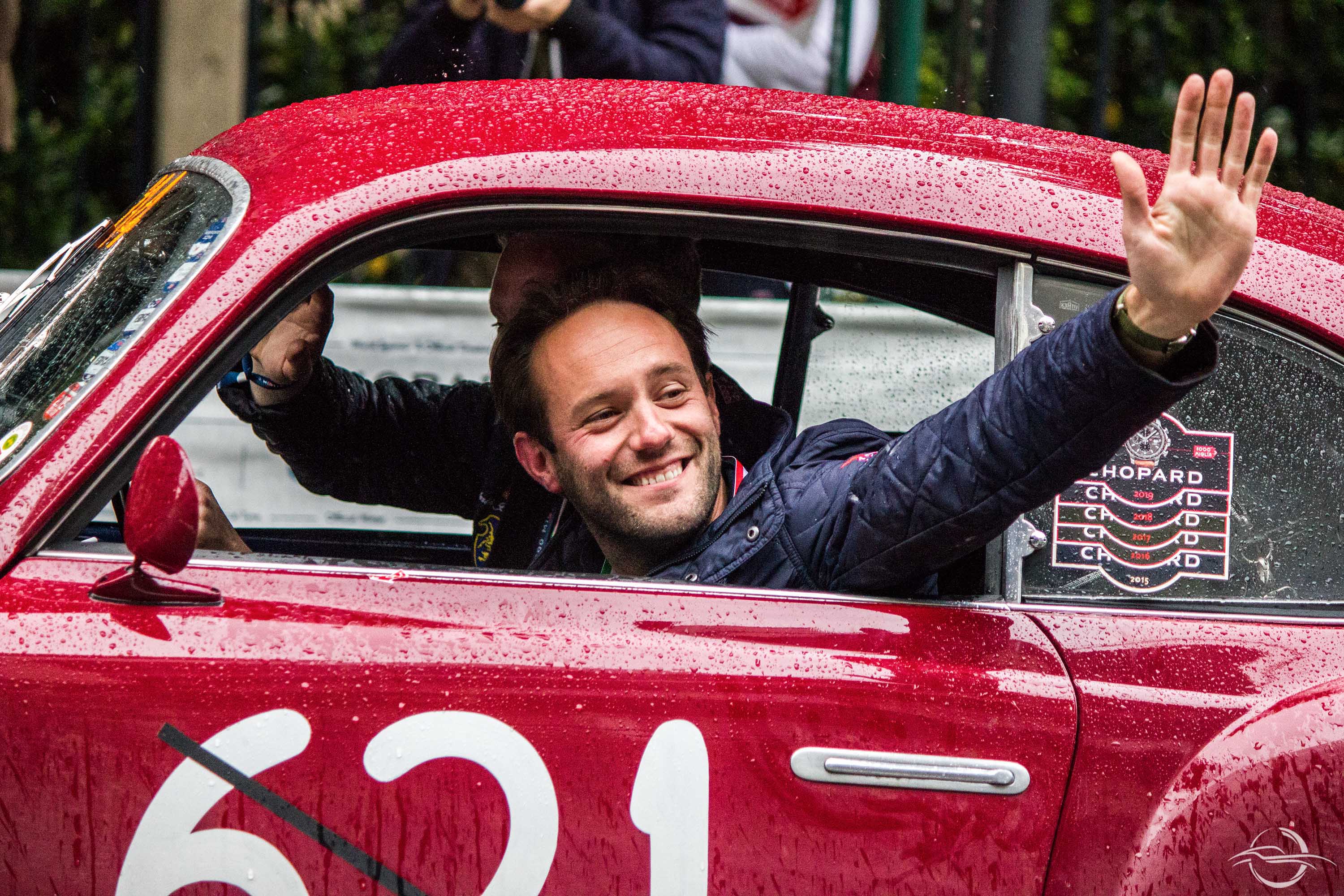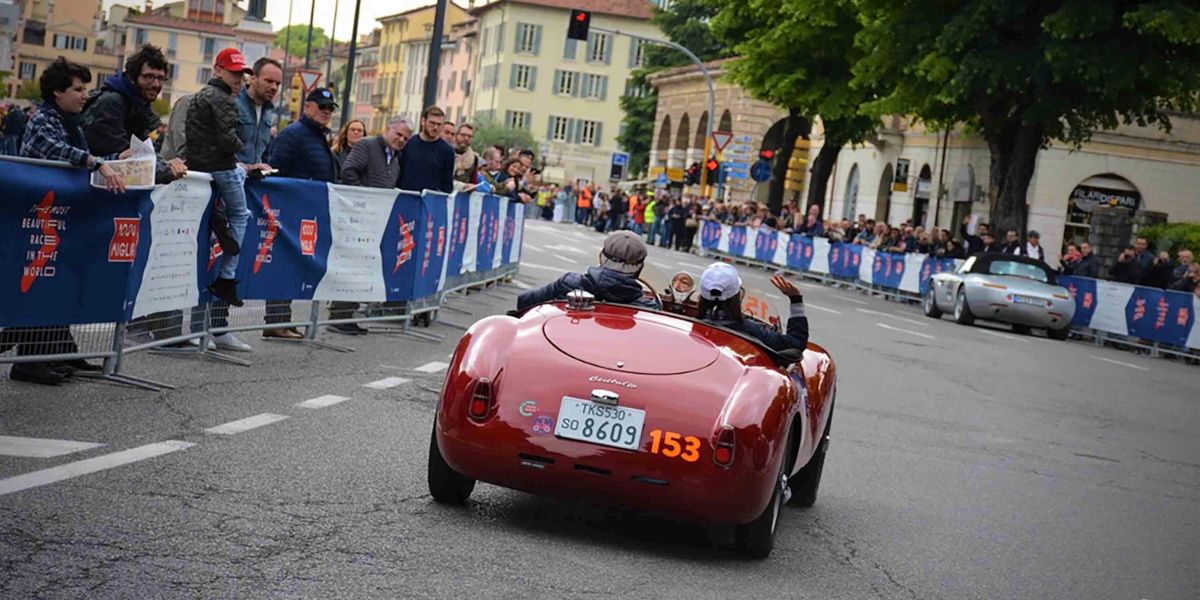Piazza Vittoria is behind me, the chaos of the arrival has calmed down. The Mille Miglia is over. The intense smell of petrol is still lingering in the air and on my clothes. Olfaction, the sense that we develop first and helps us to get to know the world surrounding us, opens up a suggestion straight away. I imagined the Flying Mantuan victoriously crossing the finish line, in 1933.
While walking towards the car park, I notice a child with his grandfather, getting in their Fiat 500. I rush towards them to take a photograph. It’s not great, but notice how many flags he’d collected!

The unmistakable 500’s noise is getting further and further, but I have the photogram of the special day of the two accomplices clear in front of me. Close, hand in hand, the grandfather with his reassuring voice involves the little one and encourages him to dream. The story is even more exciting when it is told by someone who lived it…
– When I was a child, this race was part of us, of our life. I waited on that day for months on end. I was allowed to skip school for the Mille Miglia, I got up during the night to go and see my idols driving past… Many things have changed since then, but not the charm, that has remained unspoilt”.
Memories are out of control, intertwined, and they pour out as an impetuous waterfall, with no interruption. Filippo’s gaze is taken by his grandfather’s words. Truth and legend overlap.
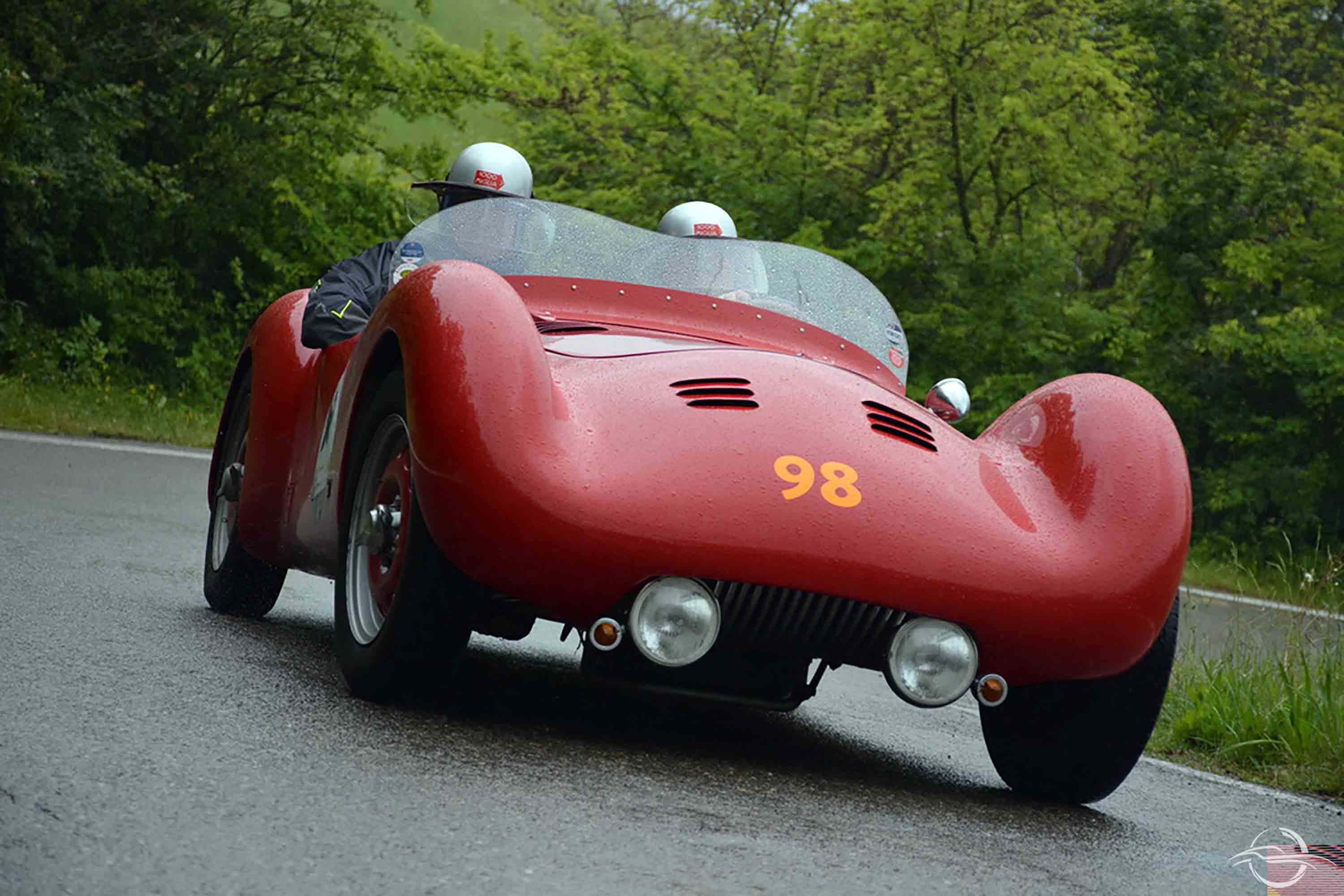
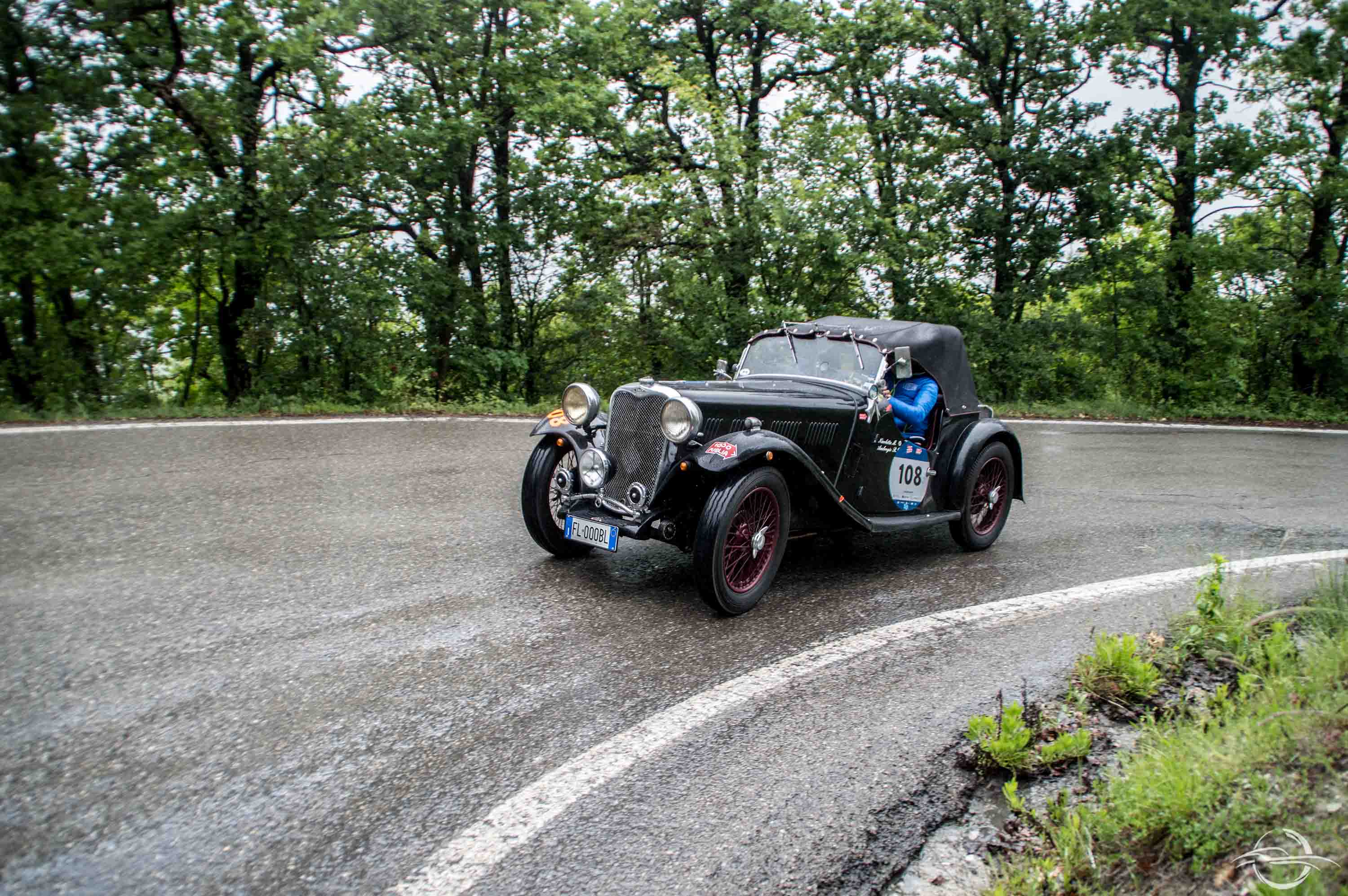
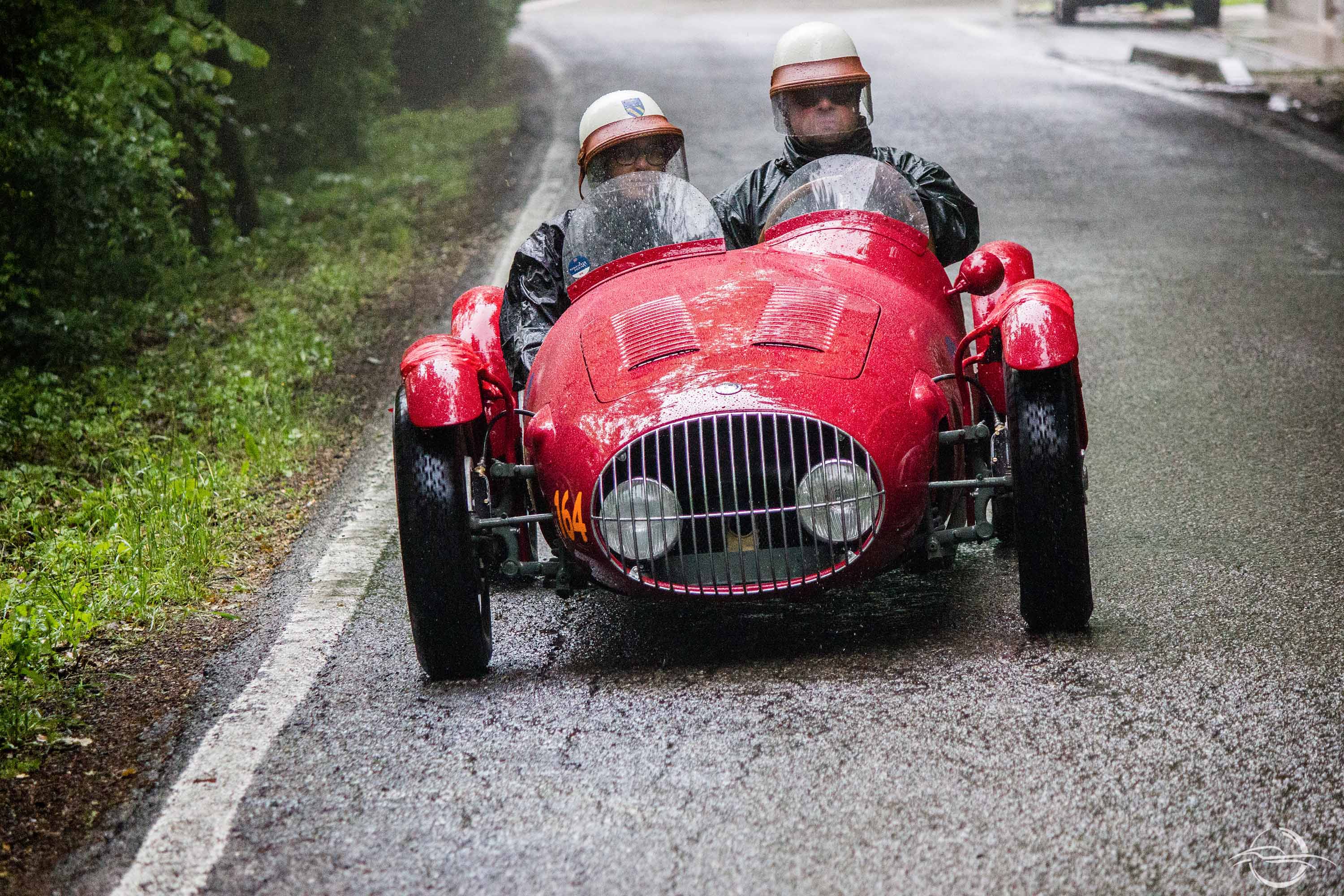
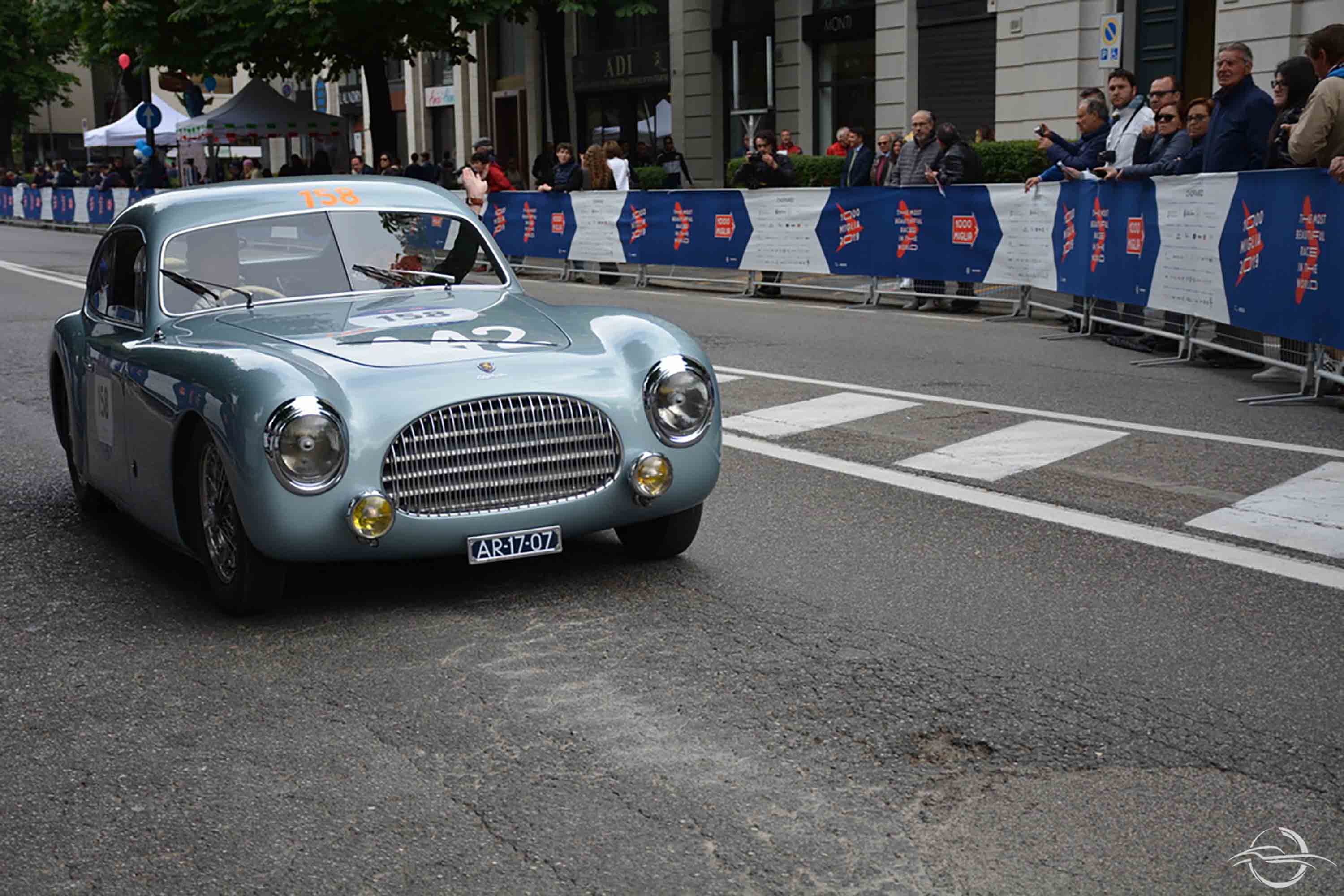




– I was there, I saw Achille Varzi crossing the finish line with my own eyes, I think it was around 1934. You need to know that there was a duel in the course between Varzi and Nuvolari. We were nervous, we didn’t have all of the information that we have today and we had to wait on the arrival to find out who actually won”. Filippo pretends to imagine, who’s going to stop his granddad anyway?
– A few years earlier, at the real Mille Miglia, Achille, a driver from Galliate, was hugely humiliated by Tazio Nuvolari. Varzi didn’t realise that “Nivola” had caught up with him. This crazy driver used to race at night with his lights switched off, he managed to go unnoticed by Achille and he overtook him just before the finish line and he won… poor Varzi, what a humiliation! – Filippo nods his head, well, with all of these names and nicknames.
– Let’s go back to the duel… so, Tazio was driving an Alfa Romeo 8C 2300, he was the driver of the “Biscione”. While Enzo Ferrari, who had been left with no car by Nuvolari, had lined up his adversary par-excellence: Varzi with an Alfa Romeo 8C prepped by the Ferrari team and with its engine size enhanced to 2600”.
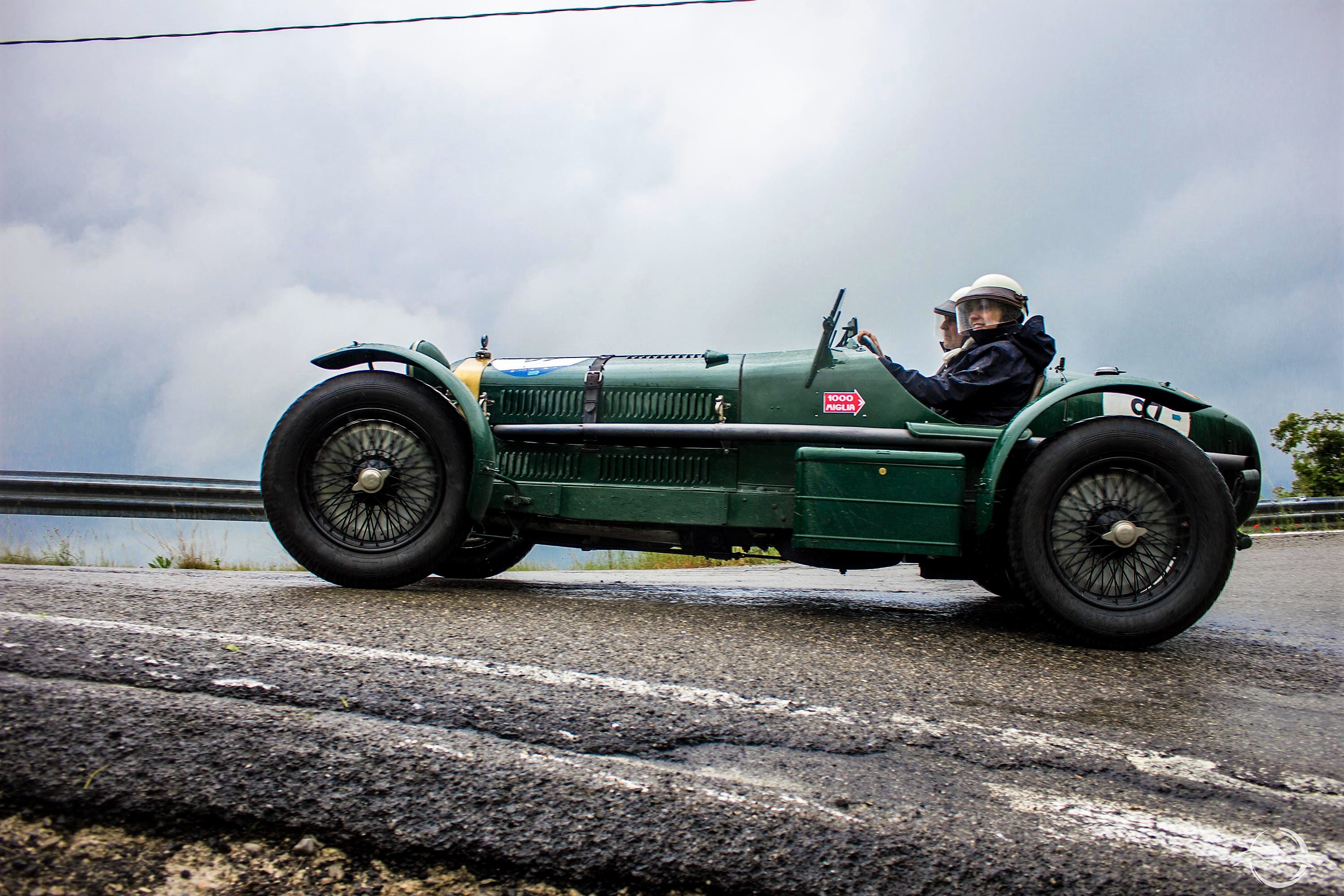
– Grandpa, who did you support?
– Prior to the arrival, I used to support Nuvolari, but after that, I supported Varzi. I was a child, I supported the winner. Today I’m happy that Varzi took his revenge, he was a great driver. Achille was in excellent company, by his side there was Amedeo Bignami, another great driver and very experienced mechanic. What more do you need?! Let’s get ready now, they’re about to start, come by my side and I’ll tell you more…
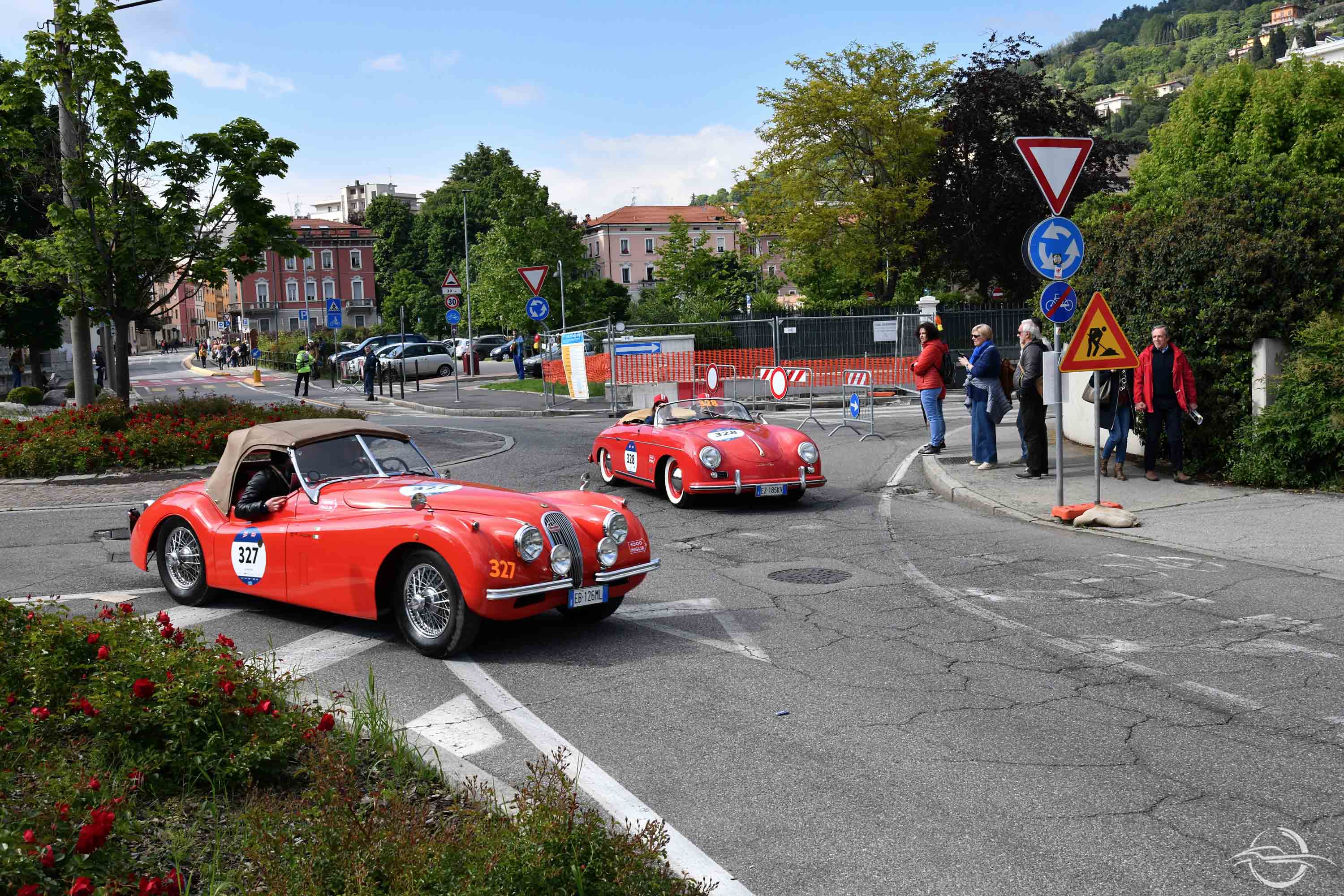
The punching is told through the images. The tension for the last few repairs and then everybody is in the square… with an umbrella. Piazza Vittoria is turned into a nest of warriors and explorers, cars and people who move frantically. The “travelling museum” is nearly ready for the start. The warm temperament of the Italian enthusiasts didn’t get put off by the cold and rainy weather, the participation was energetic: Italian-style!
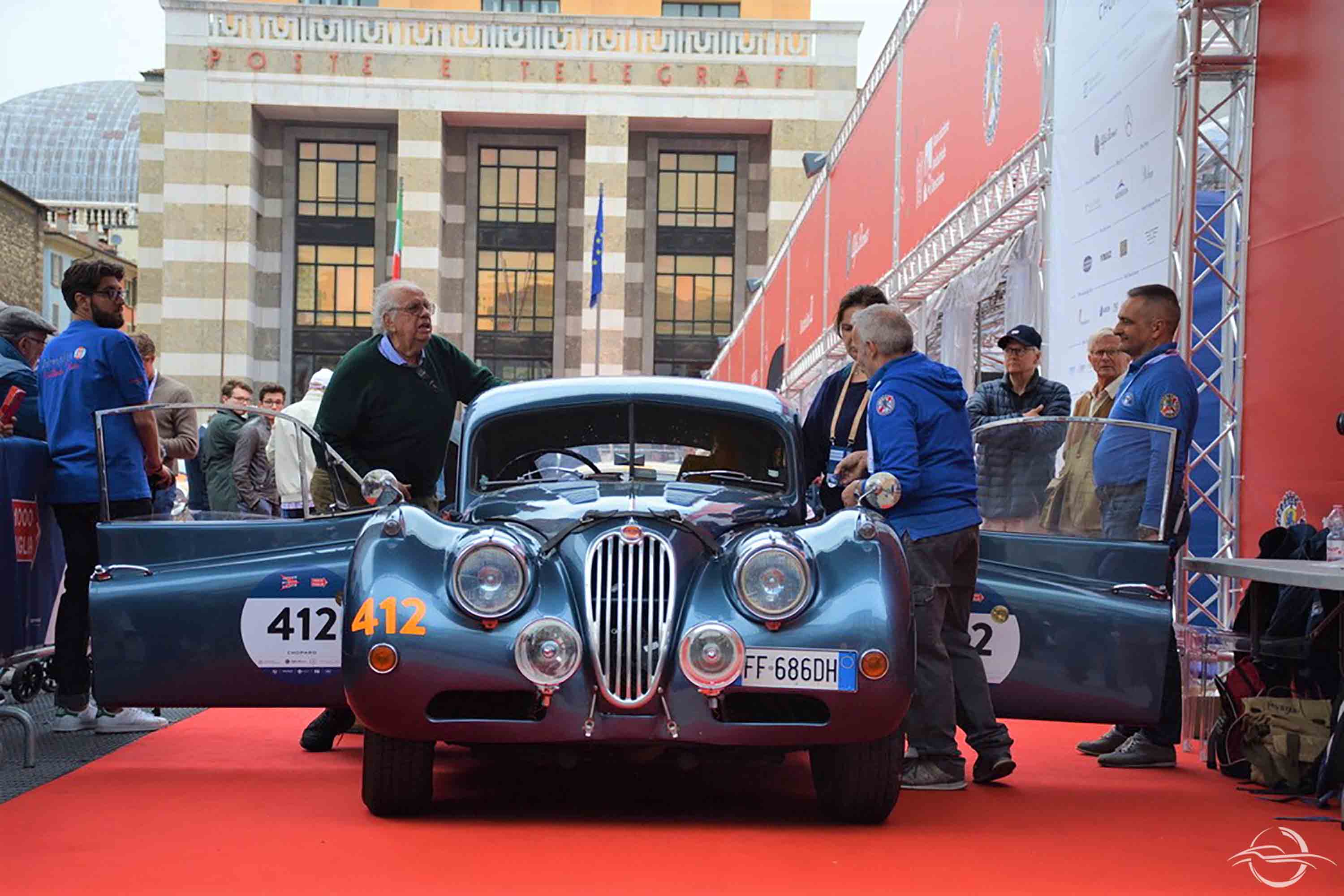
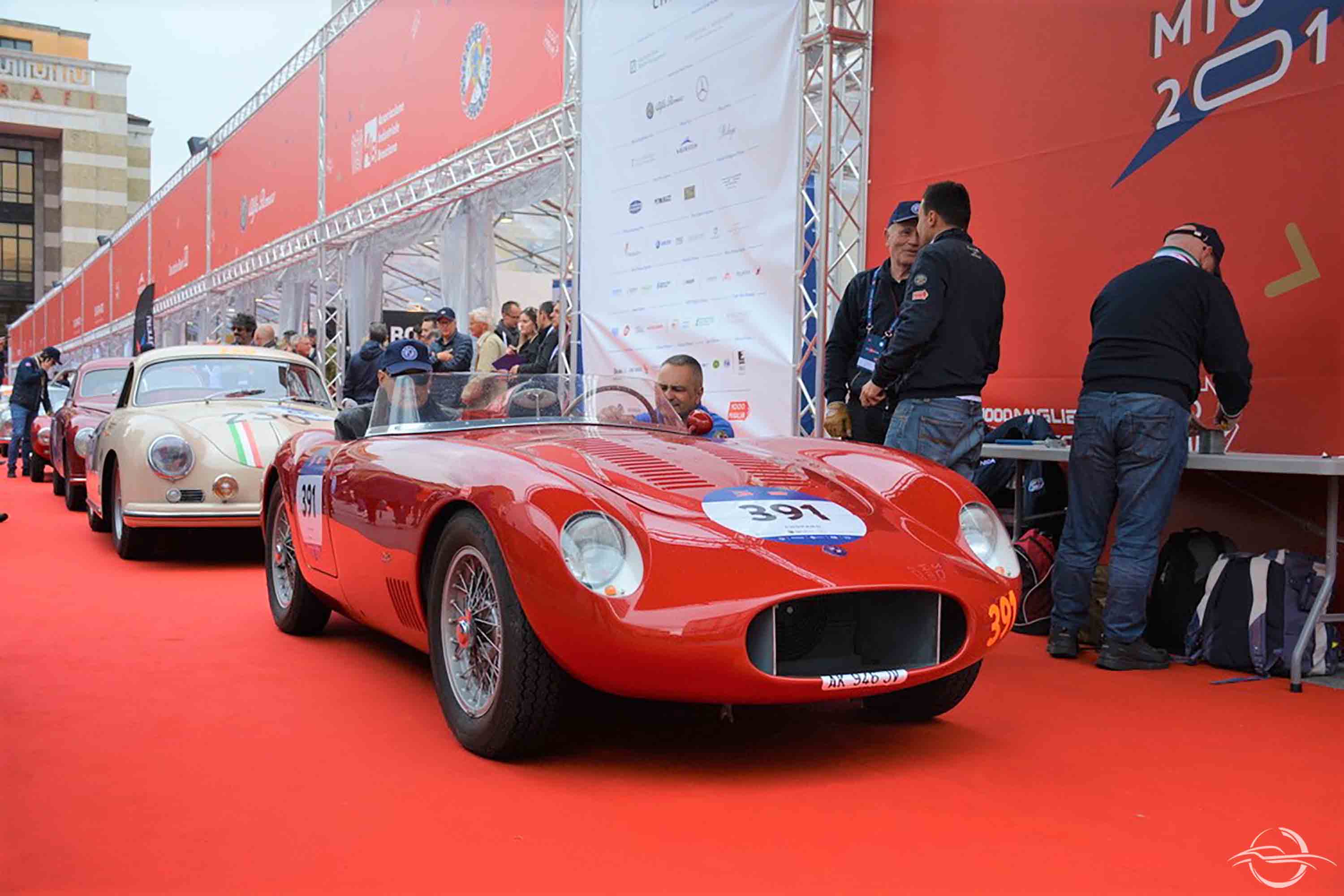
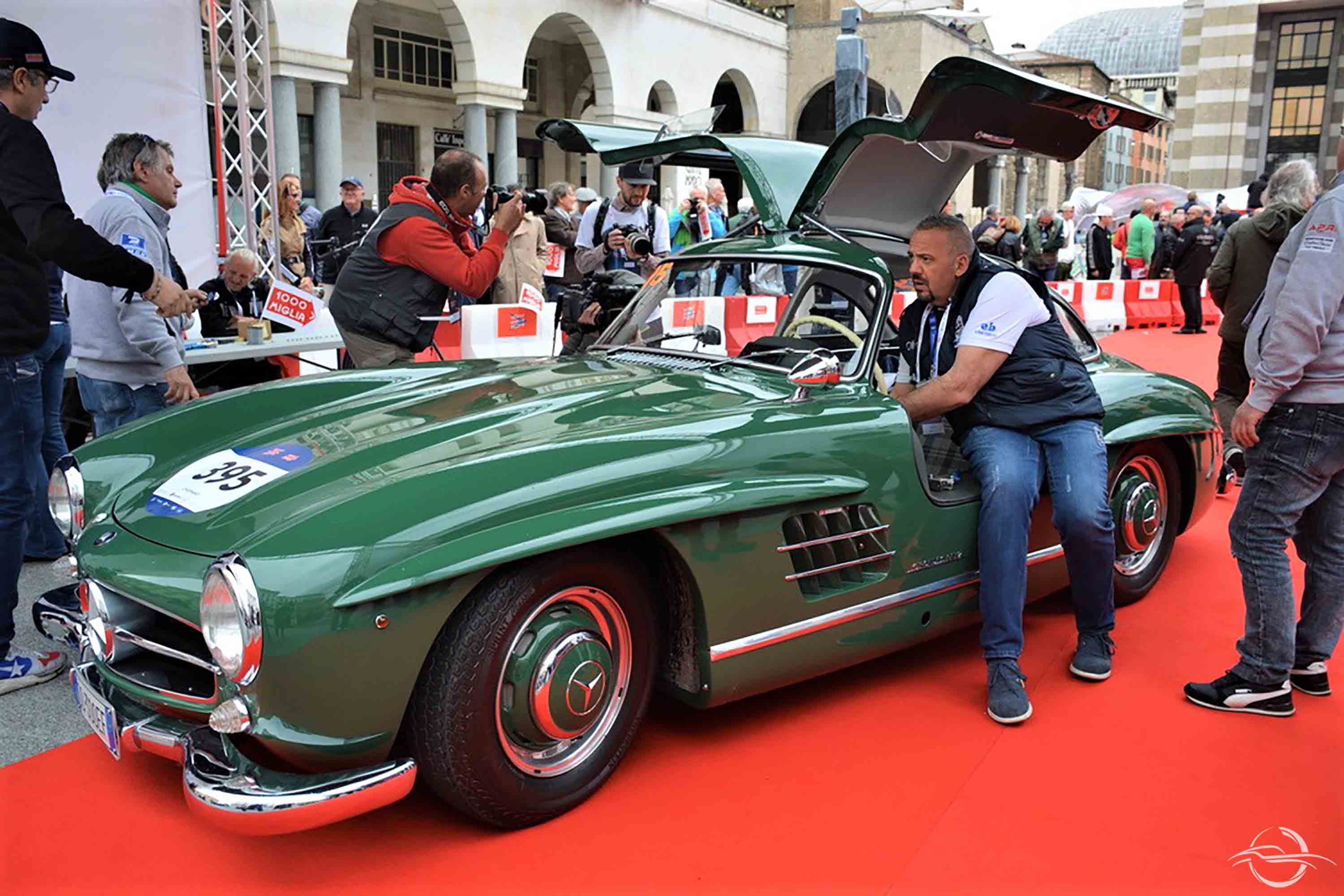
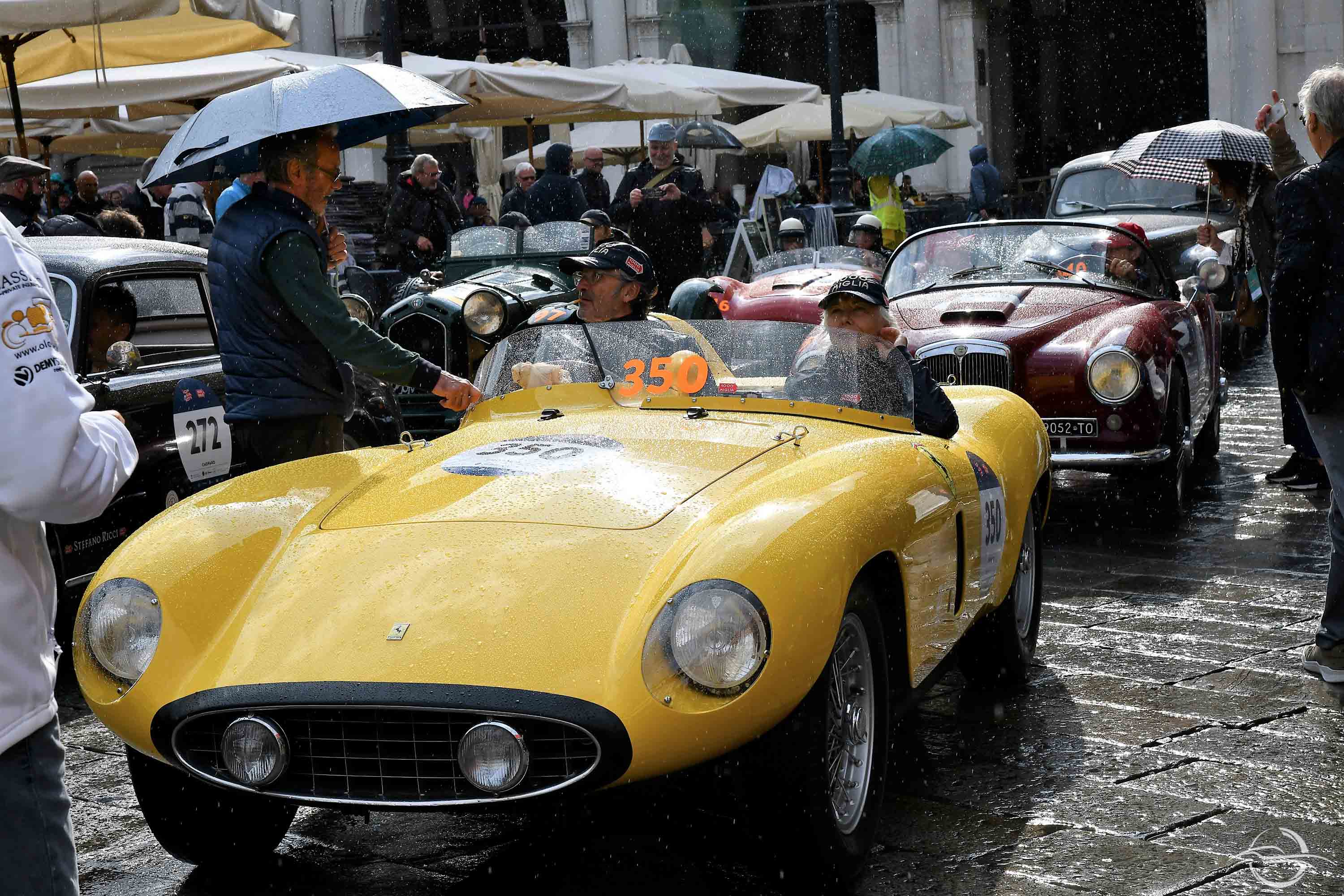
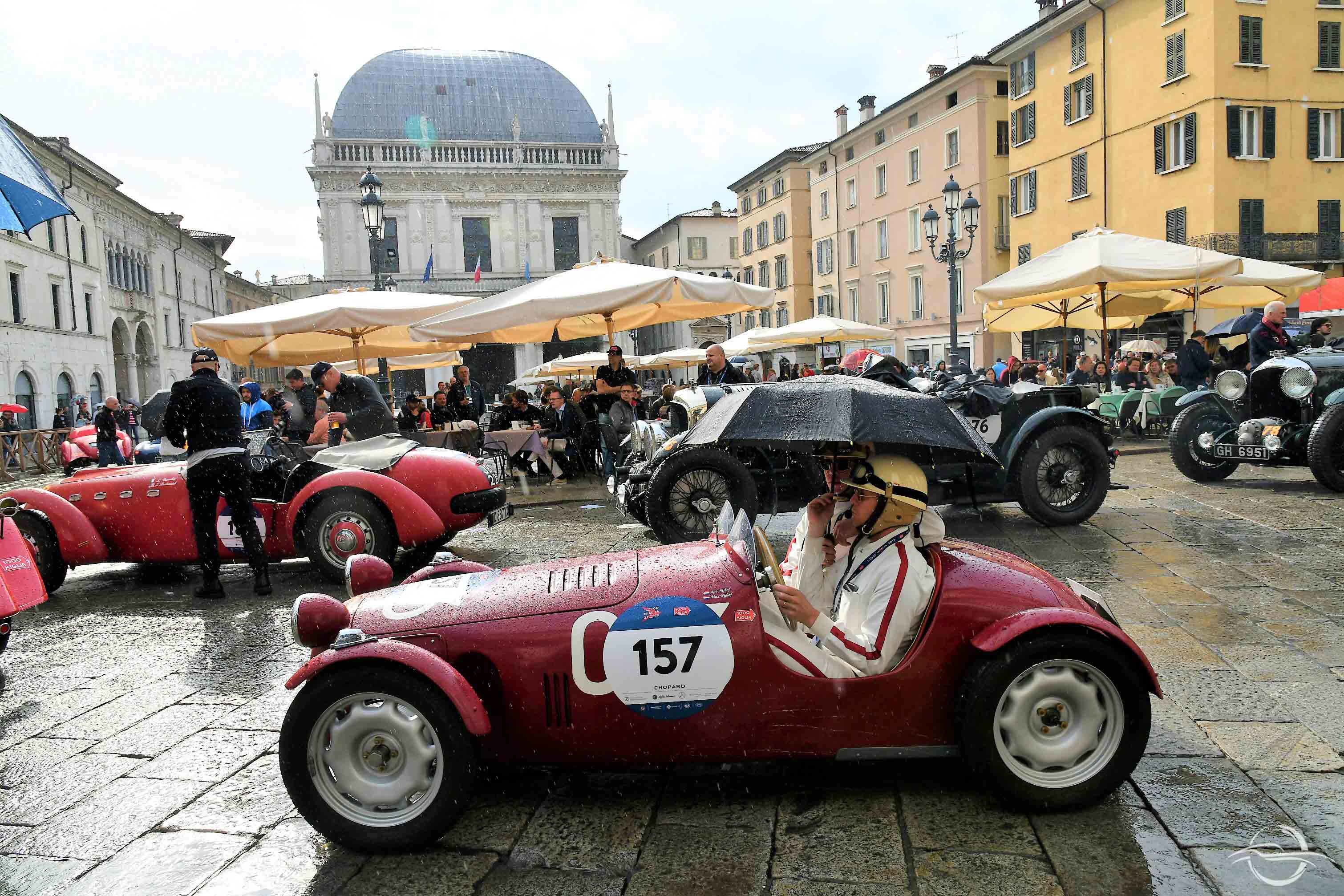
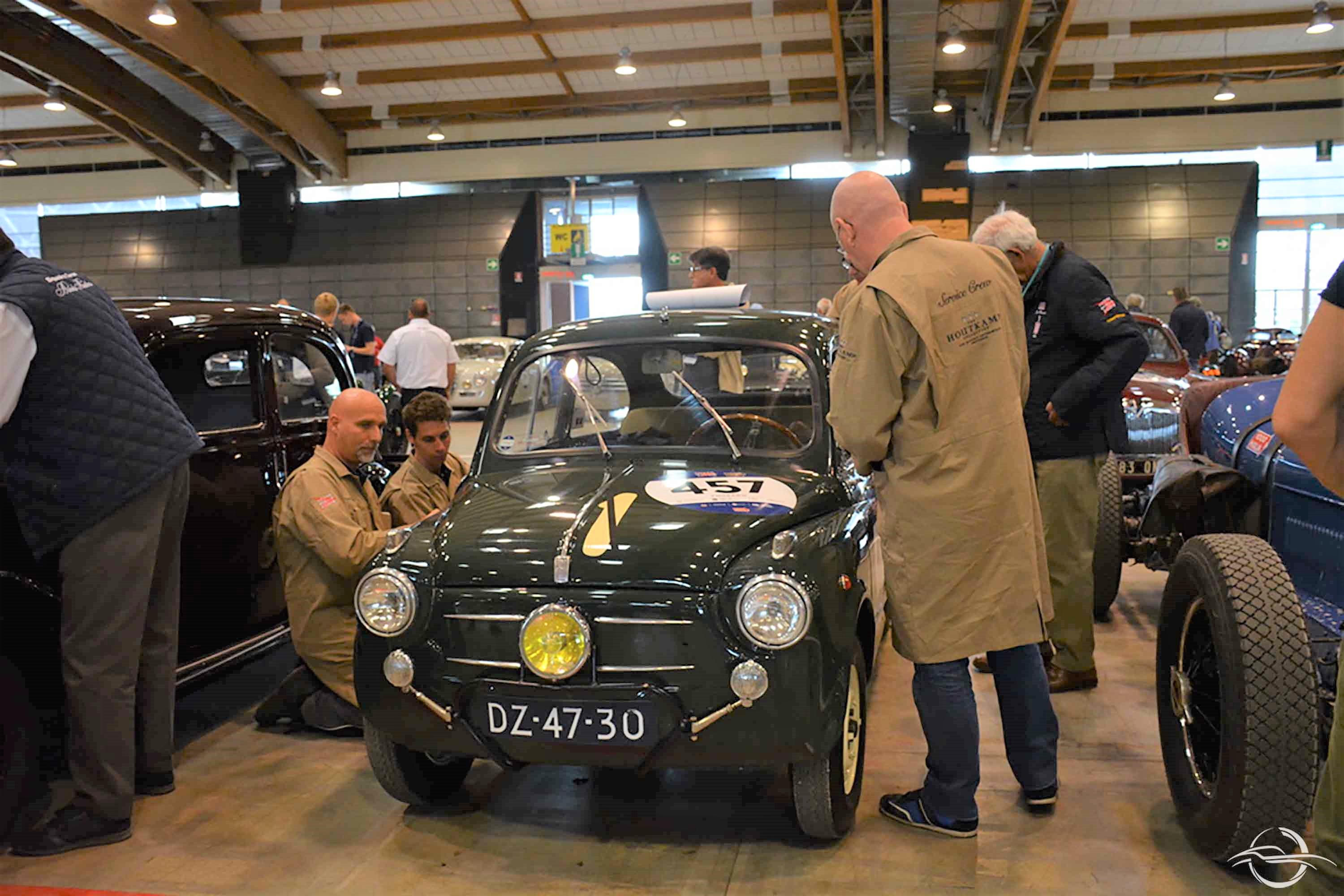
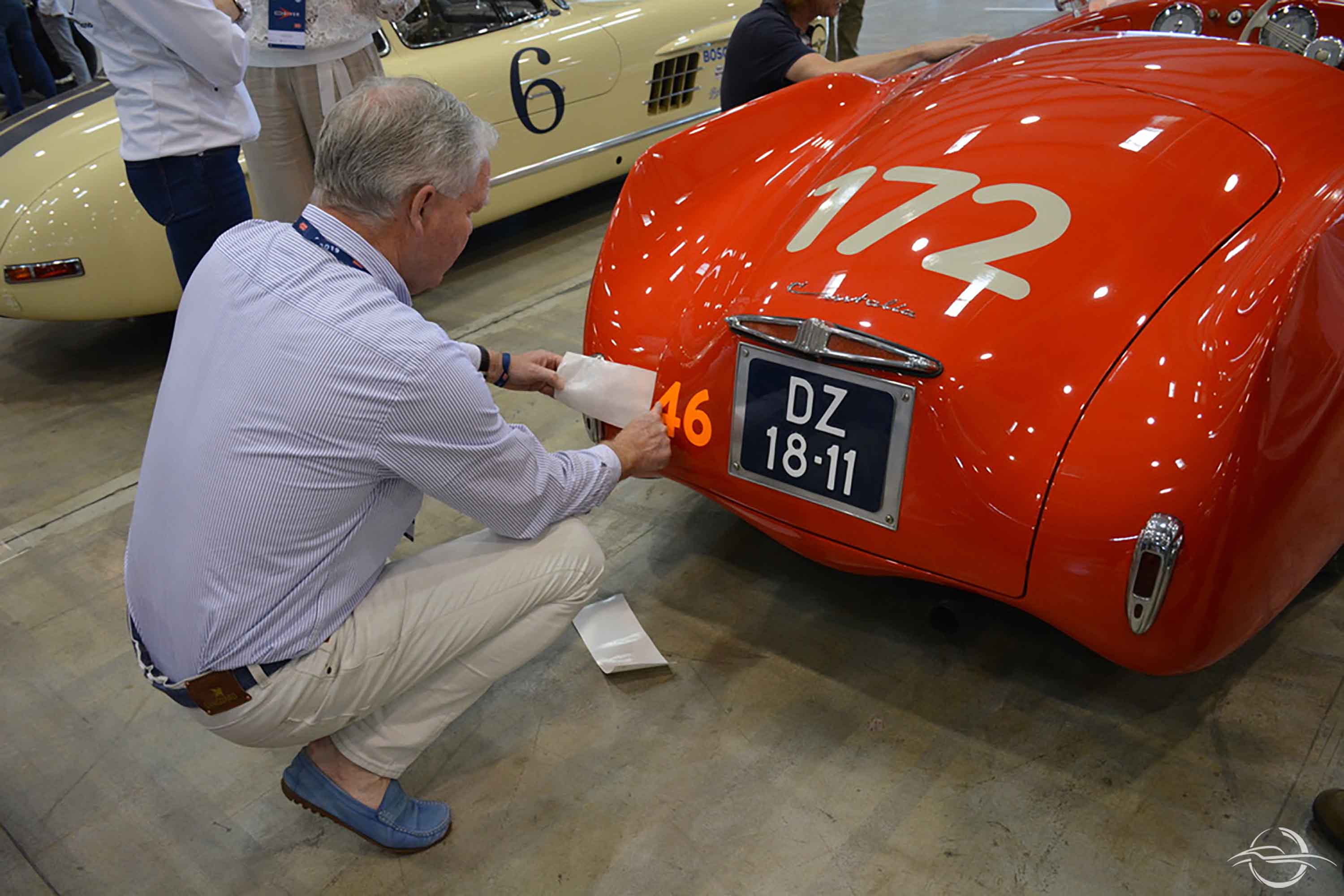
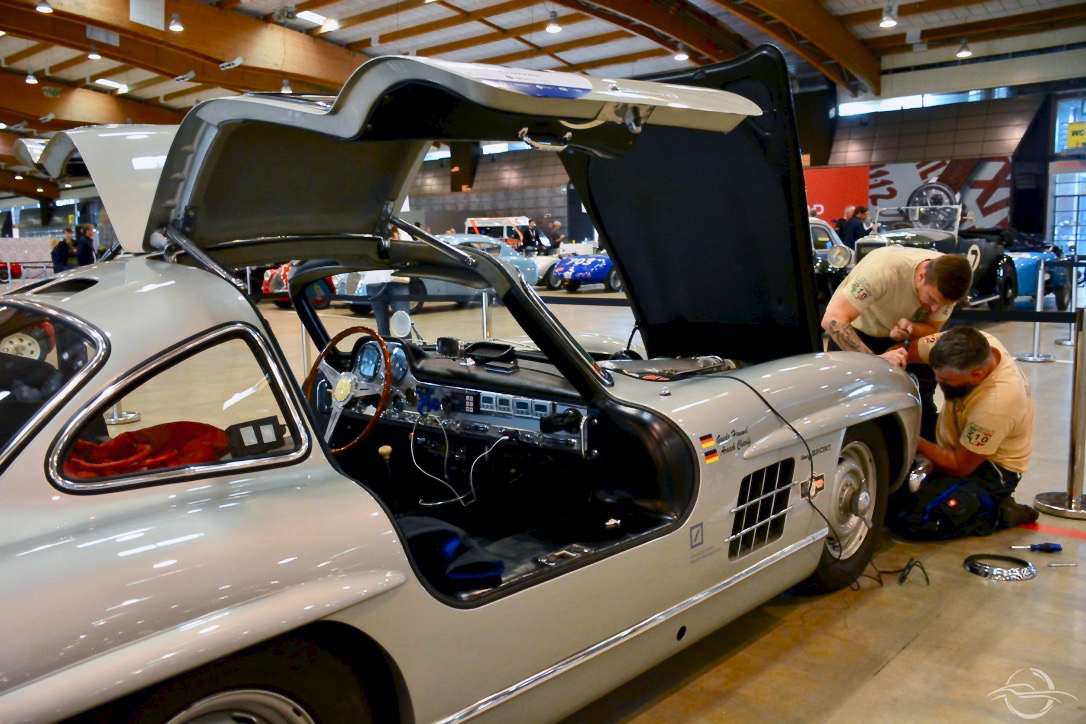
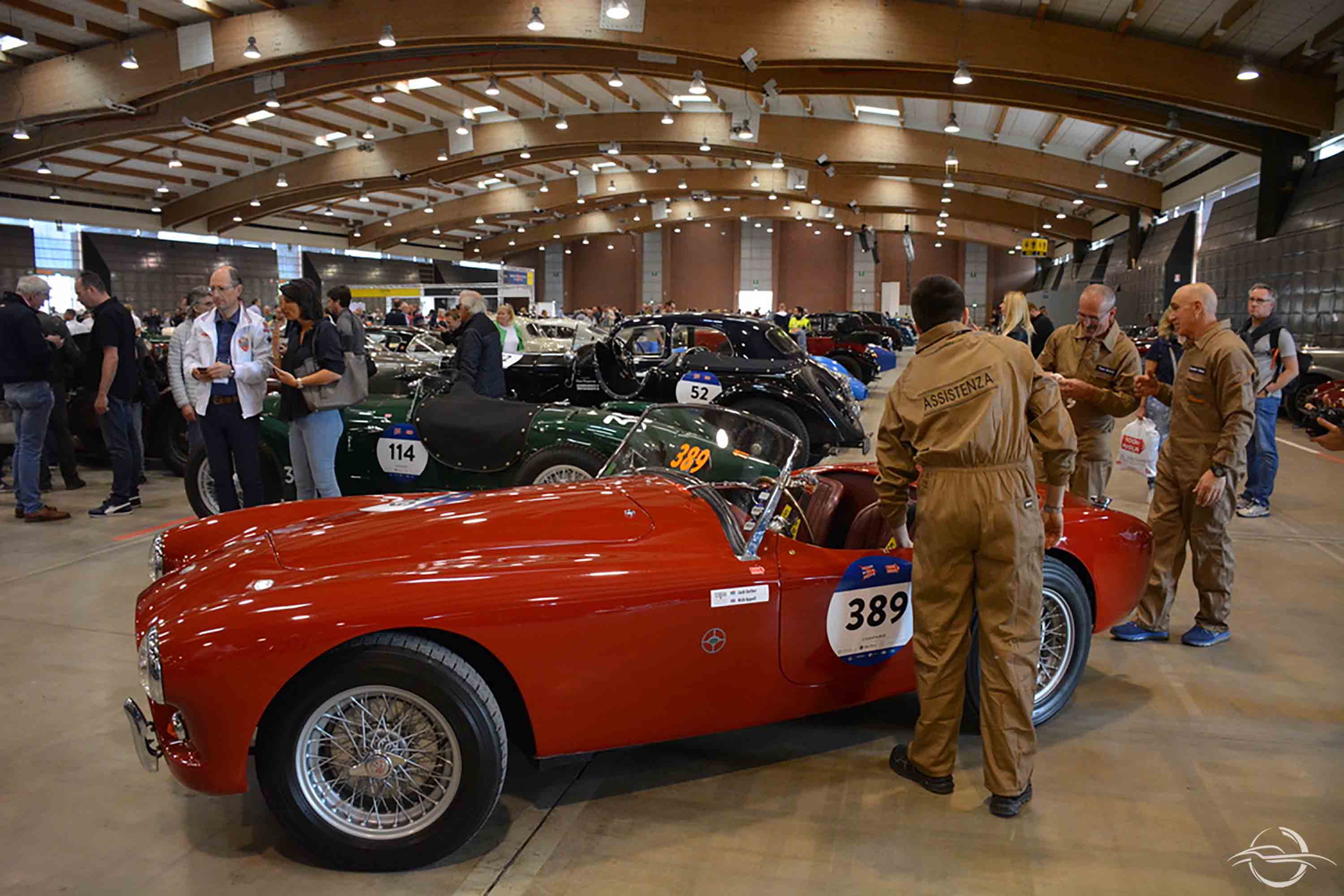










A hand on your heart for the Italian national anthem. Then, everybody looks up to see the Tricolor Arrows and that green, white and red wake that they leave behind which makes us Italians feel like peacocks.
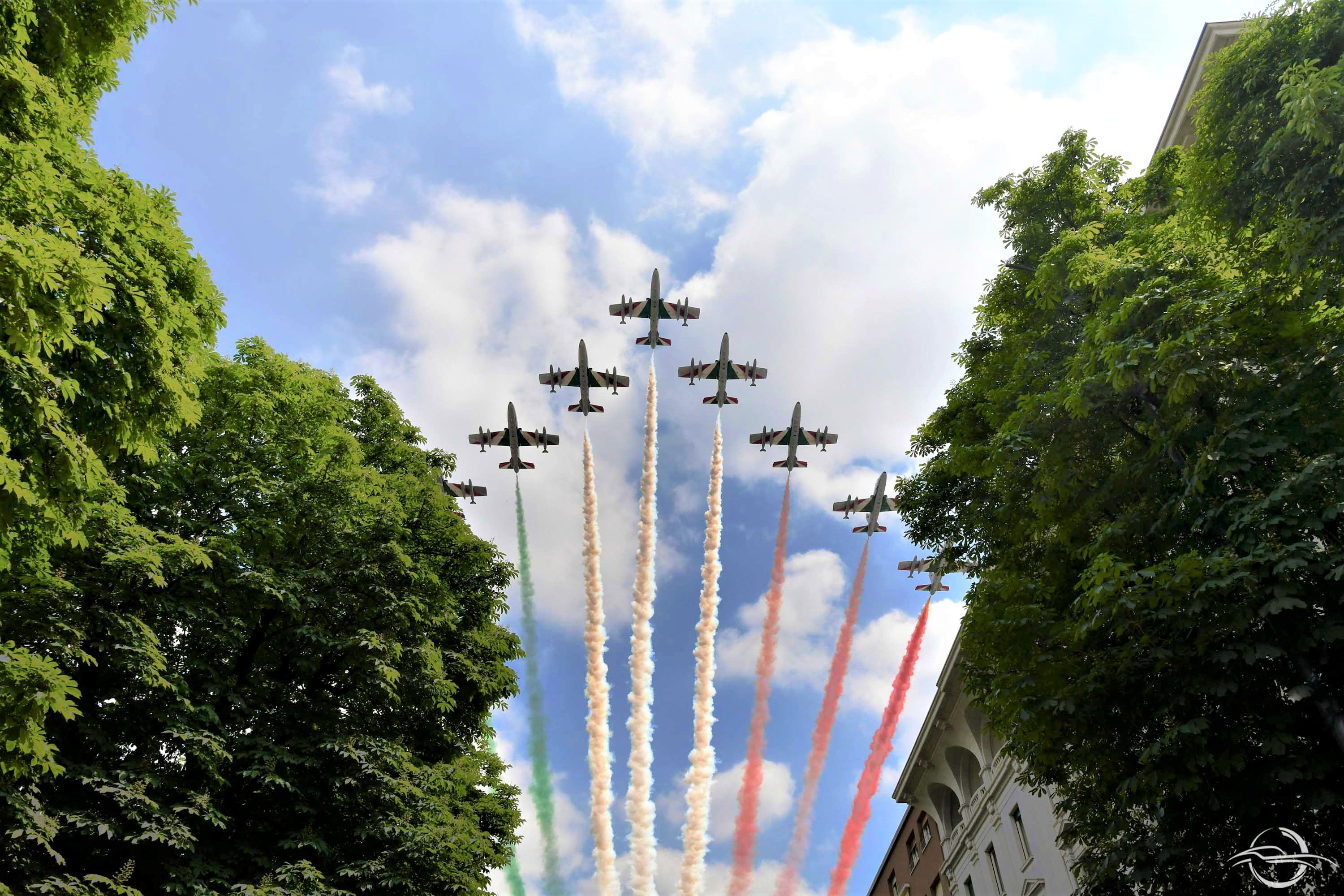
After warming up the heart and preparing the eyes, we’re ready to let the emotions take us over, for the historical Mille Miglia remembrance, which has now come to its 37th edition.
The countries of the teams at the start are 336 and Italy is the most represented country, with 303 subscribers. Followed by the 133 Dutch participants, 52 from Belgium and 12 from Luxemburg. The Americans are increasing, they had 64 teams, while the Japanese number 16. To close this global overview 86 teams came from Germany, 29 from Switzerland and 74 from the United Kingdom.
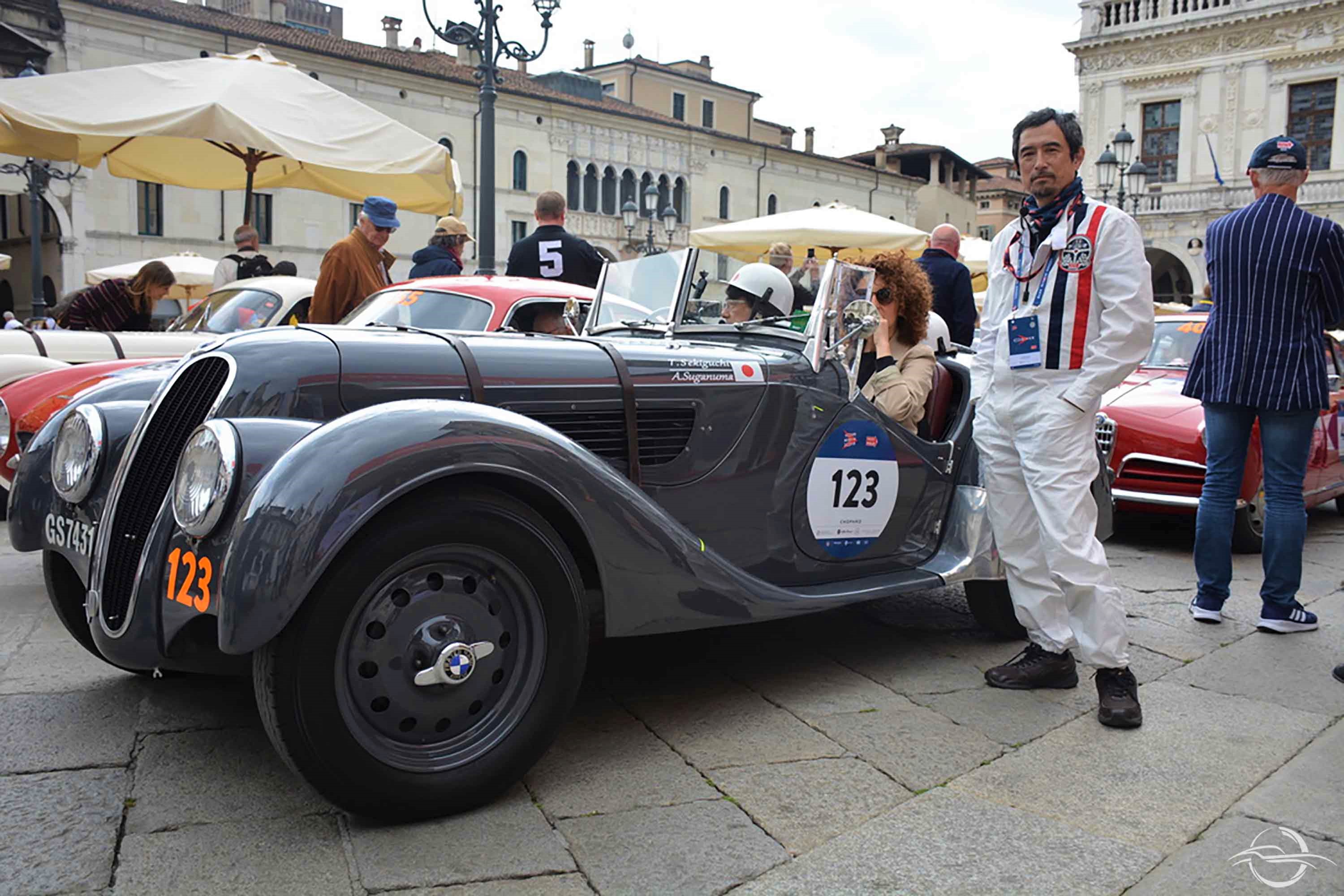
The most represented car manufacturer is Alfa Romeo, with 44 cars, followed by Jaguar with 35, FIAT with 33, Mercedes and Lancia with 29.
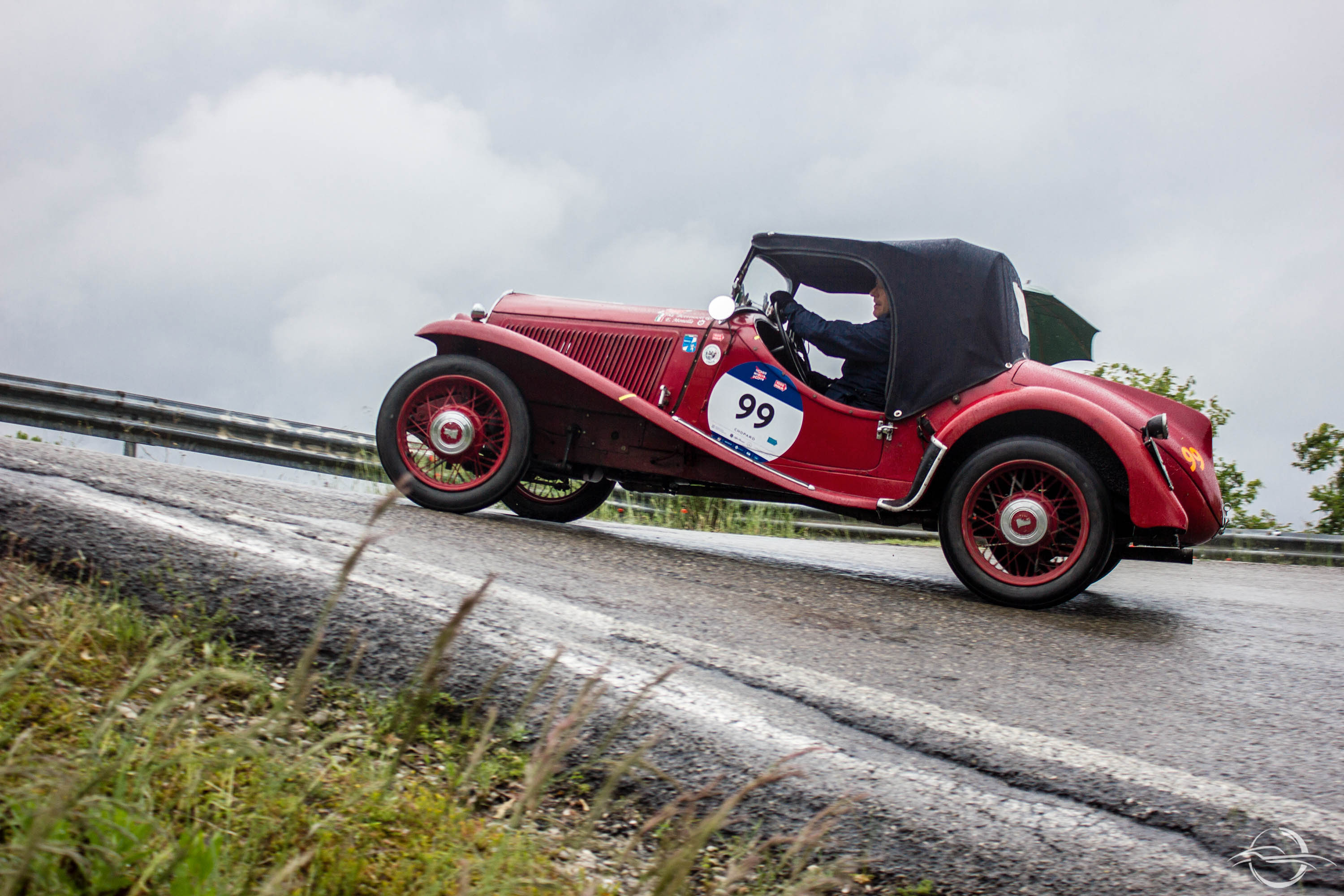

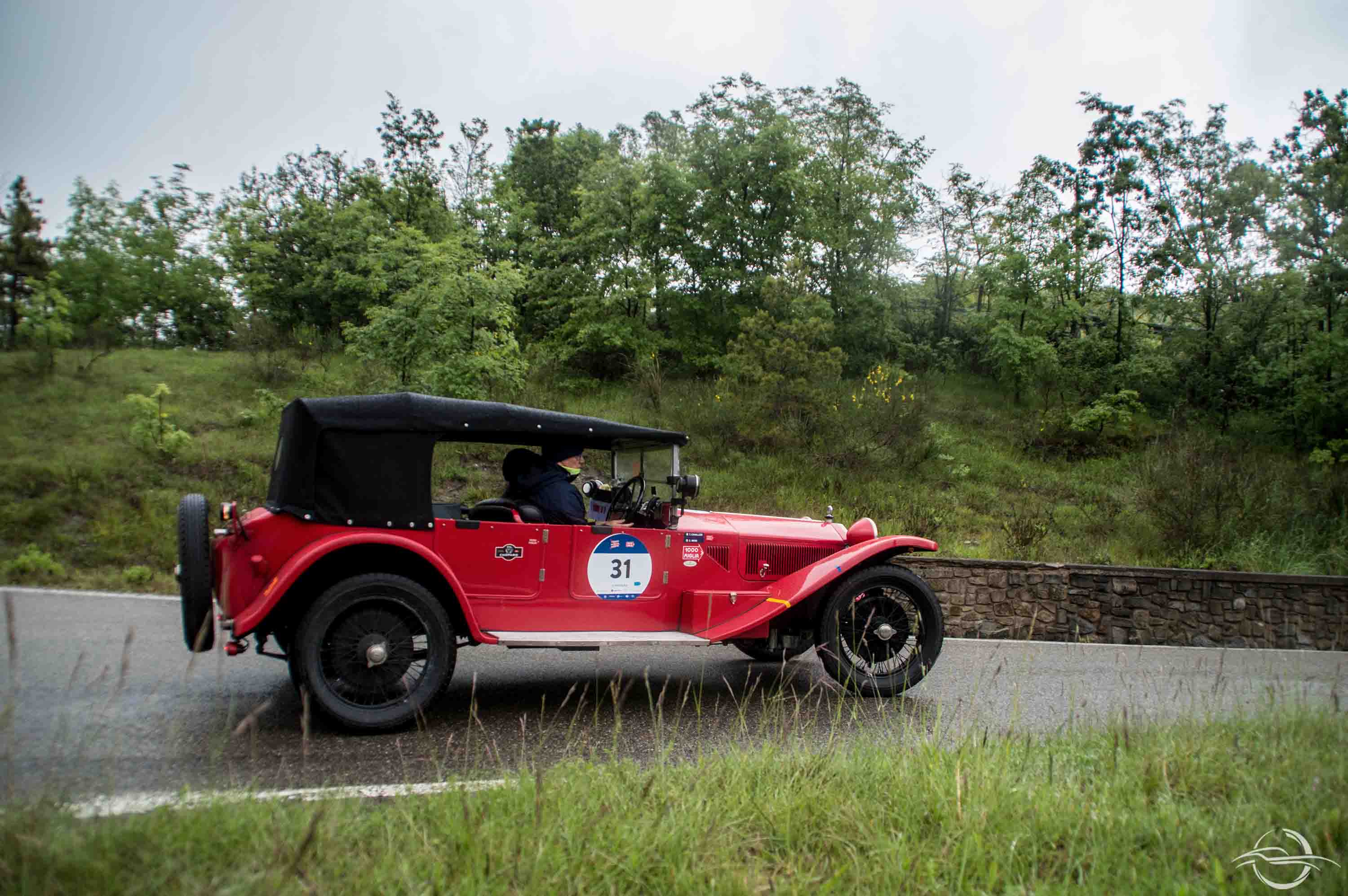
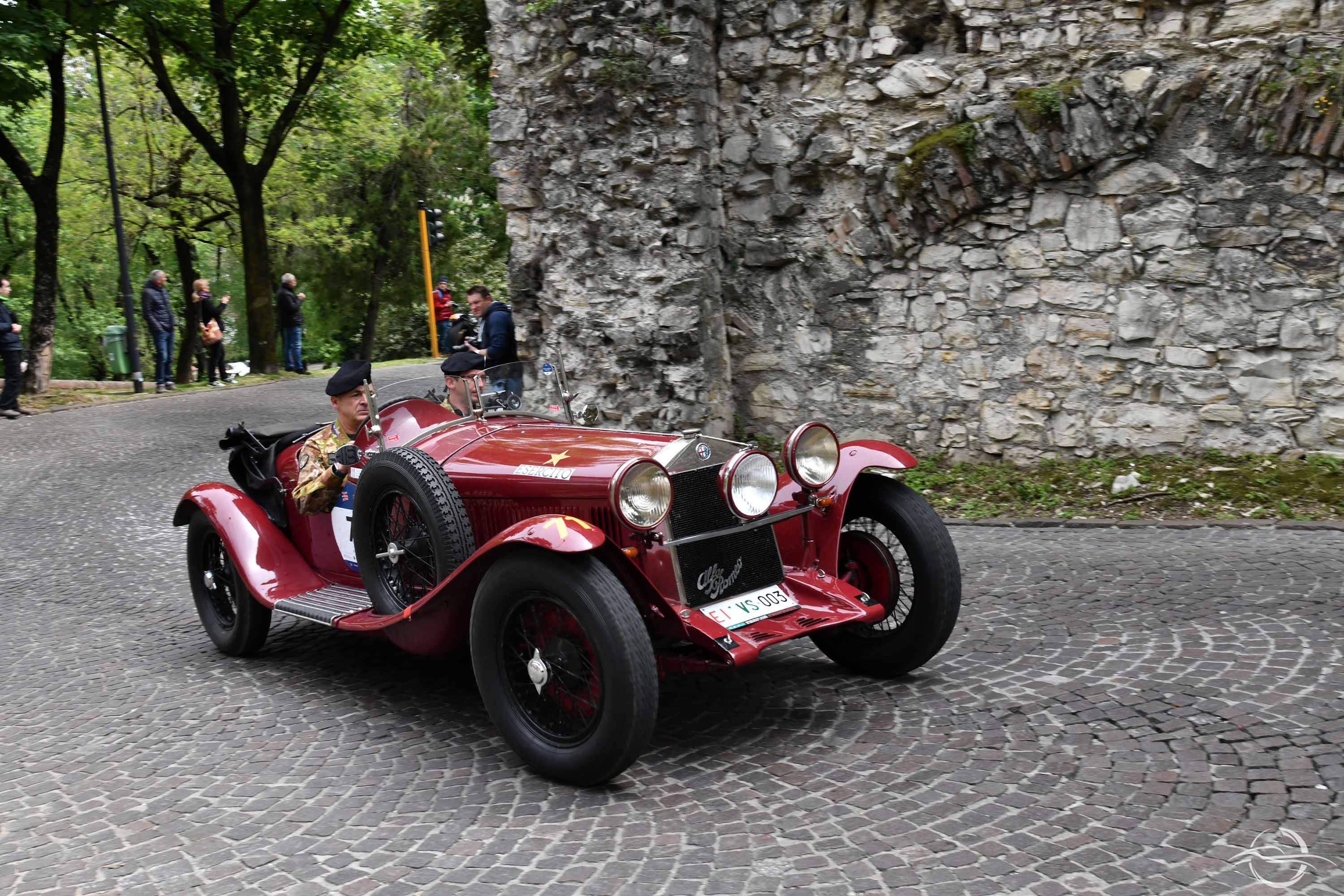
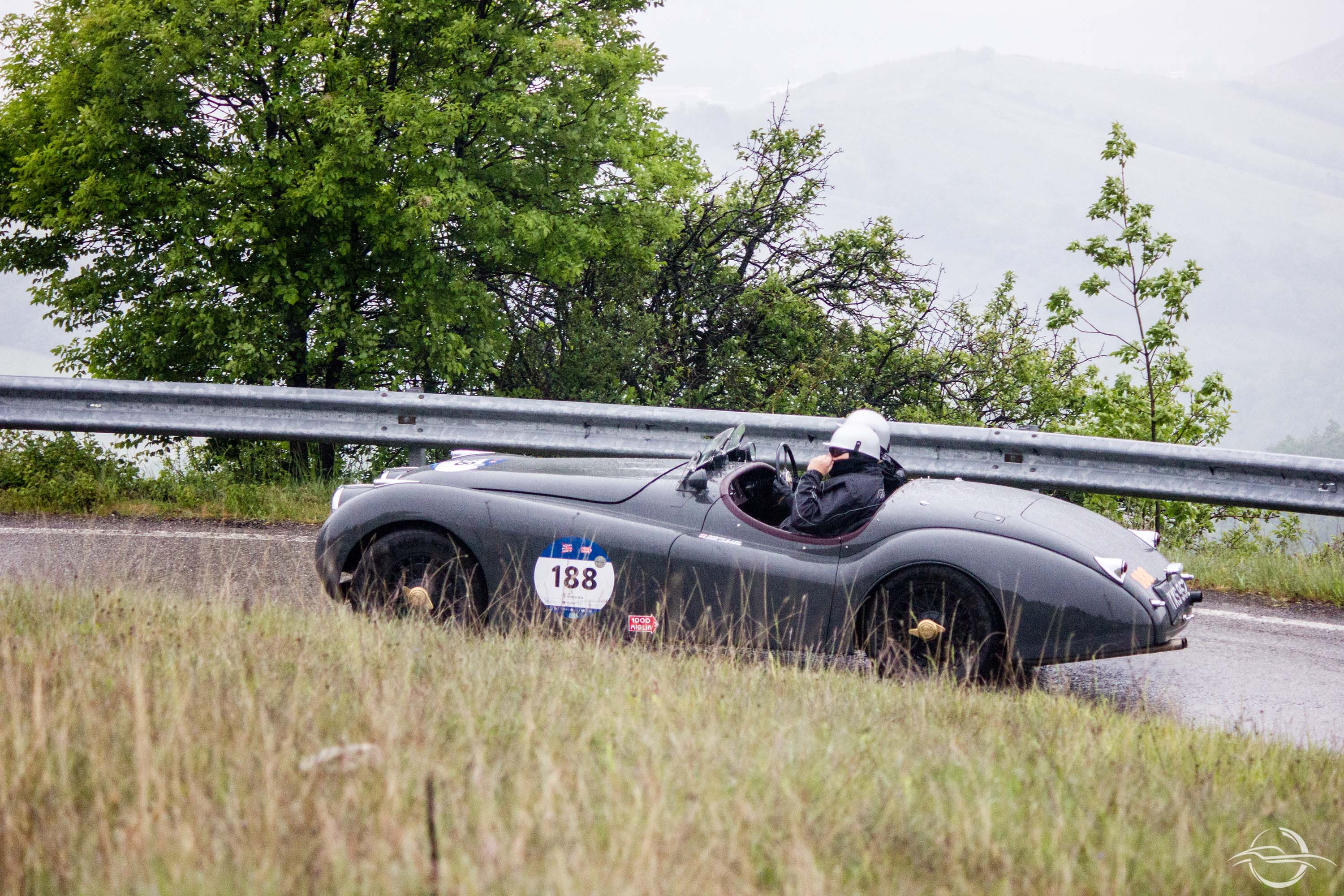






– Grandpa, you know them all!
– That one is a Mercedes 300 SLR. The 8-cylinder engine is equipped with a desmodromic distribution and direct petrol injection, with a cylinder size of 2982 cm3. At the Mille Miglia start in 1955, the Mercedes had four of those in the competition: the 638 with Fangio, the 701 with Kling, the legendary 722 with Stirling Moss and Jenkinson and the 704 with Hans Hermann, which is standing right in front of us, mark this face in your memory…
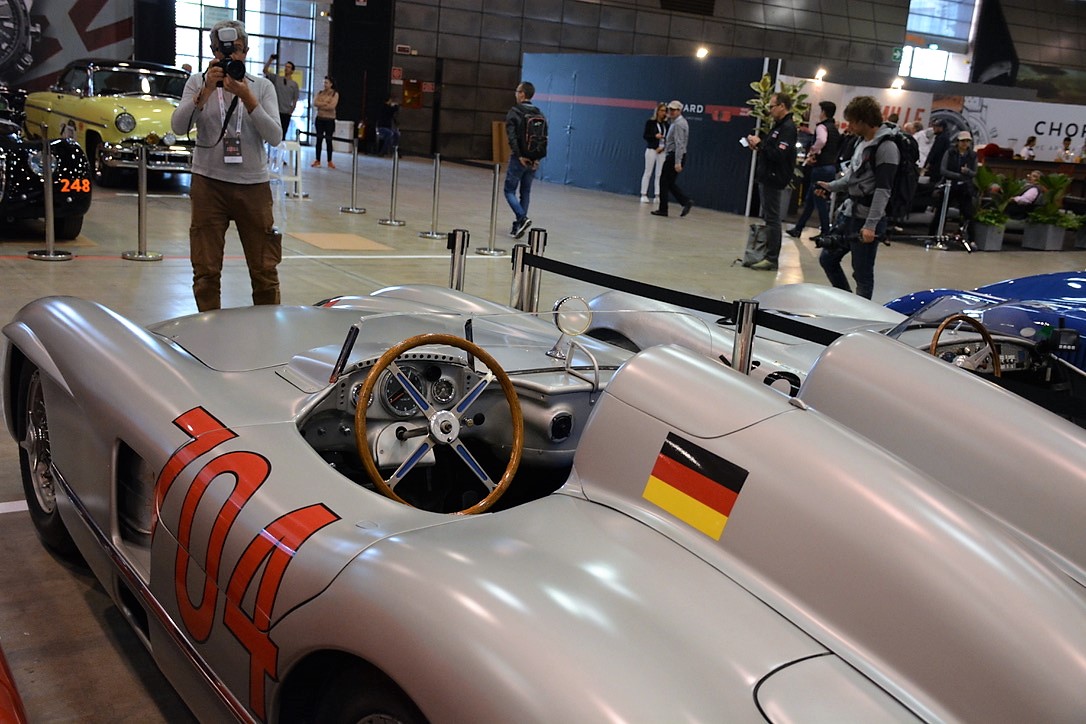
– Why is it legendary?
– The racing numbers corresponded to the time of the departure. Therefore, at 7:22 on the first of May, Moss and his co-pilot cross the starting line. The brave Jenkins, was an English journalist, he had built a small “magic” box. Six metres of paper were contained in it and the meticulous Jenkins noted down all of the bumps, obstacles, irregularities of the journey. Moss and he drove over the whole circuit for five times. To make it short: Moss drove past the finish line at 160 km/h. During the race he touched 280 km/h. Close your eyes and try to imagine: you’re sitting driving that car, you’re the fastest and you overtake everybody… in 10 hours, 7 minutes and 48 seconds he did the whole journey. An outstanding record! One of the few Mille Miglia editions which were spared by rain.
During this edition, Mercedes has gifted all of their enthusiasts the opportunity to see, touch and photograph the 300 SLR number 704, with their driver, Hans Hermann. In 1955, he had to withdraw due to issues with the fuel tank, how unlucky!
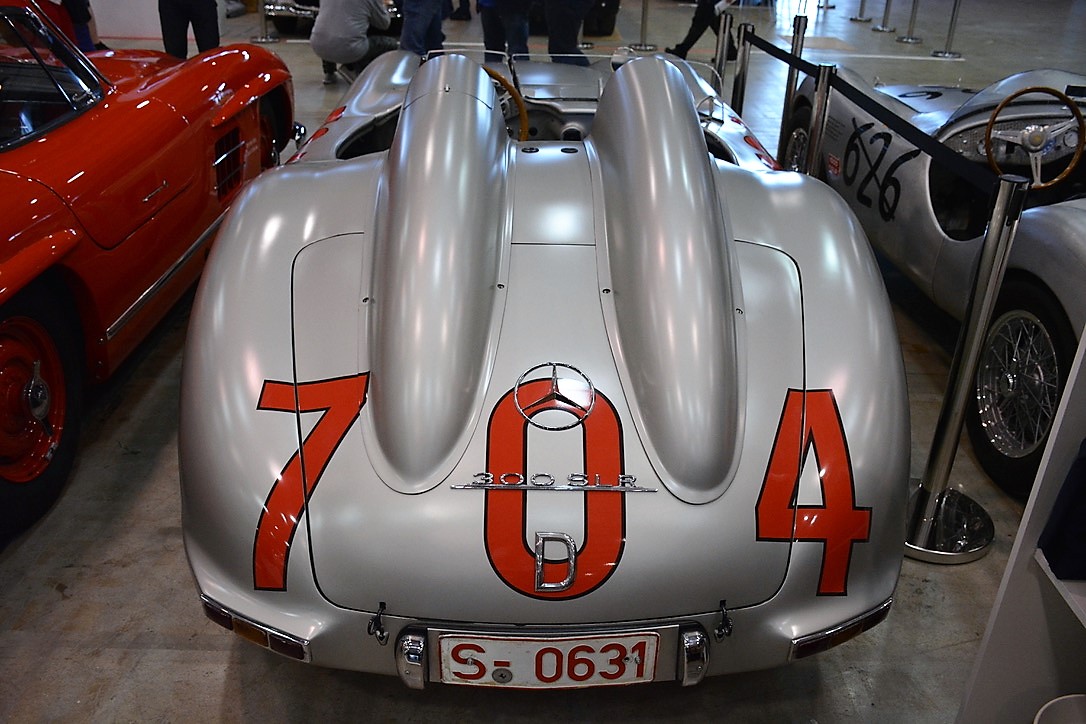
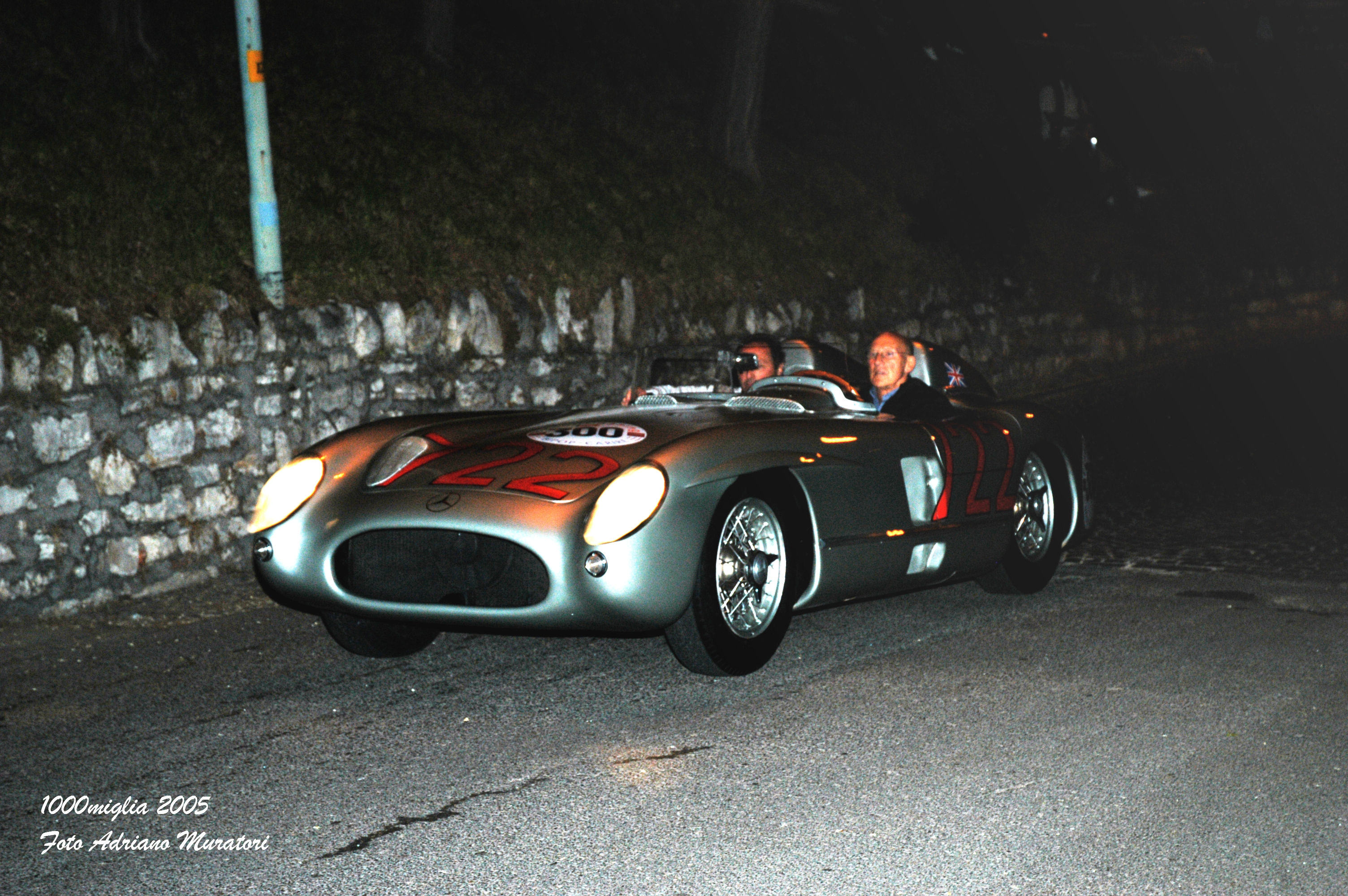
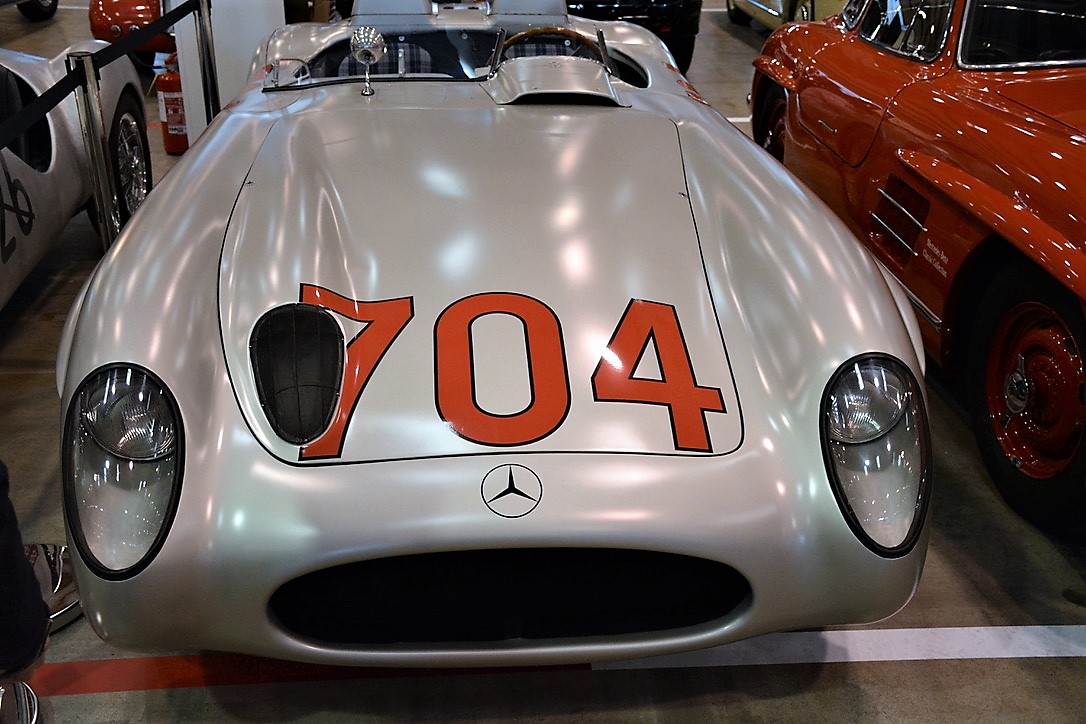




– Why does that car have the number 1000?
– It’s an Alfa Romeo 1900 SS. It’s a unique specimen created by Carrozzeria Bertone in 1954. It bears the number 1000 because it’s this year’s official Mille Miglia car, it opens the race.

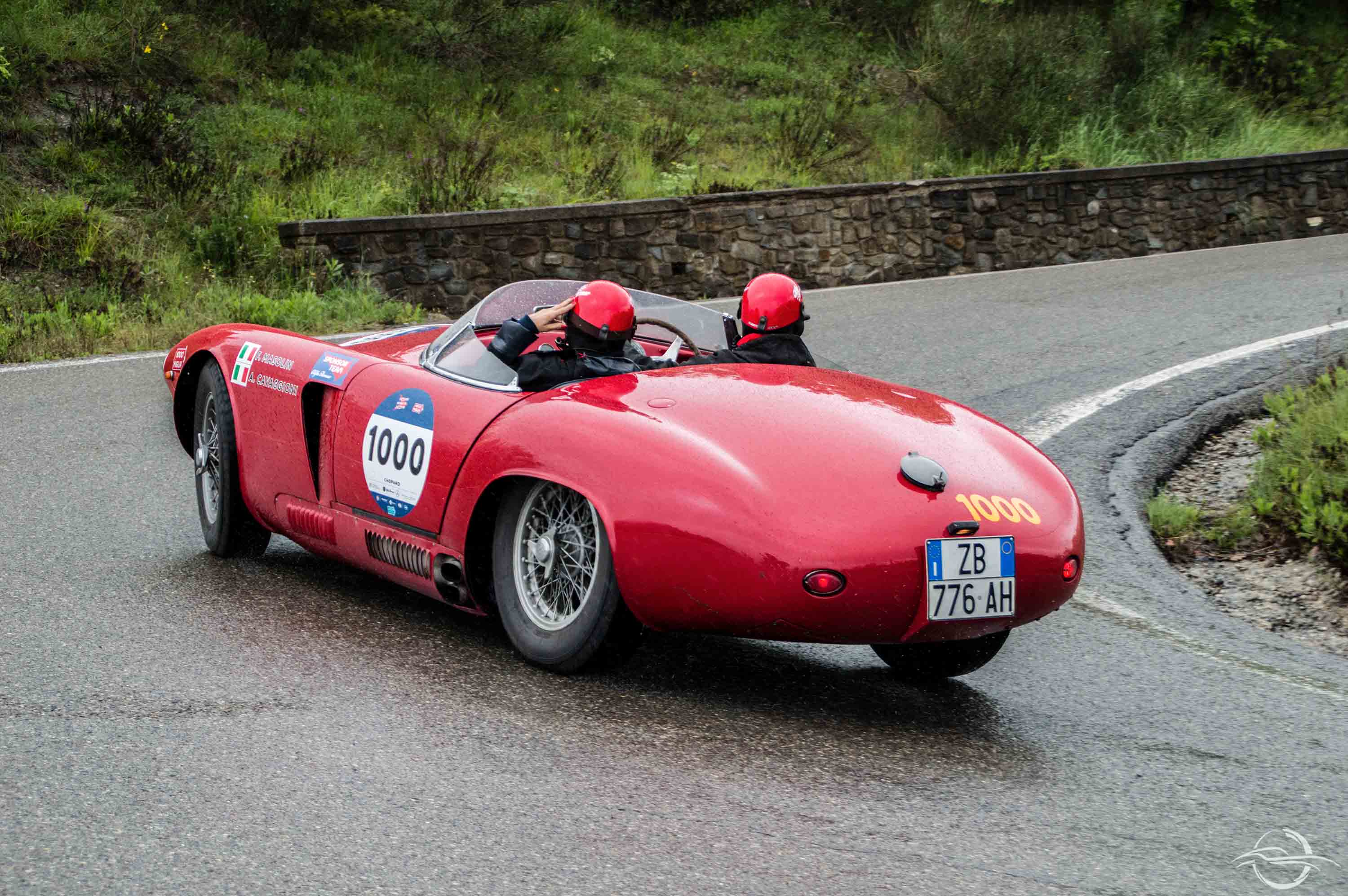
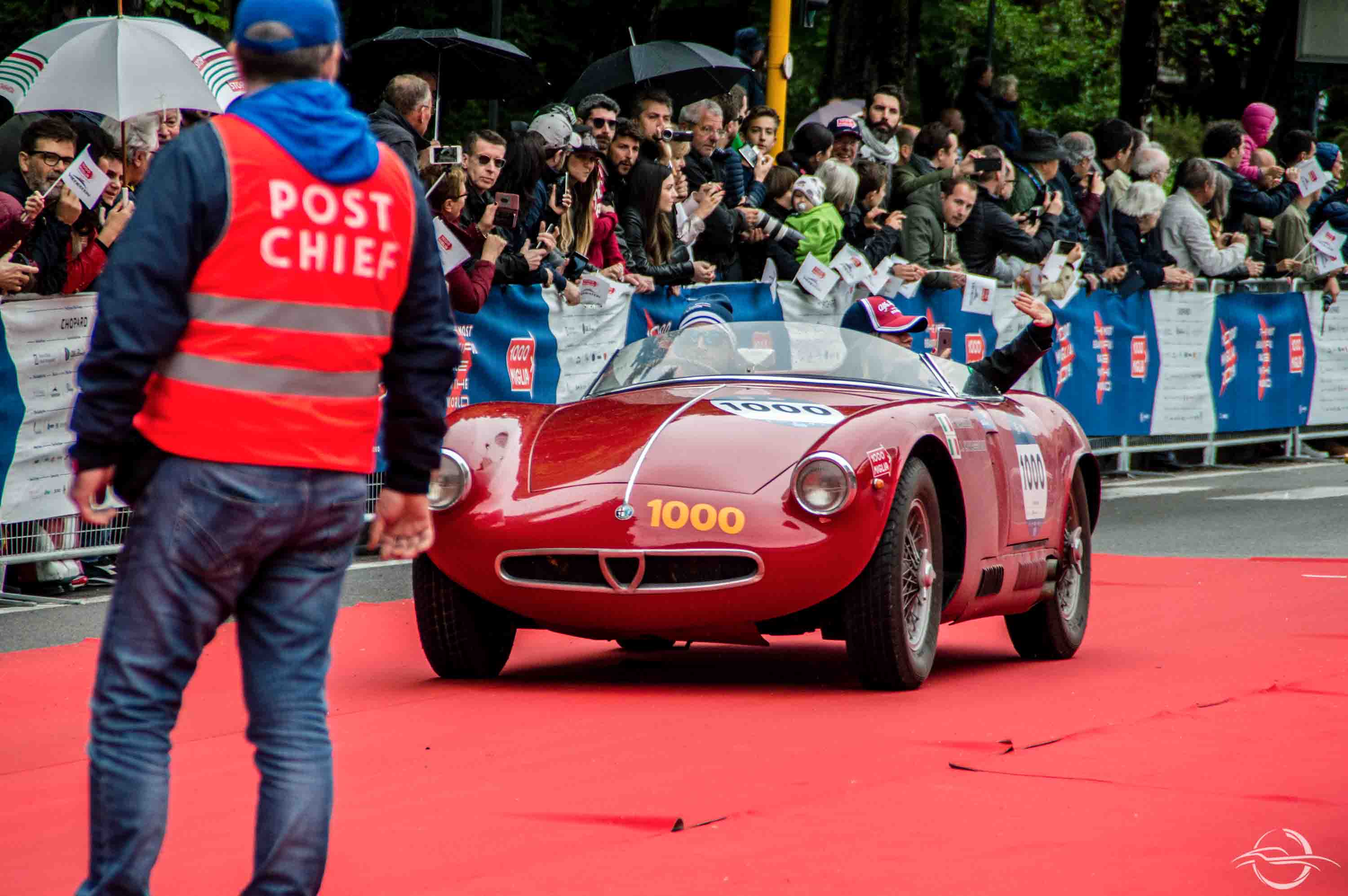
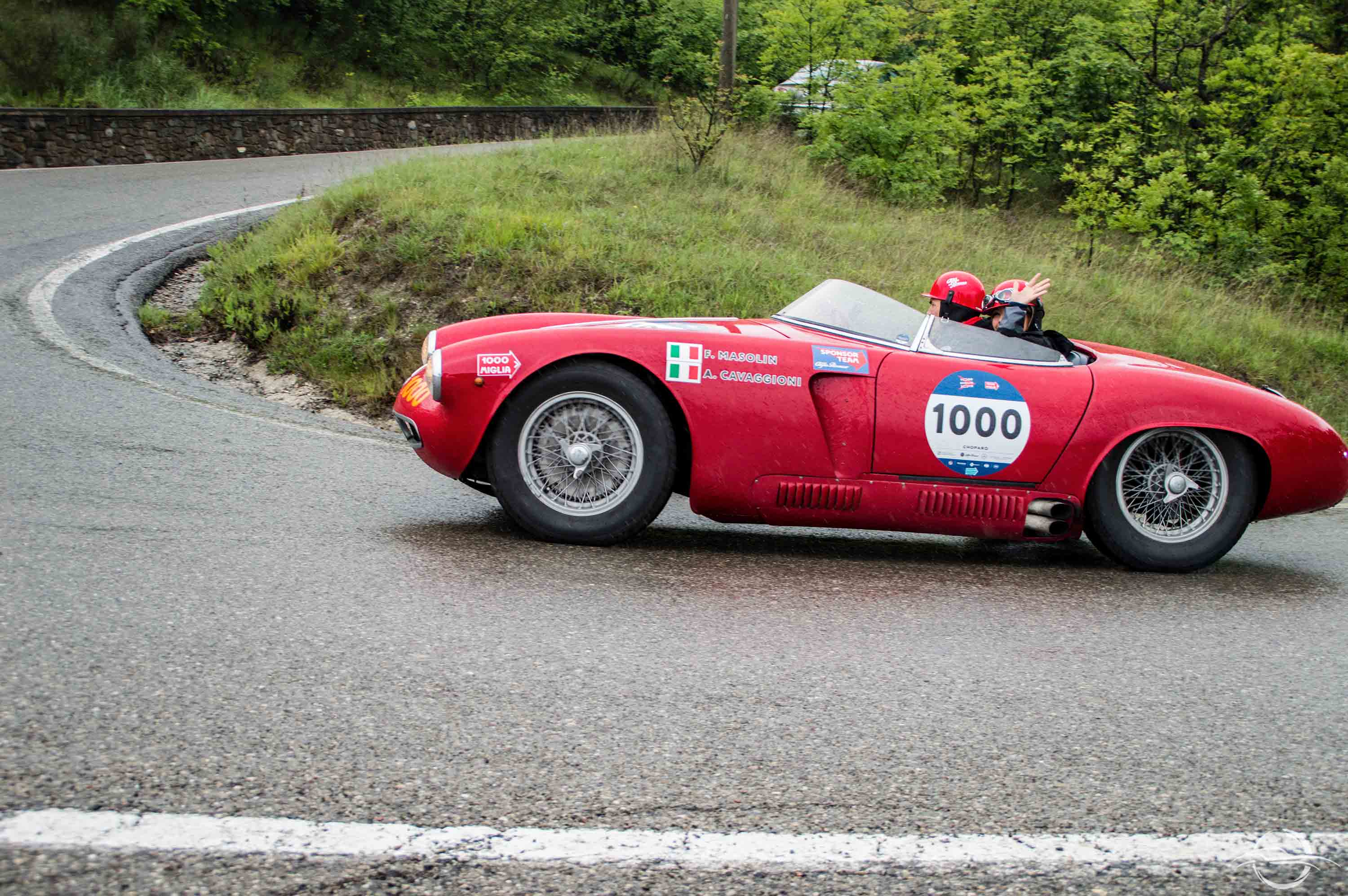




– The cars turn their engines on an off in Brescia. They will drive through dream places, our Italy is an open museum. You will have time to visit it and I’d like you to always look at it, even when you’ll be an adult, with the stupor and curiosity that you have today. You will have to take some time to learn to savour what is surrounding you. The Freccia Rossa starts from Brescia and drives through squares, hamlets, mountain passes, lakes… enchanted places which will leave you open-mouthed.
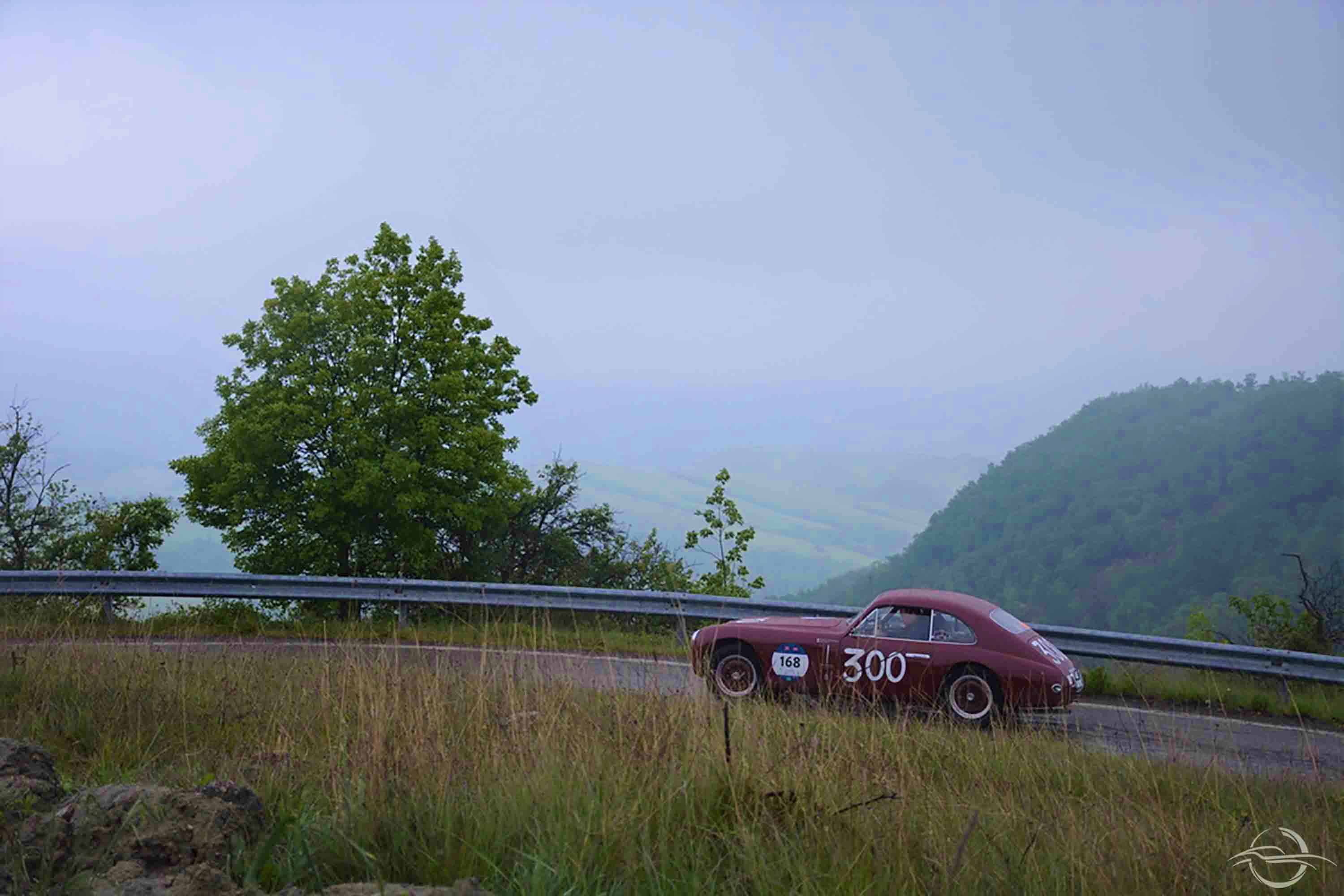
– From Sirmione to Cervia, passing through Ravenna with its Byzantine mosaics. From the Adriatic sea to the hills in Urbino, Fabriano, Assisi and Perugia… to the triumphal arrival in the Capital and its old town. Once they leave the eternal City, they will drive back up towards Bologna. They will stop in Vinci, the birth city of the clever Leonardo. I have been to his house. It harbours his notes, the drawings of his inventions. Out of the many drawings, I was surprised by the one about the deep-sea diver. They will leave Bologna for the last leg… that is the Alfa Romeo 1900 Super.
– Why isn’t it as shiny as the others?
– It was polished with a special technique, inspired by Leonardo, “the blurred”.
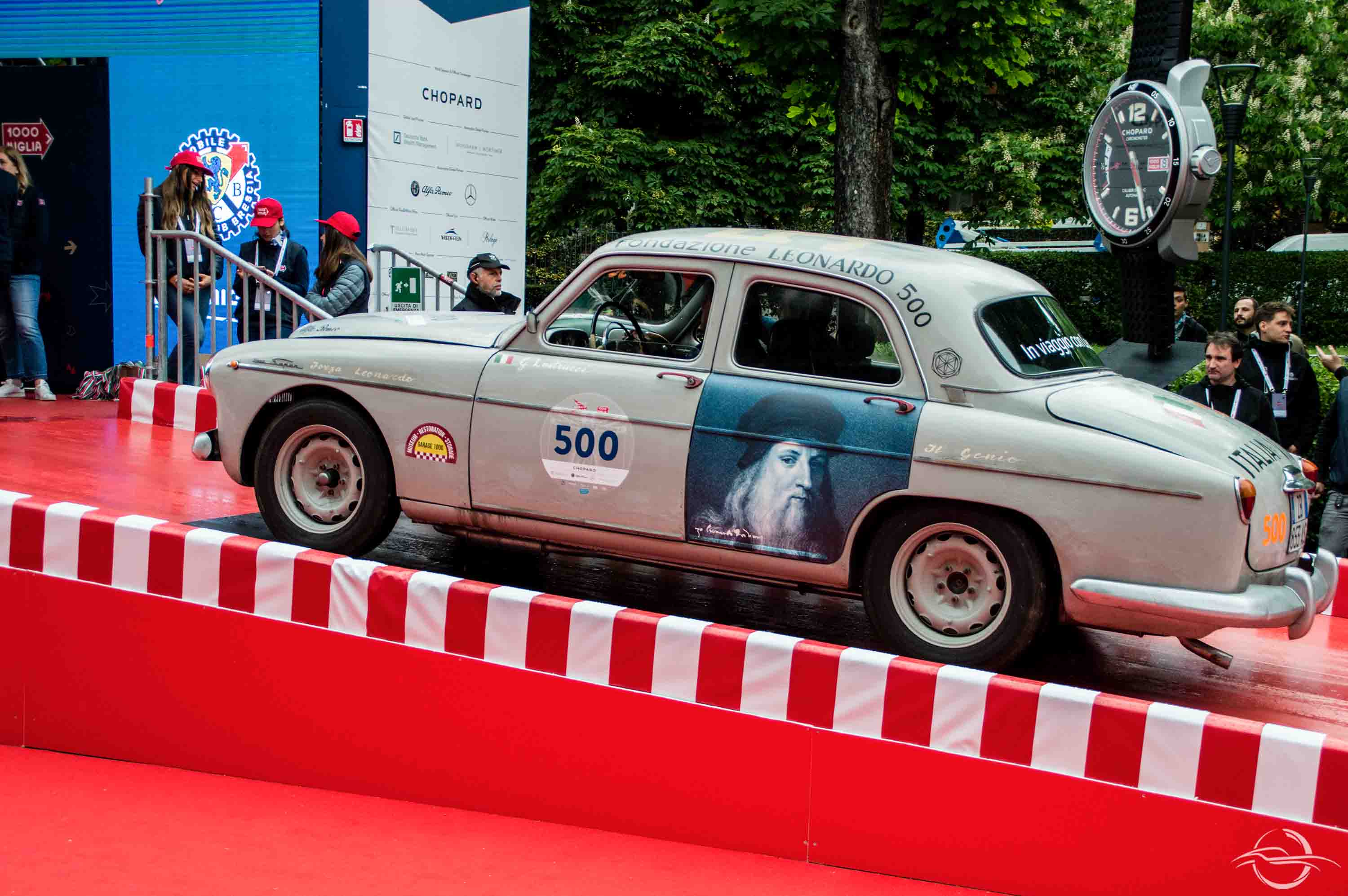
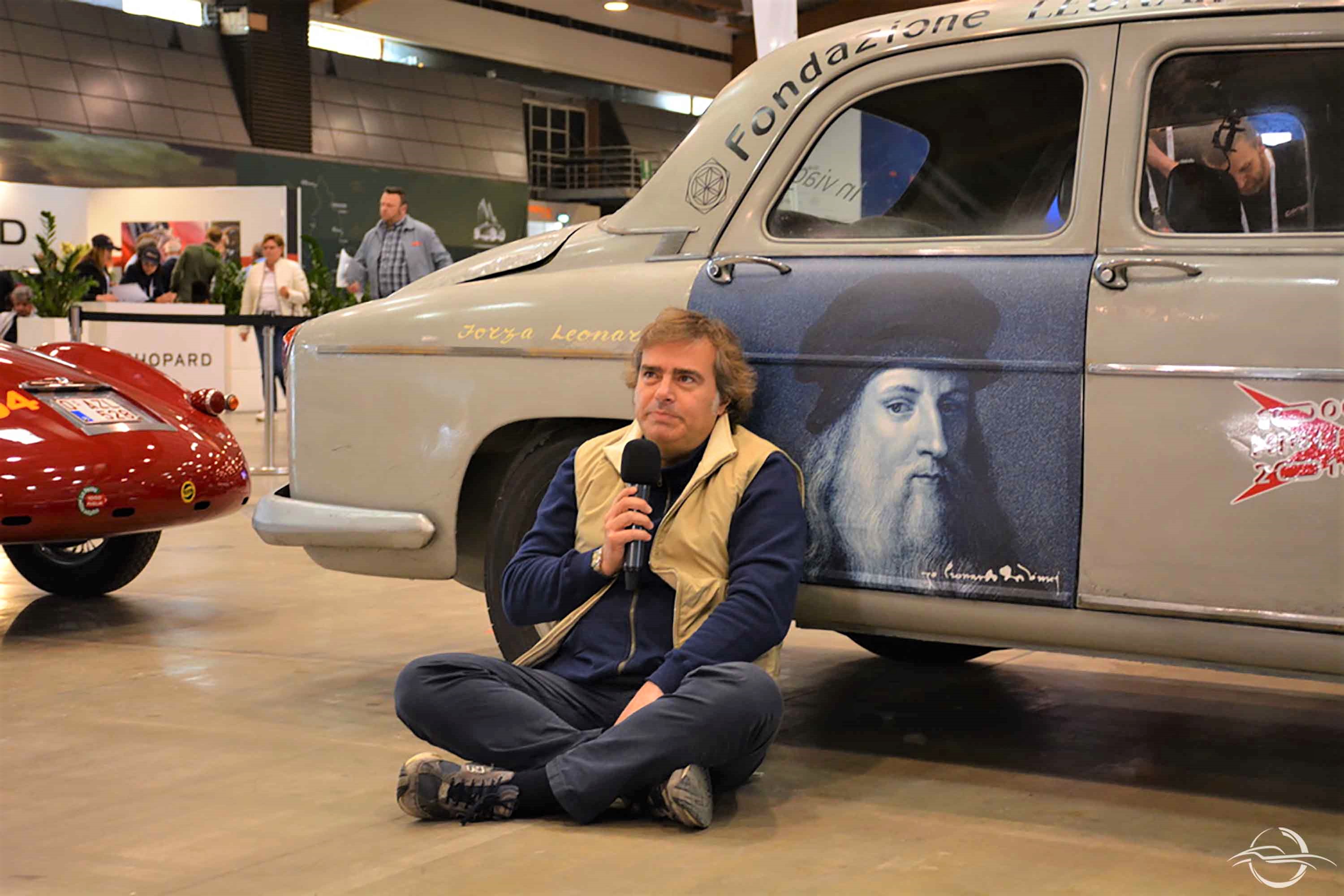




– Arturo Merzario, go and stand there and I’ll take a picture, he’s a former F1 driver, from my times.
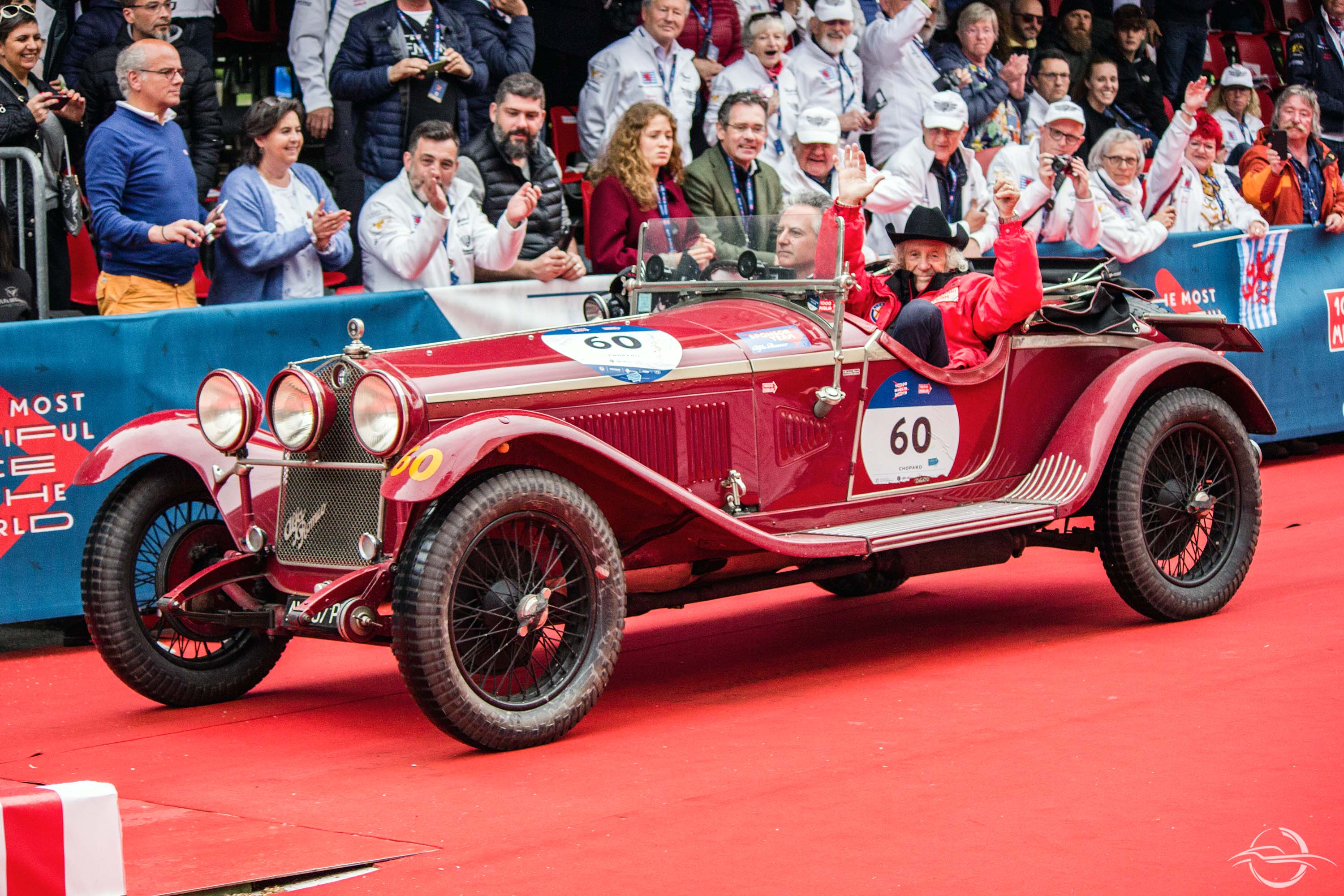
– Grandpa, nowadays you can take selfies with your mobile!
– And how can you ask them to sign?
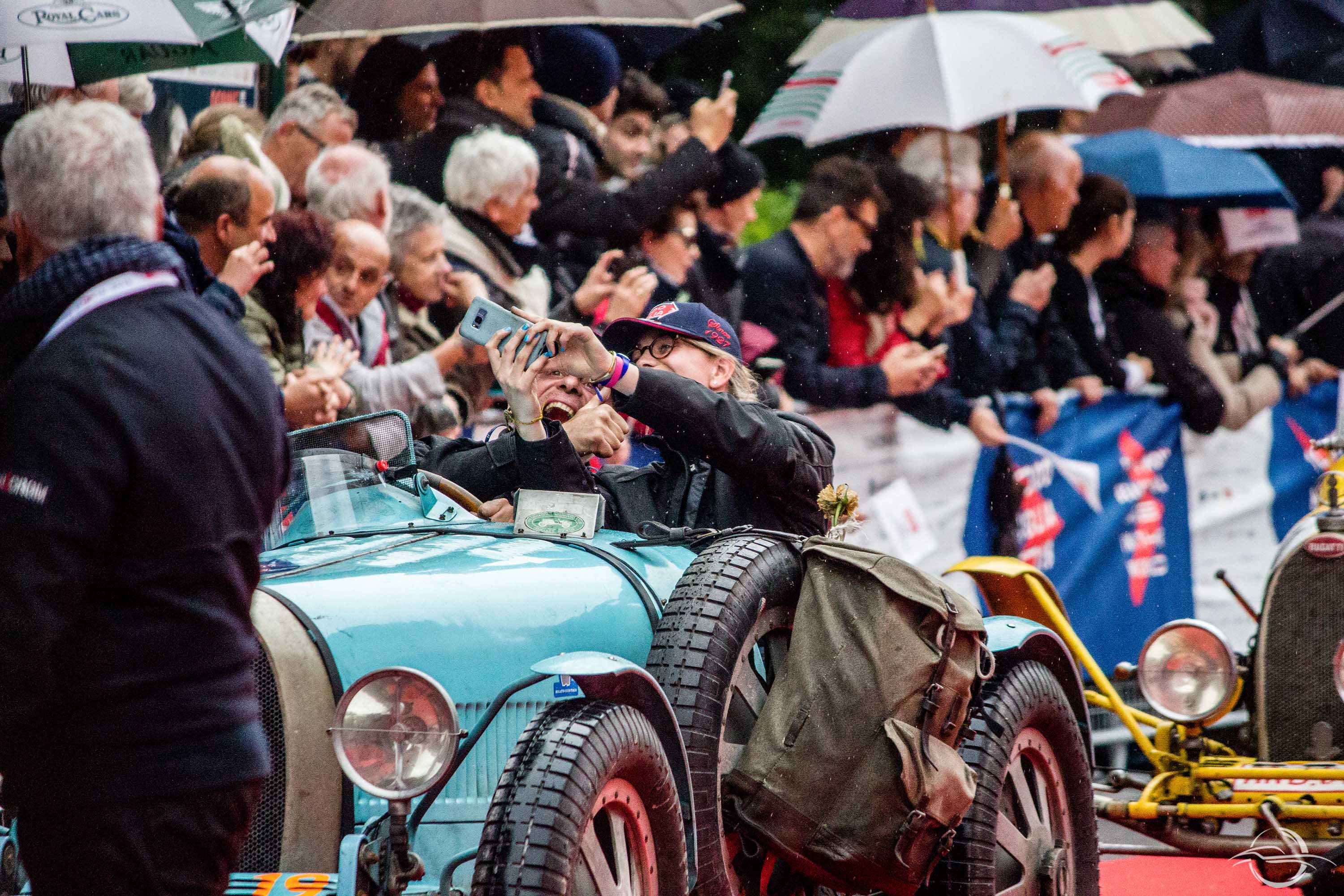
The grandfather knows Hans Hermann, Arturo Merzario, Miki Biasion, Prisca Taruffi, Marc Newson and Jochen Mass… but he’s less knowledgeable about Carlo Cracco, Joe Bastianich, Riccardo Pozzoli, Magnus Walker…
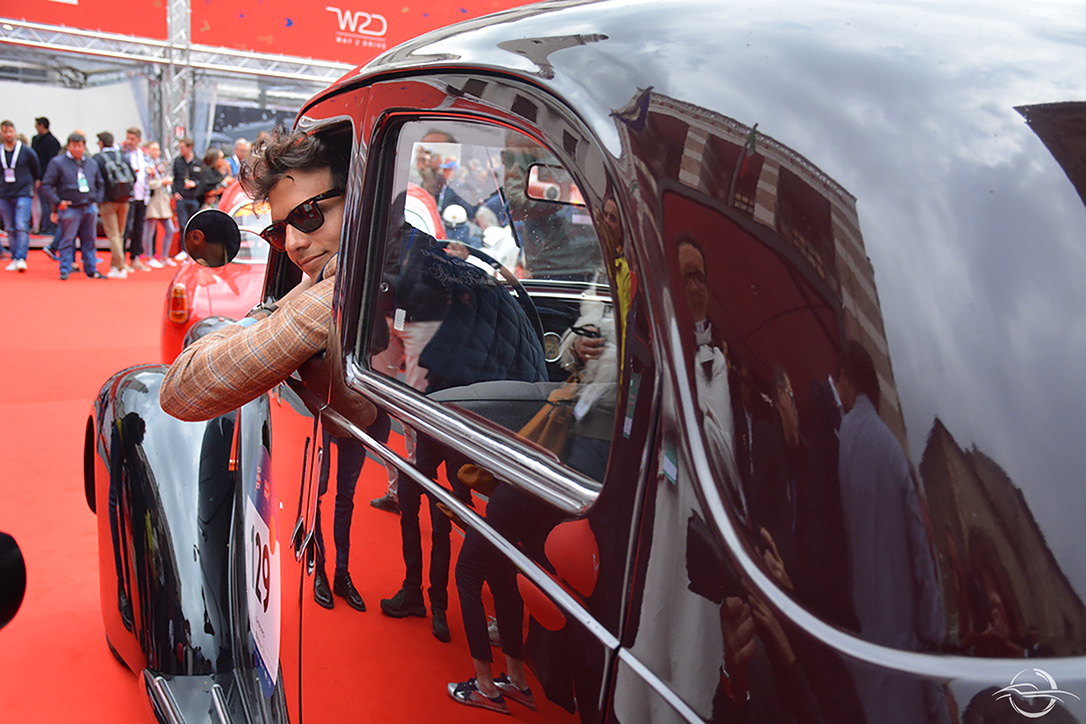
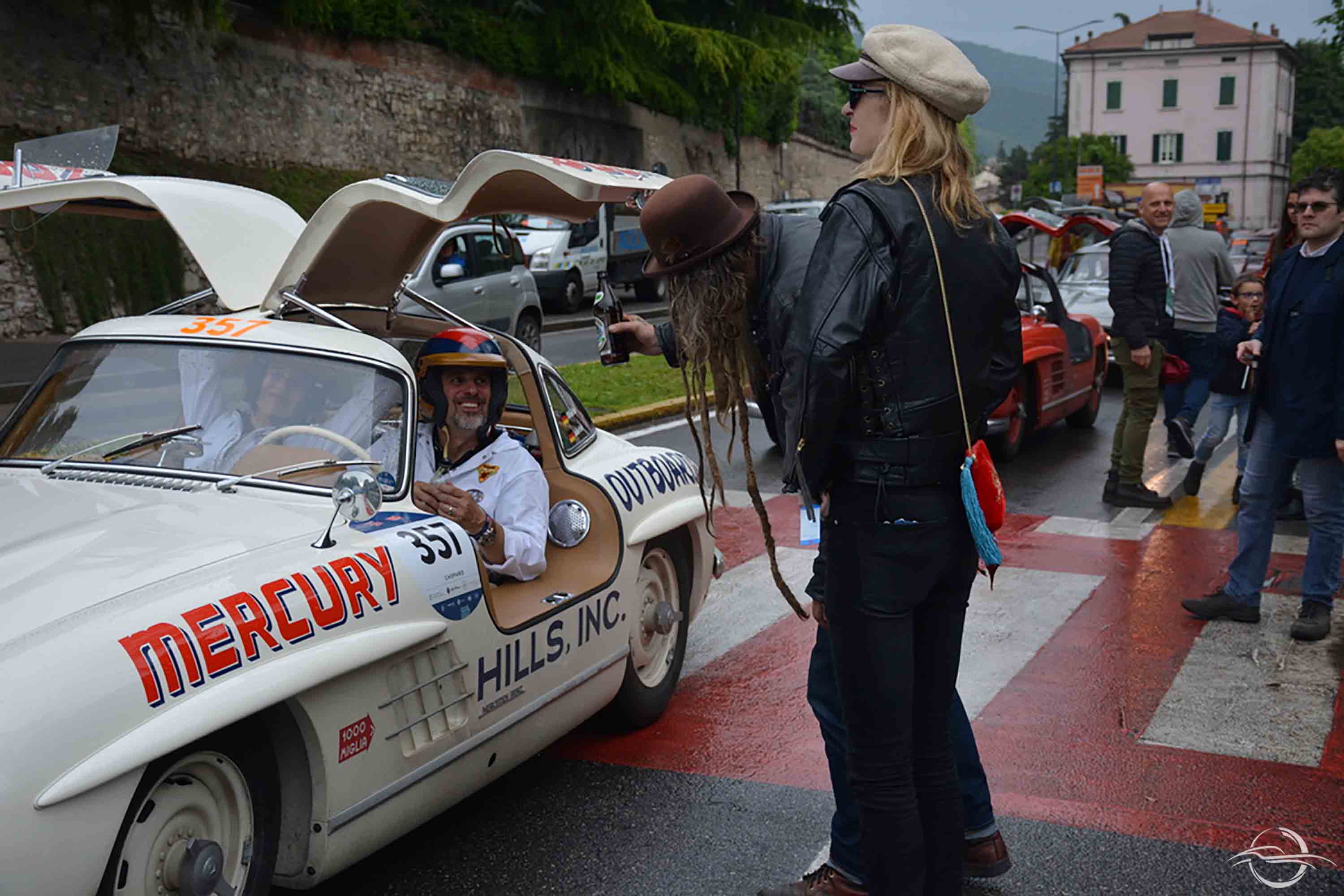
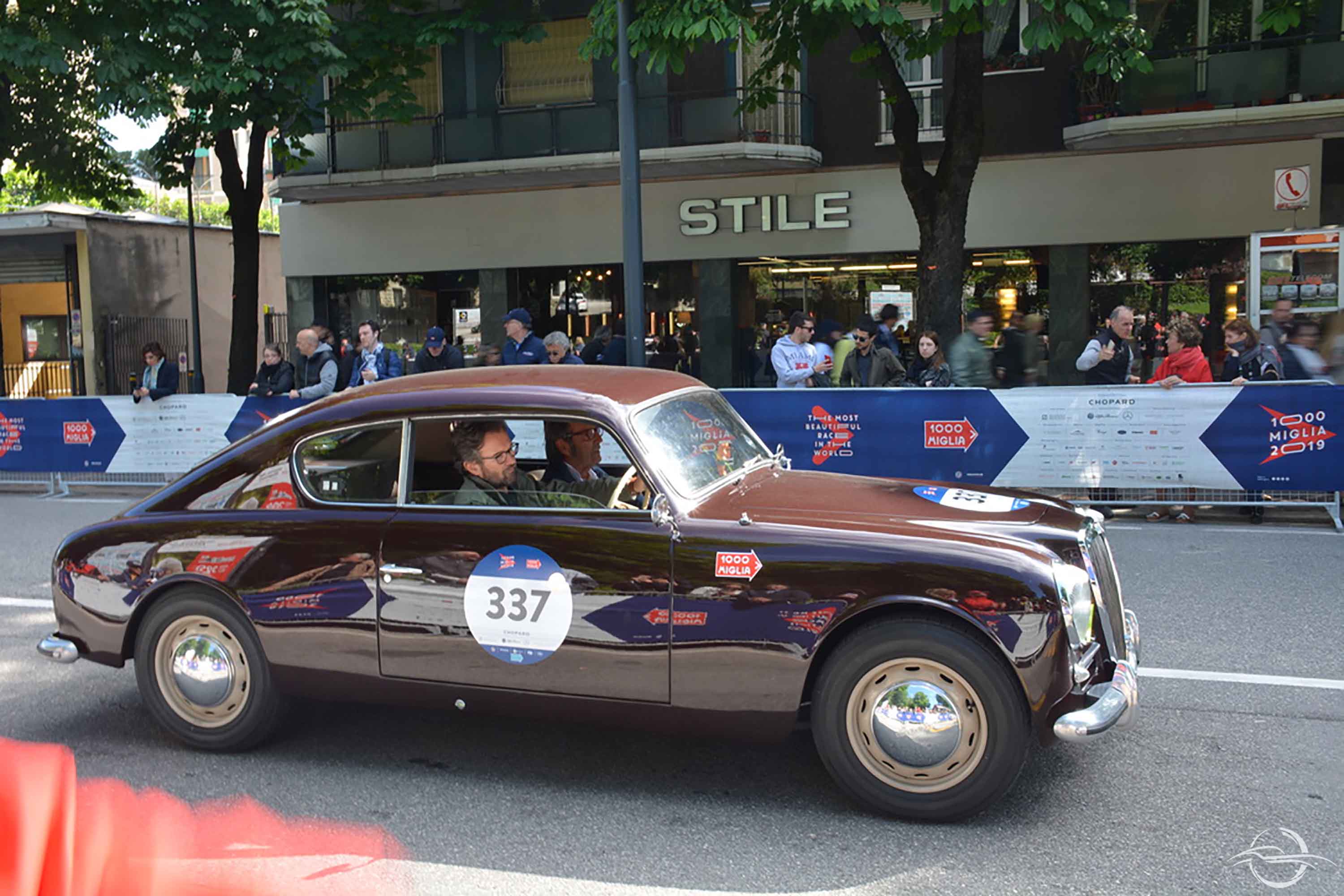




– Grandpa, which Ferrari’s are these?
– Well, they’re modern, I get confused with these! They’re very nice and listen to their roar. If we have these masterpieces today, we need to thank the races, Mille Miglia included, the historical one, I mean. The competitions have accelerated research and progress and today we have some road cars which are research masterpieces. They’re more track cars than road cars. You always need a beginning, an action which stimulates you to look forward… everybody is linked with their own time, but knowing history enables us to better appreciate what we inherited.
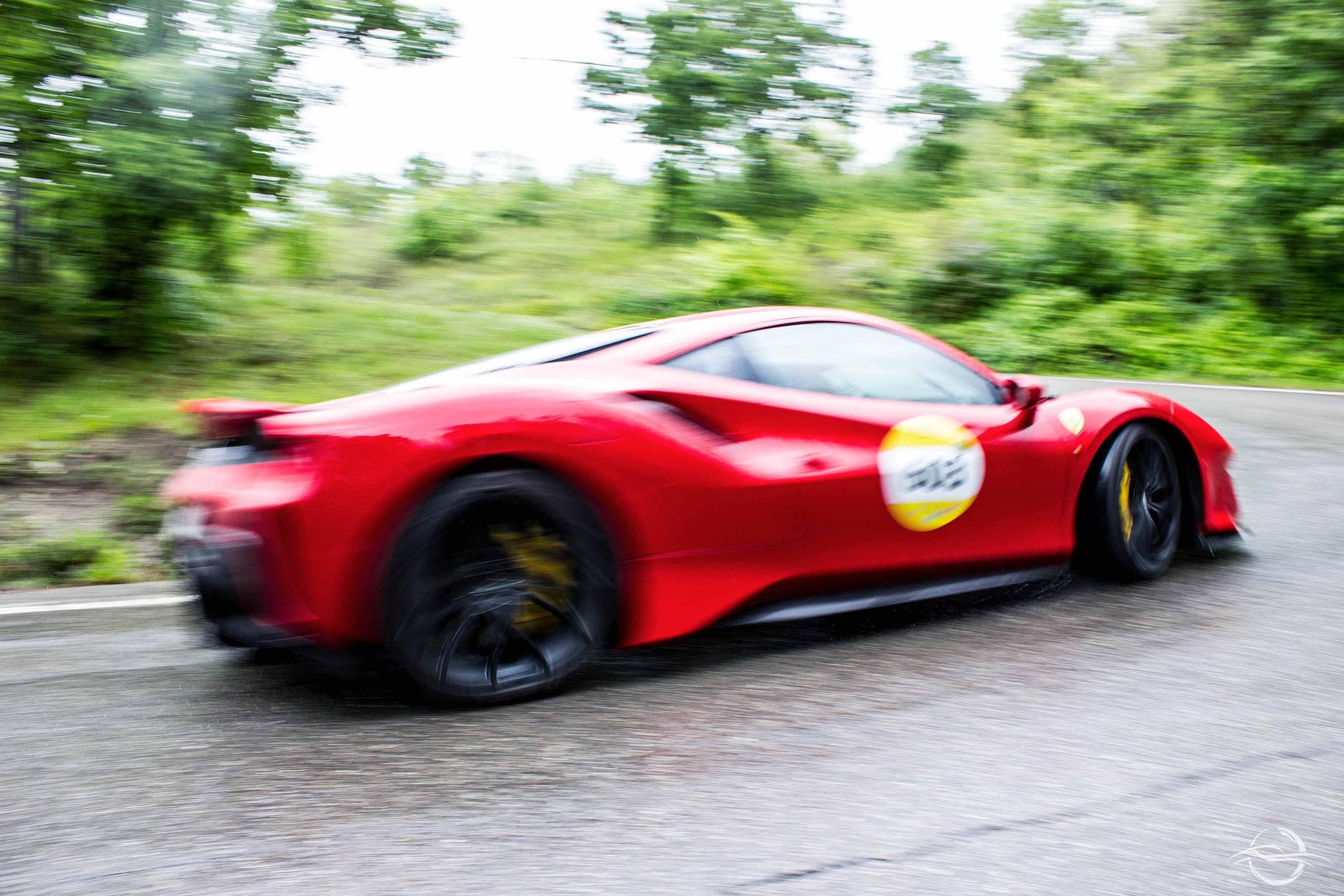

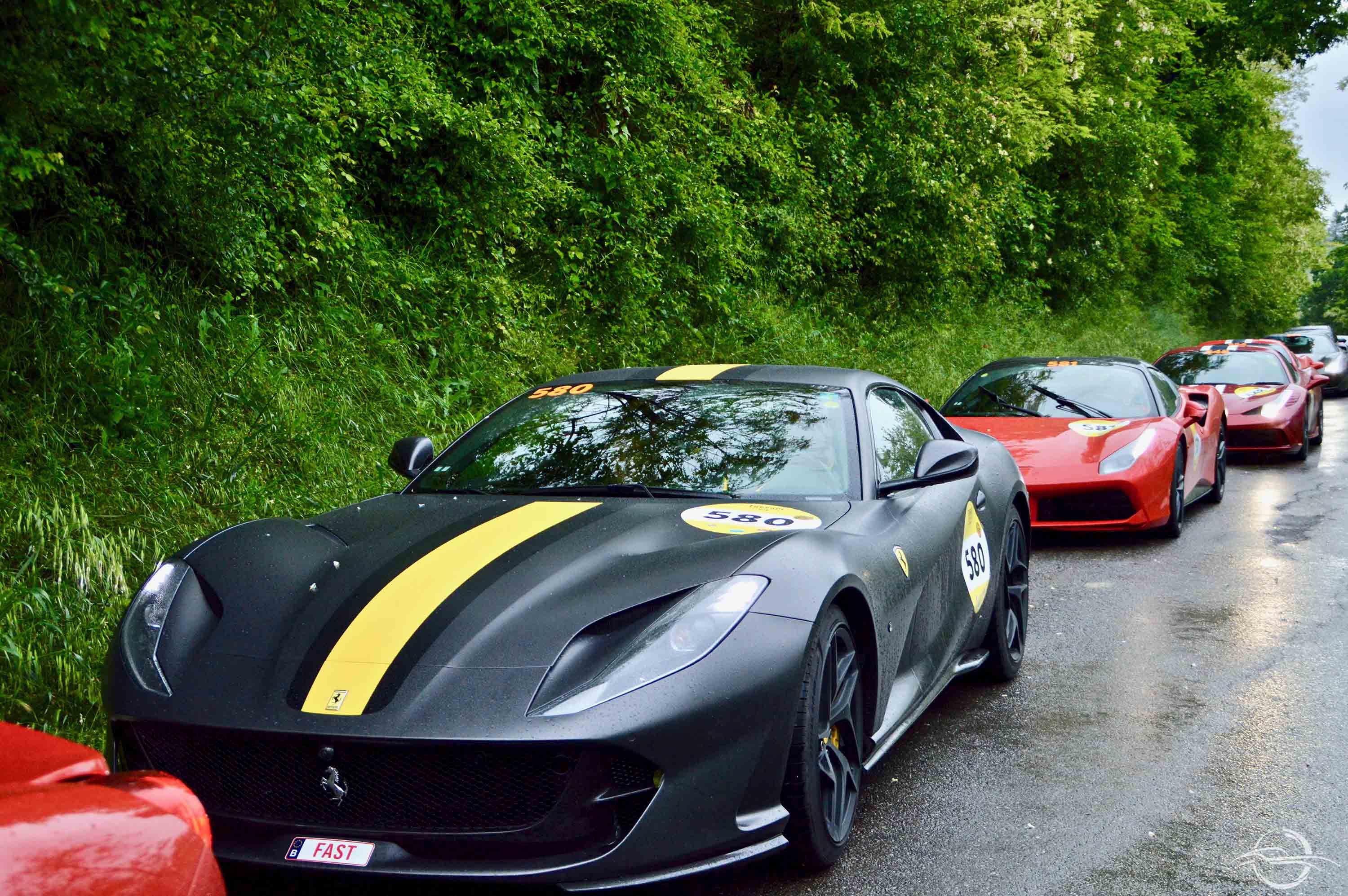




– Look at this Bugatti Type 35 GP, Grand Prix. It’s from 1925. Back then, they were more artists than engineers. Ettore Bugatti certainly was, with bowler hat and his passion for horses. This car had been designed for races. Its 8-cylinder in-line engine with 1991 cc and the Roots supercharger, could reach 200 km/h, already ninety years ago! You didn’t expect that, did you?
– Really? 200 an hour, it flew!
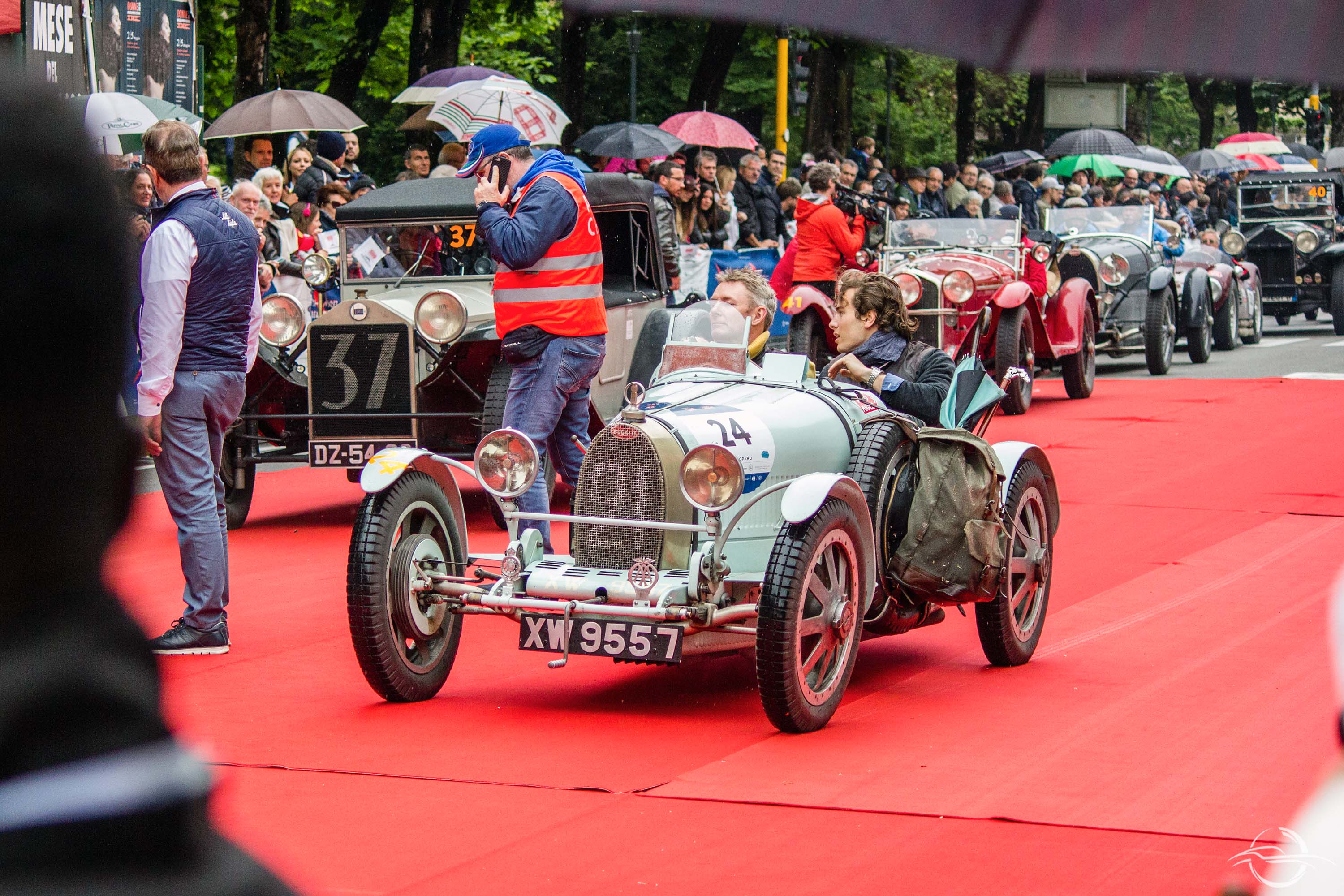
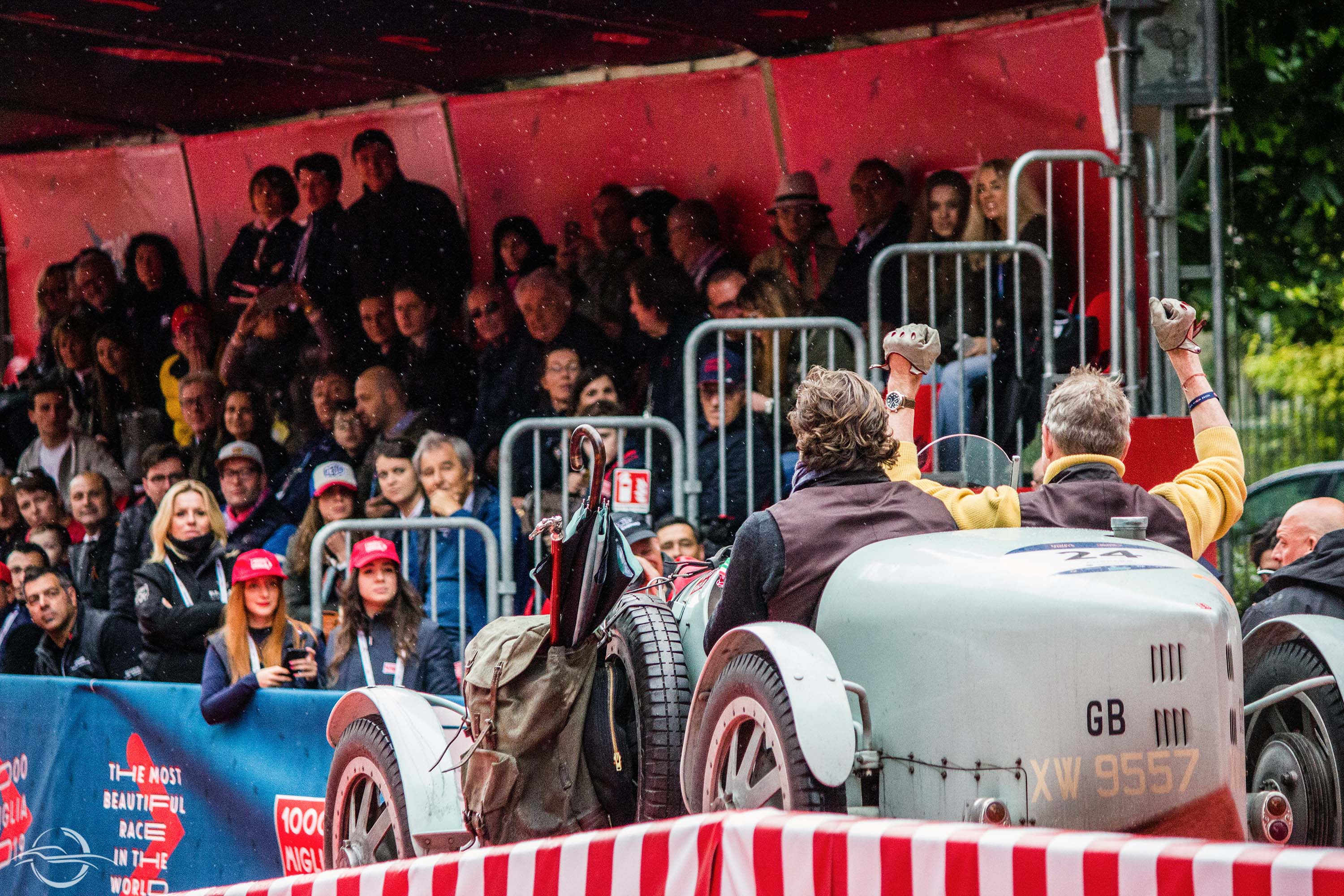
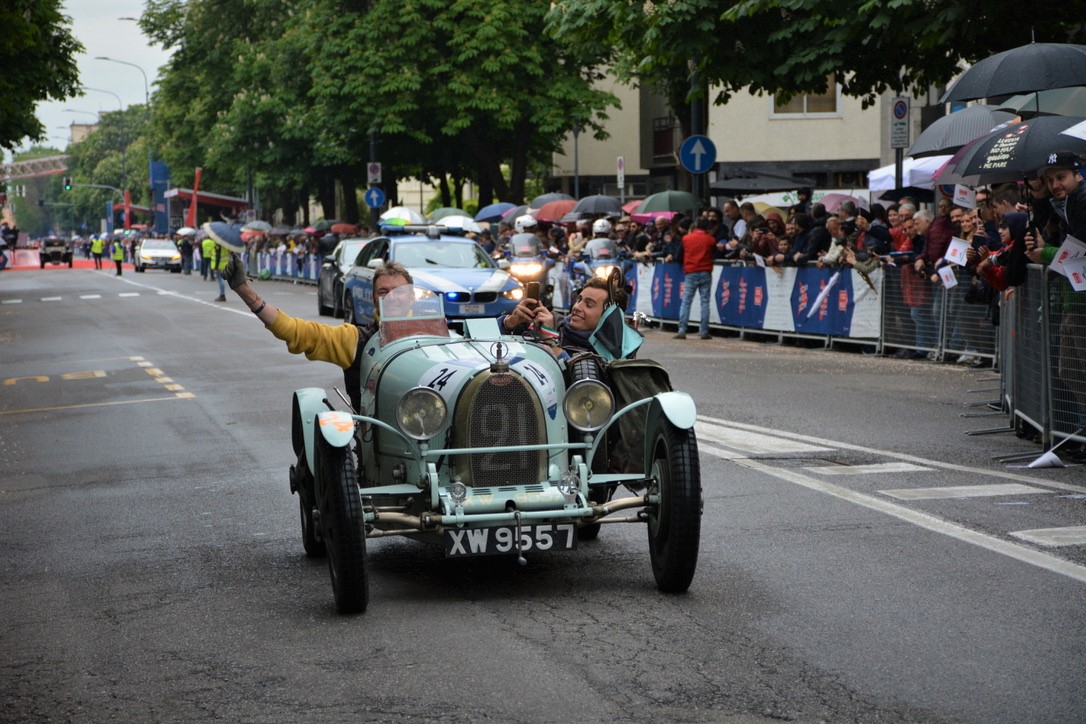




– Drivers were heroes. They were intrepid and brave, that is why Enzo Ferrari called them “the risk volunteers”… Look carefully at these cars, each individual piece was built by hand. Forget about computers or serial production. Imagine some hands which beat the metal, which use the lathe, hands which touched the aluminium, which felt it taking shape… it was… it is art. I need to take you where they restore cars like they did in the past, you cannot imagine it if you don’t see them working. You will become fond of it, they will be able to surprise you, I’m sure of that!
This year the rain didn’t cut any slack and the teams have proven to be determined. Driving under the pouring rain with these marvellous classic cars isn’t an easy endeavour. On the section in San Polo d’Enza, we met rain, fog and winter cold. That didn’t stop the enthusiasts either, they wanted to support the teams through their discomfort, through applauses or beeping horns. That is passion, or actually, Passion, with a capital P!

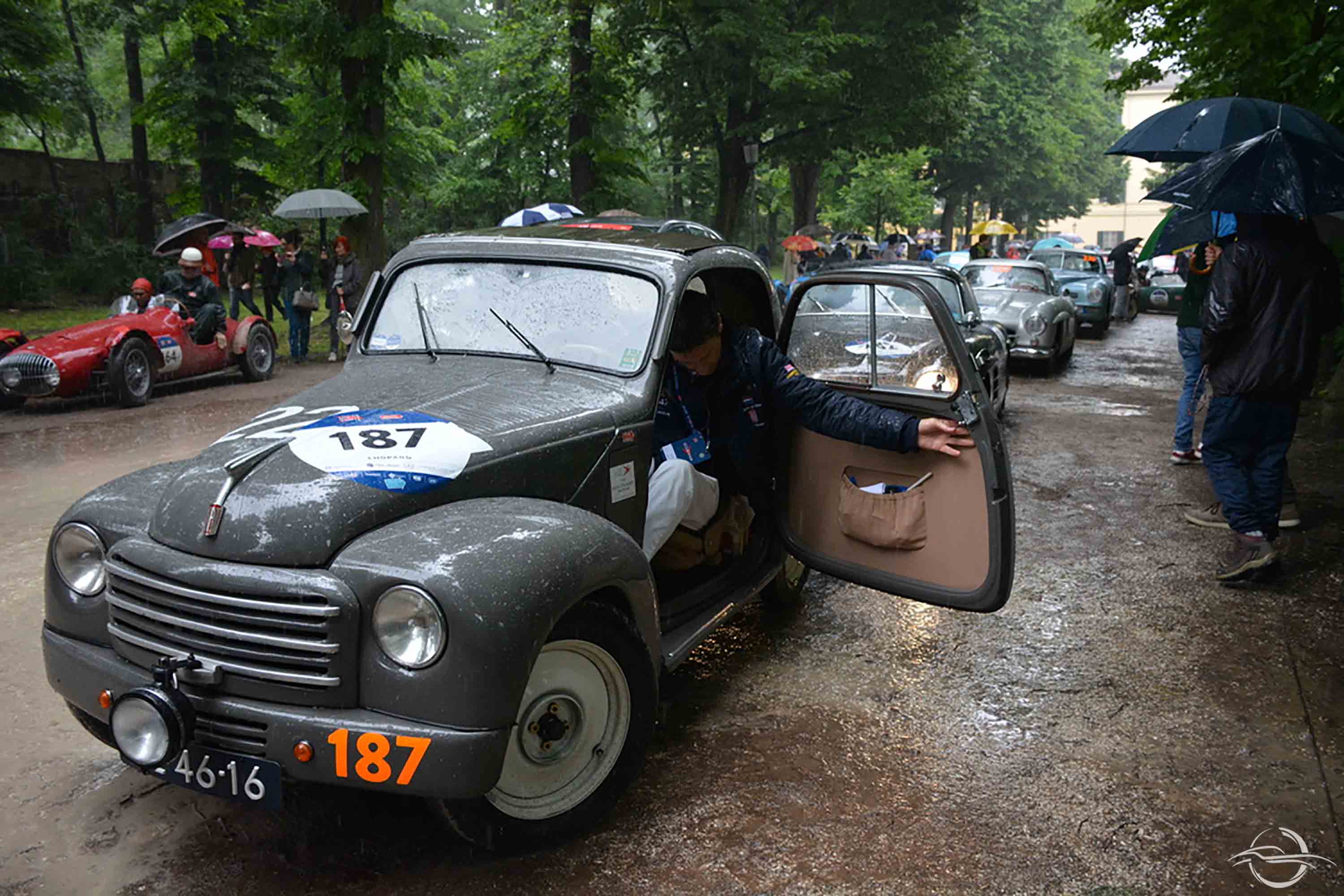
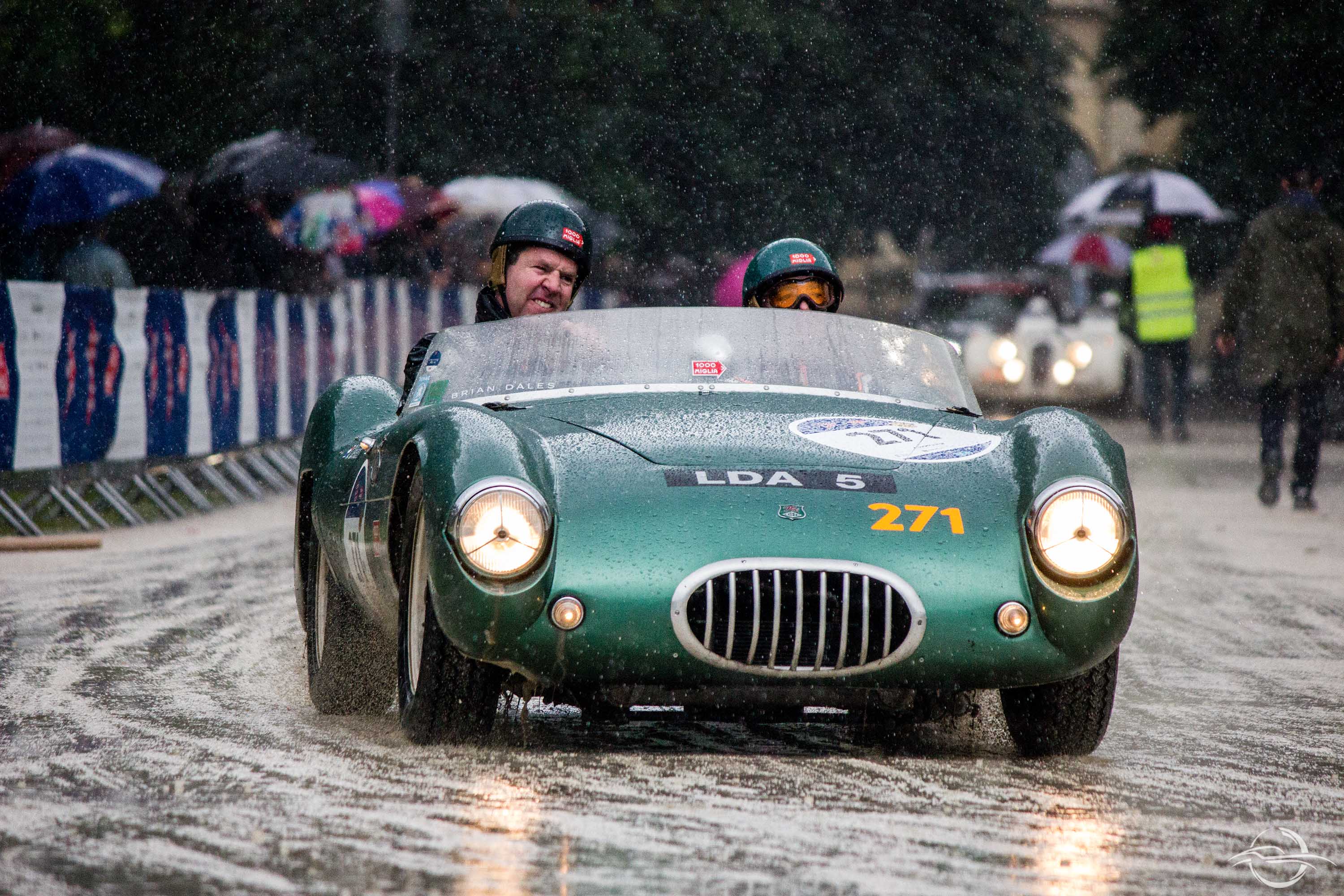
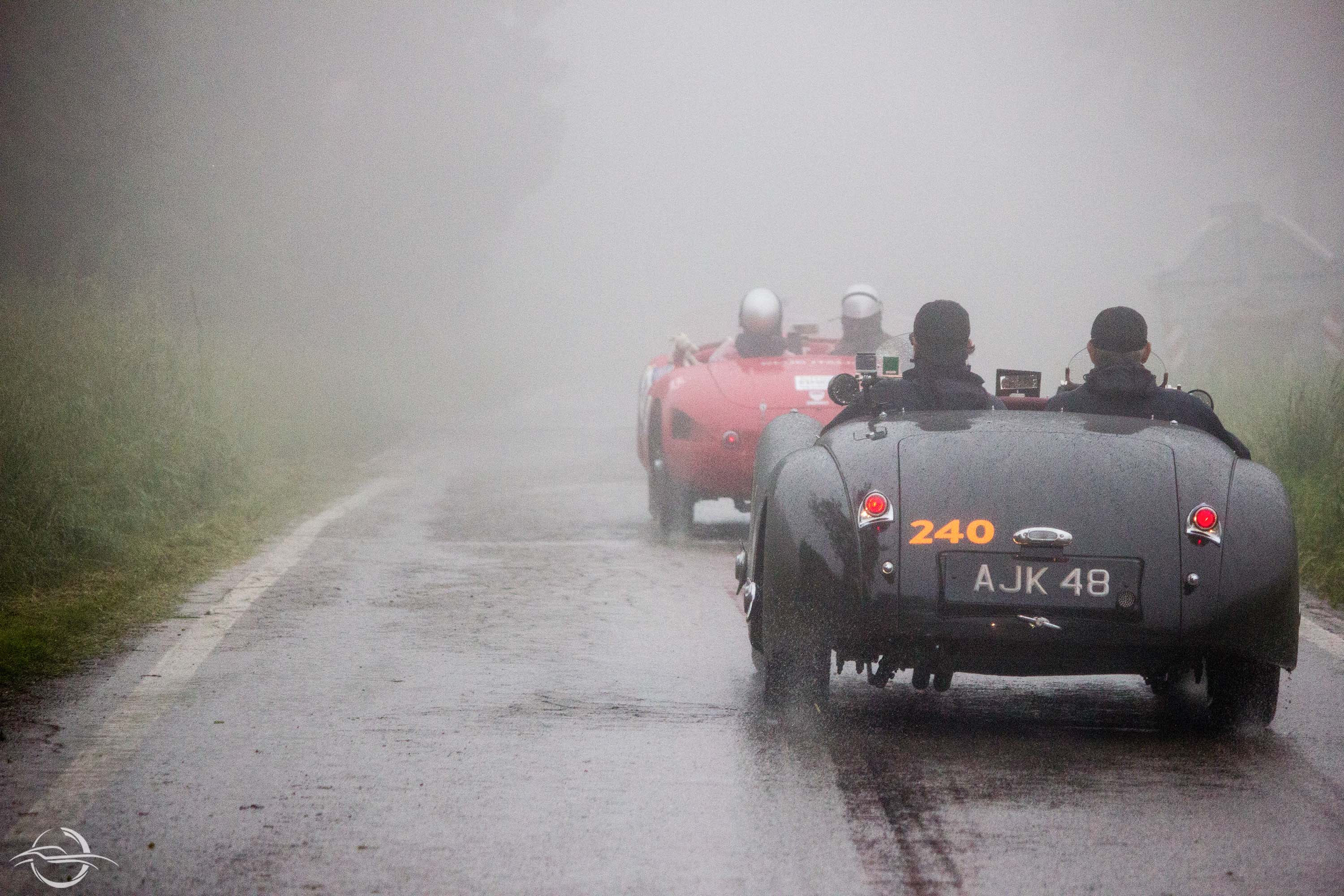




While waiting to applaud the winners, a wall of people along Viale Venezia forms again. Under the rain, but they don’t renounce the last festive salutation… you need to wait one more year to see the travelling museum again.
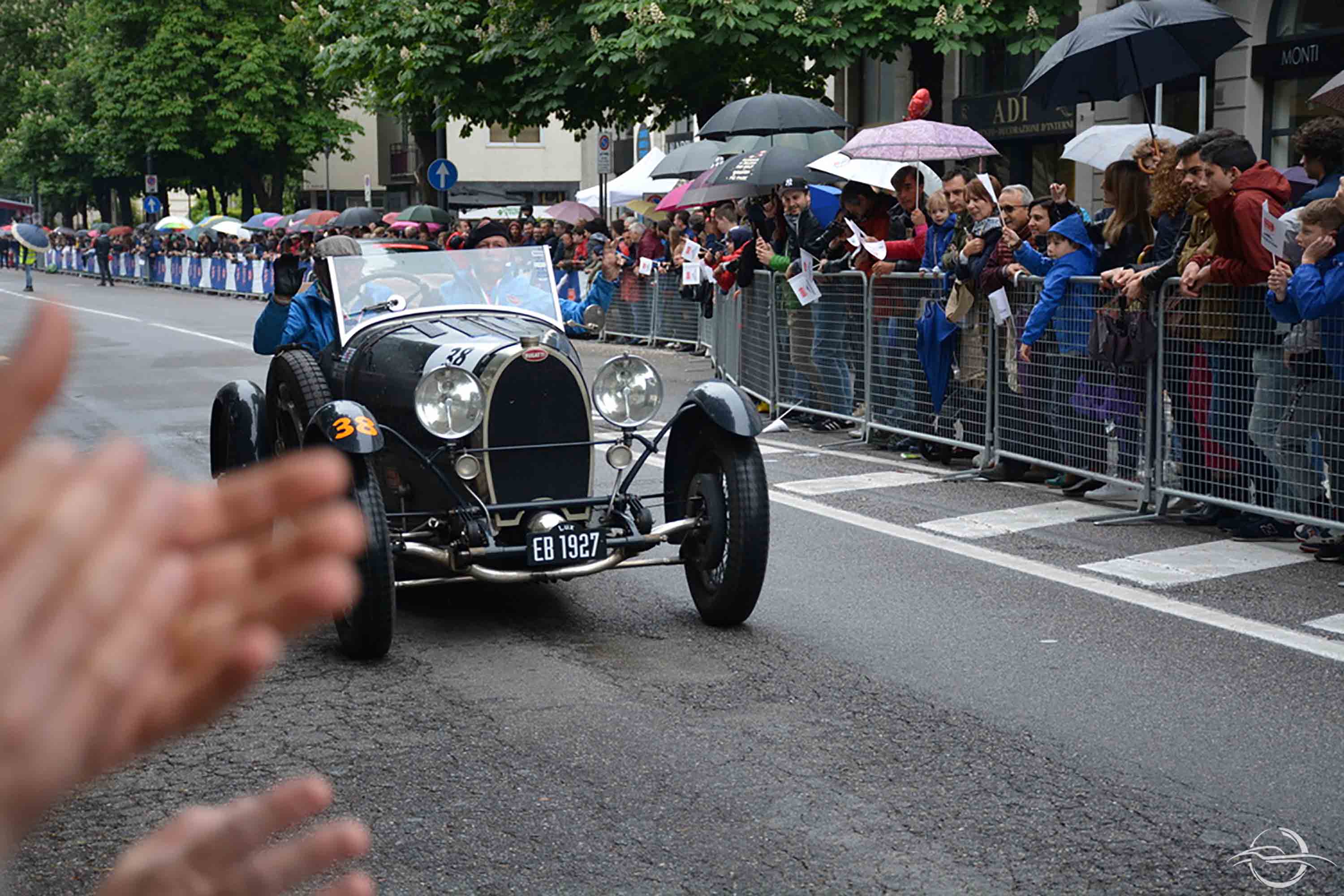
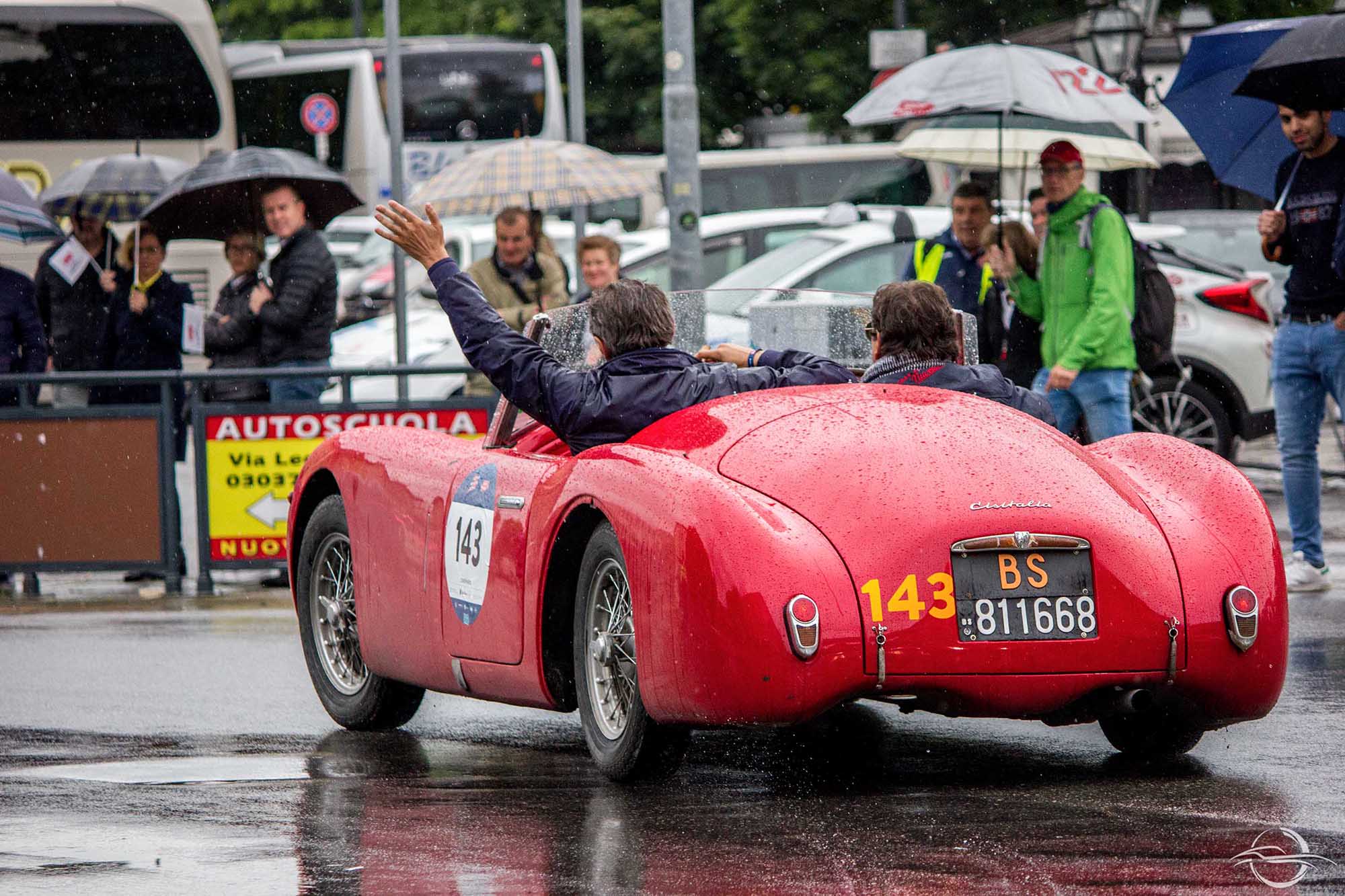
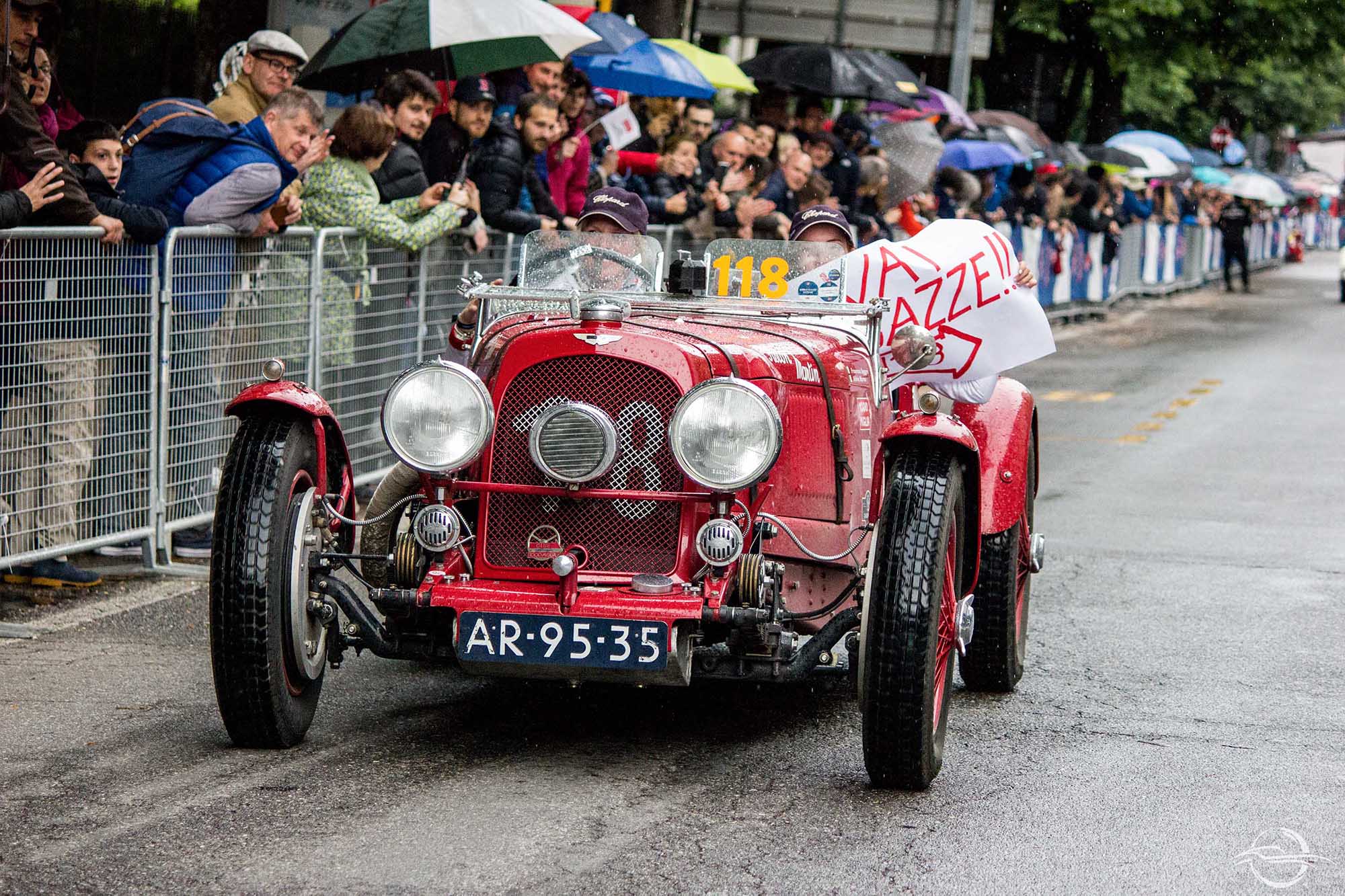




While waiting on the final parade you make many acquaintances… a family from Maine. They came from the USA for a holiday in the Bel Paese. The mother told me that the trip was a gift expressly requested by their fifteen-year-old son, he wanted to follow the Freccia Rossa.
These stories fill me up with joy.
The sister of a driver is enthusiastic and touched. She was trembling, she wanted to embrace her brother… with her congeniality, she talks to us about the invasion of number six in their family. She and her daughter were born on the 6th of June, the Lancia Lambda that her brother participated with has the number 66 and he could not do otherwise but come sixth: 6!
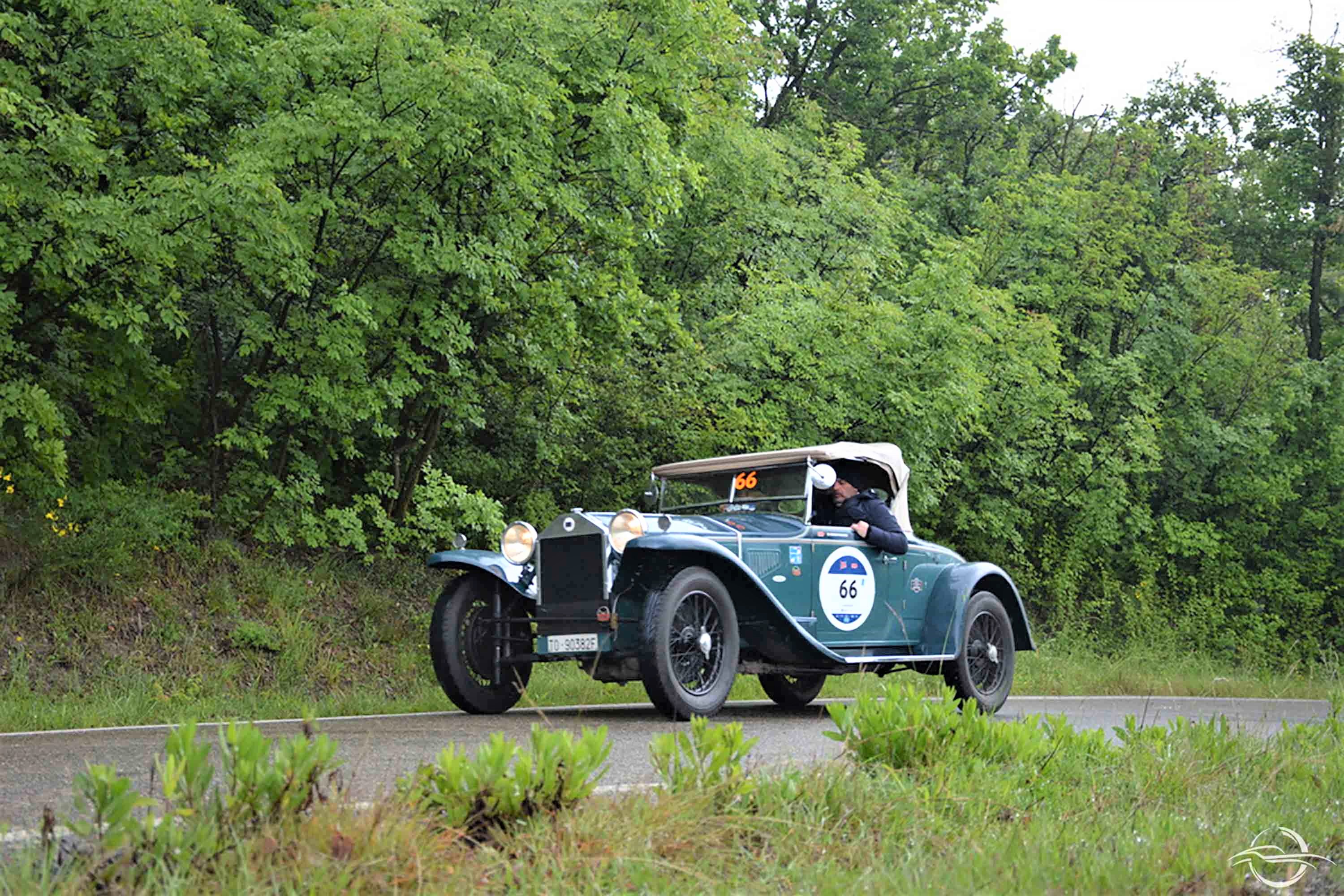
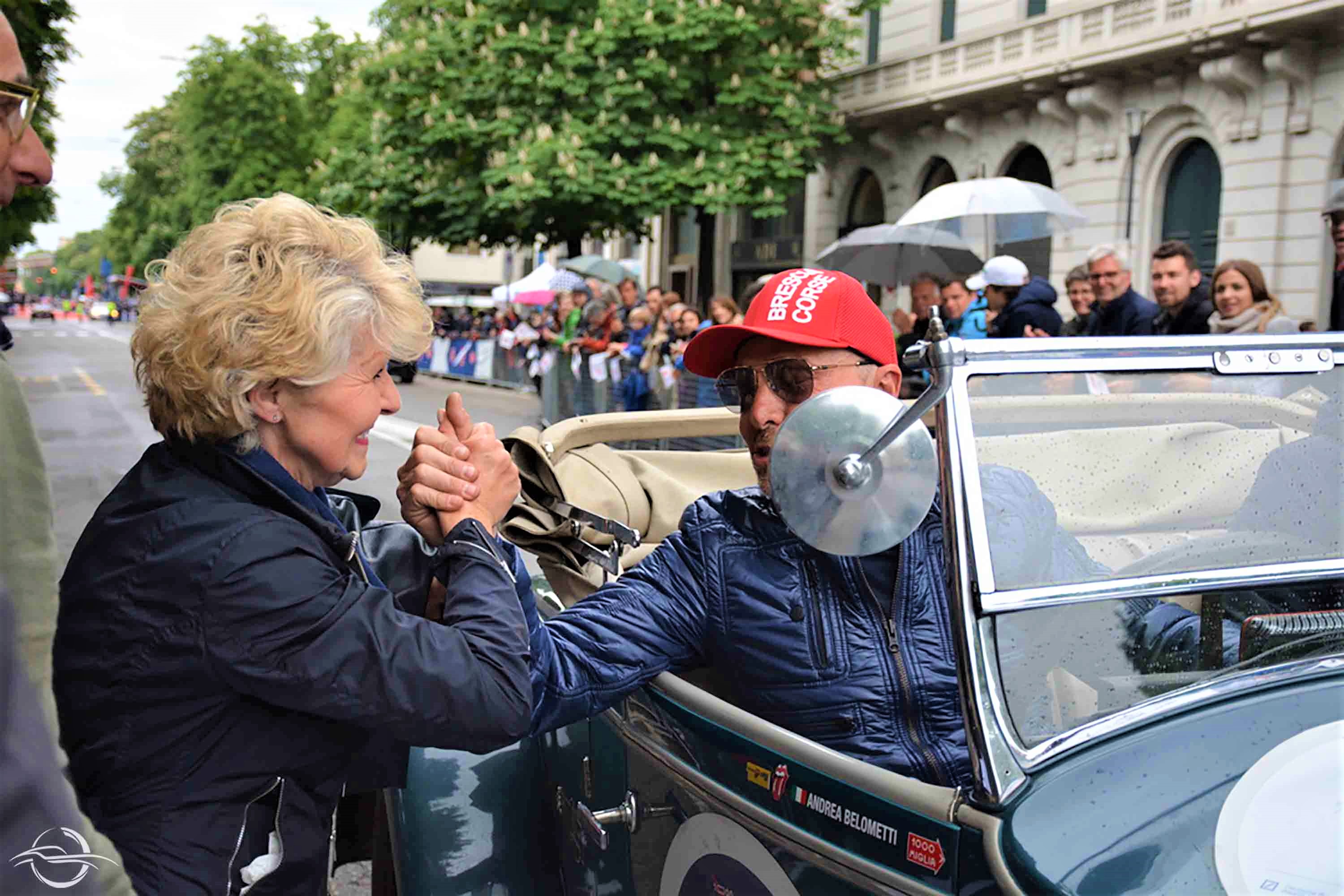




On the podium is a masterpiece by Vittorio Jano, the Alfa Romeo 1750 6C 1500 Super Sport. In 1928, the duo Giuseppe Campari and Giulio Ramponi, conquered the victory of the Mille Miglia with this car, driving 1,1618 km at an average speed of 84 km/h. This year, the experts Giovanni Moceri and Daniele Bonetti have brought back this Alfa to victory, climbing the highest step on the podium.


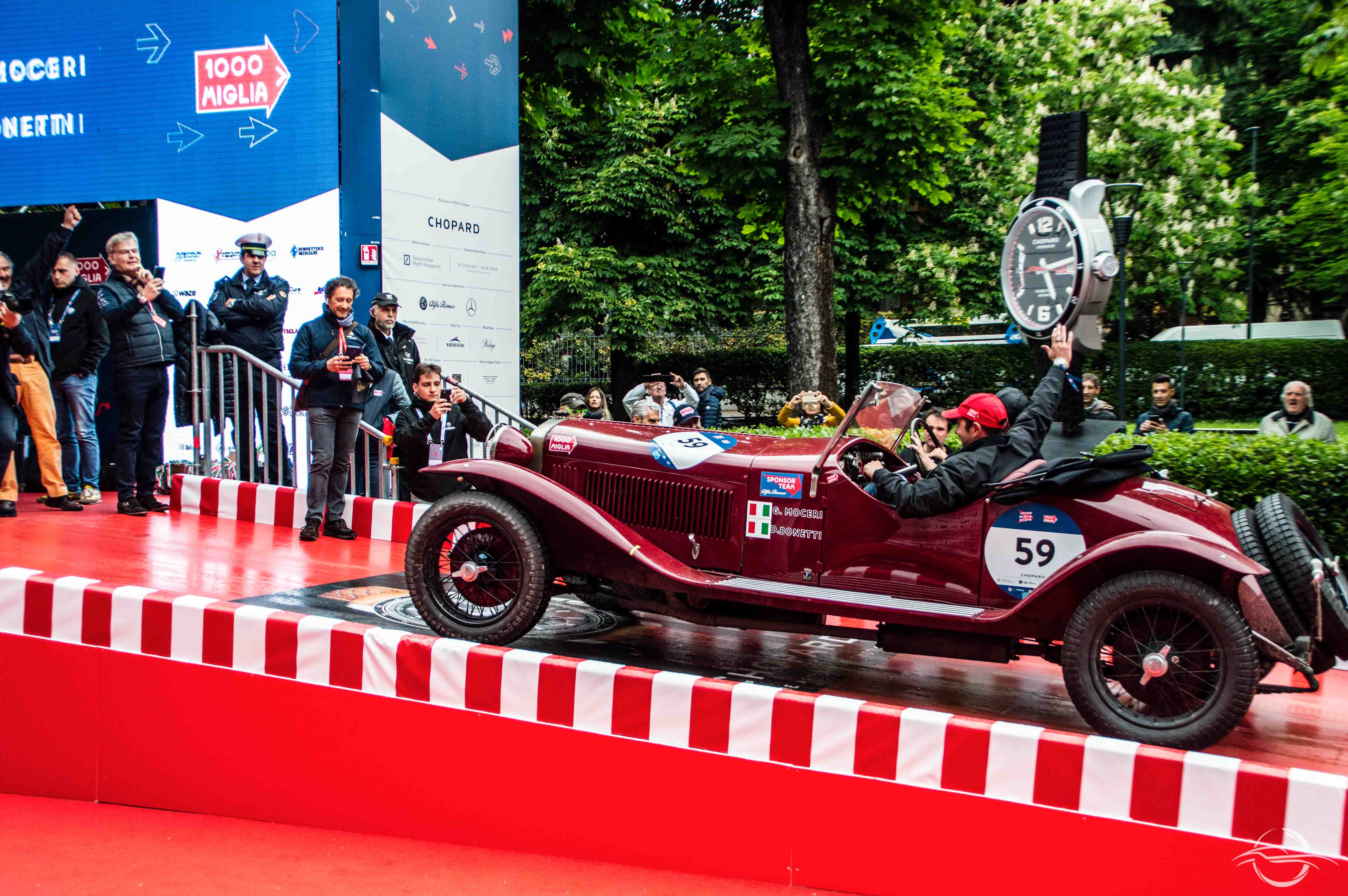





In second place another Alfa Romeo, the 6C 1750 SS Zagato from 1929, the 6-cylinder 1752cc engine, with the veterans of regularity: Andrea Vesco and Andrea Guerini.
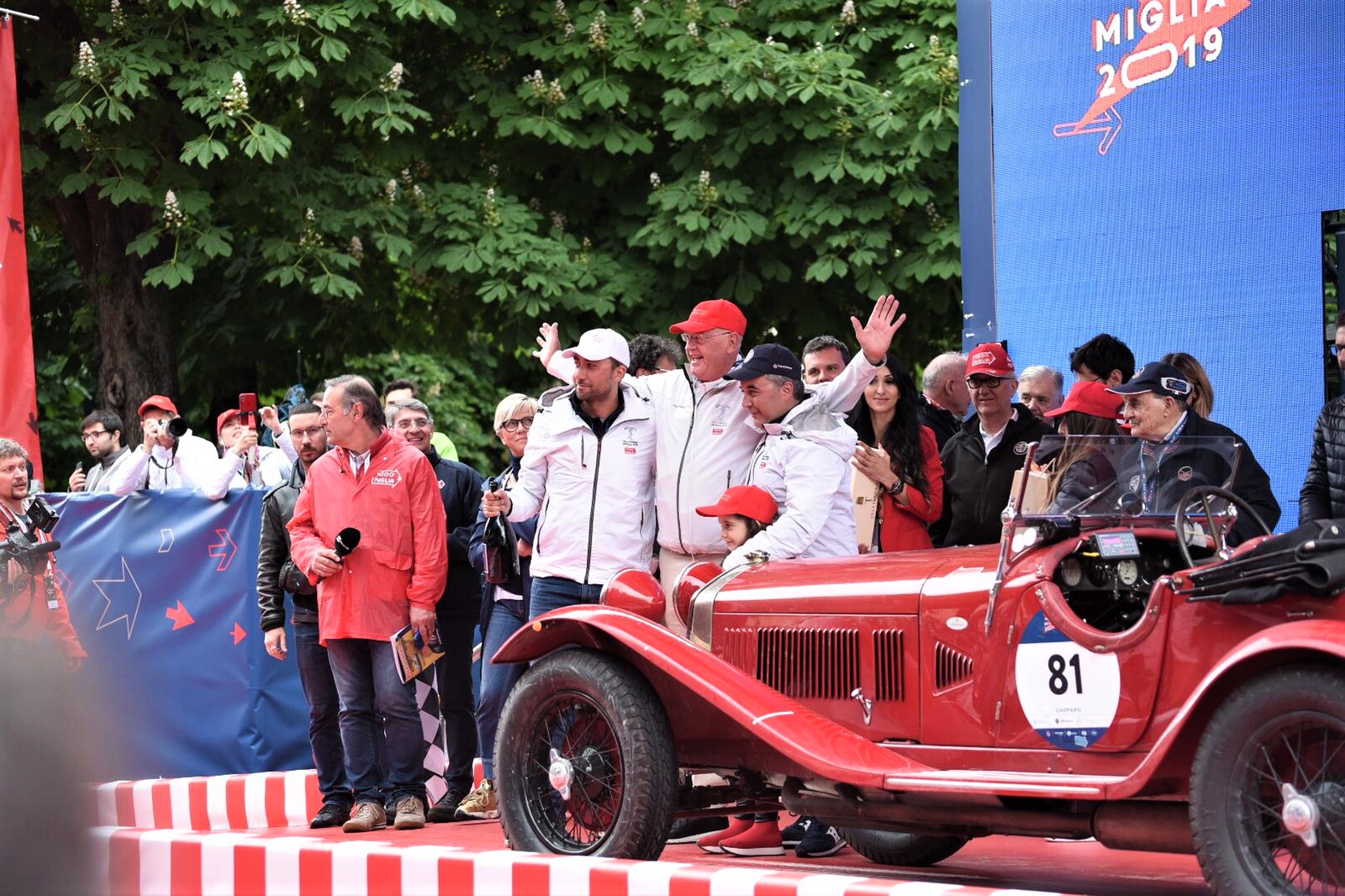
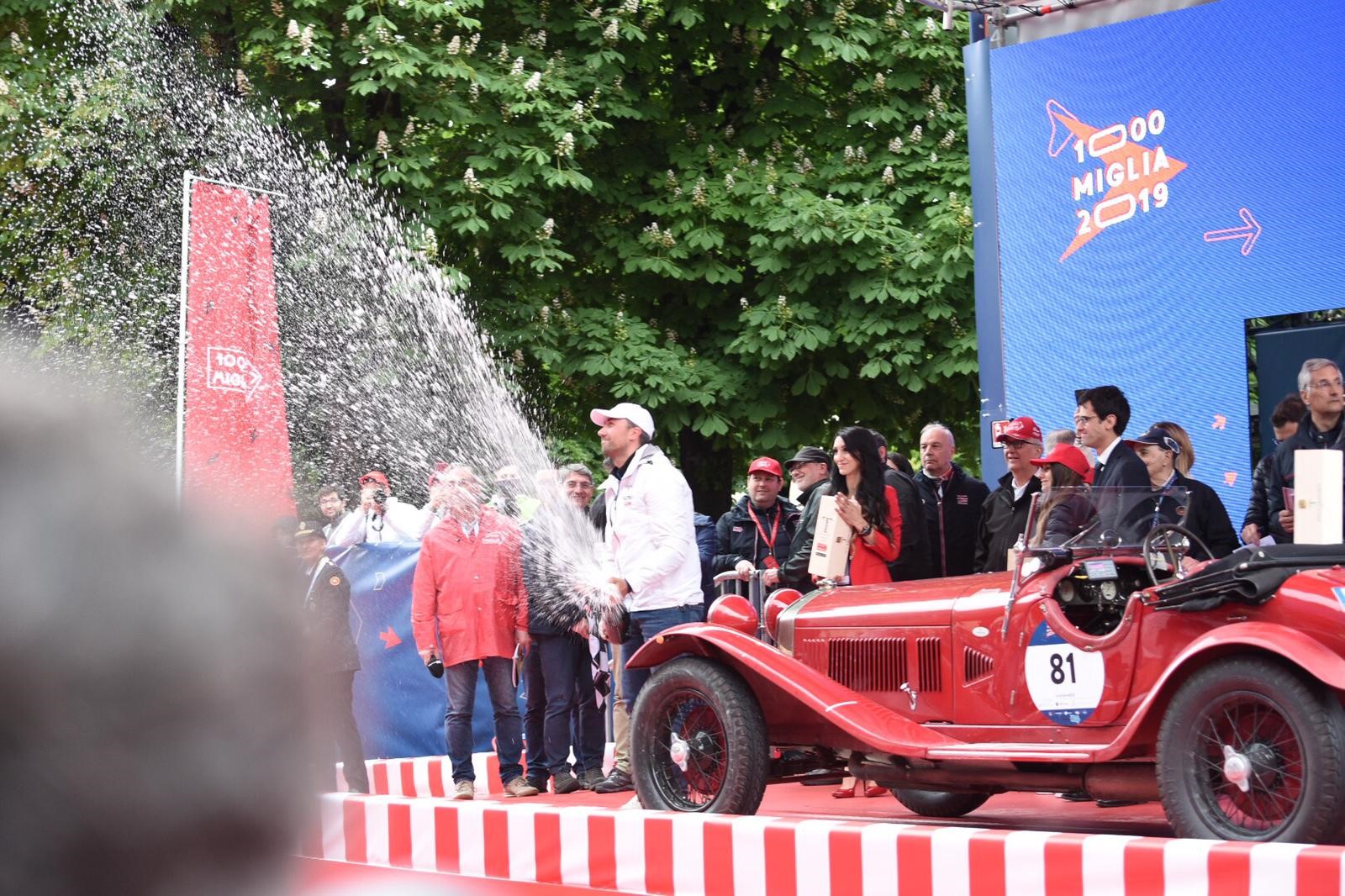
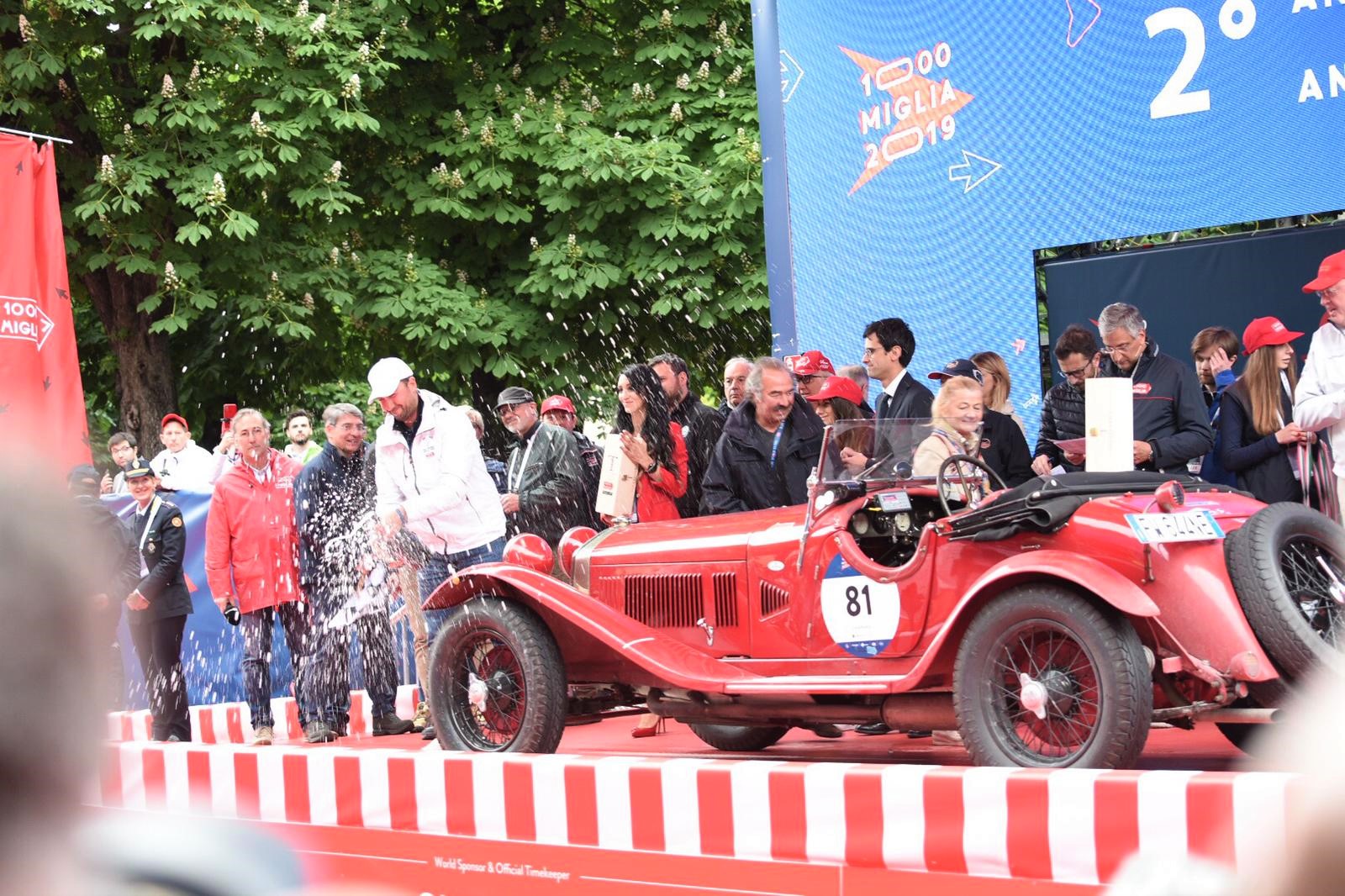




A Bugatti Type 40 from 1927 in third place, with the Juan Tonconogy and Barbara Ruffini.
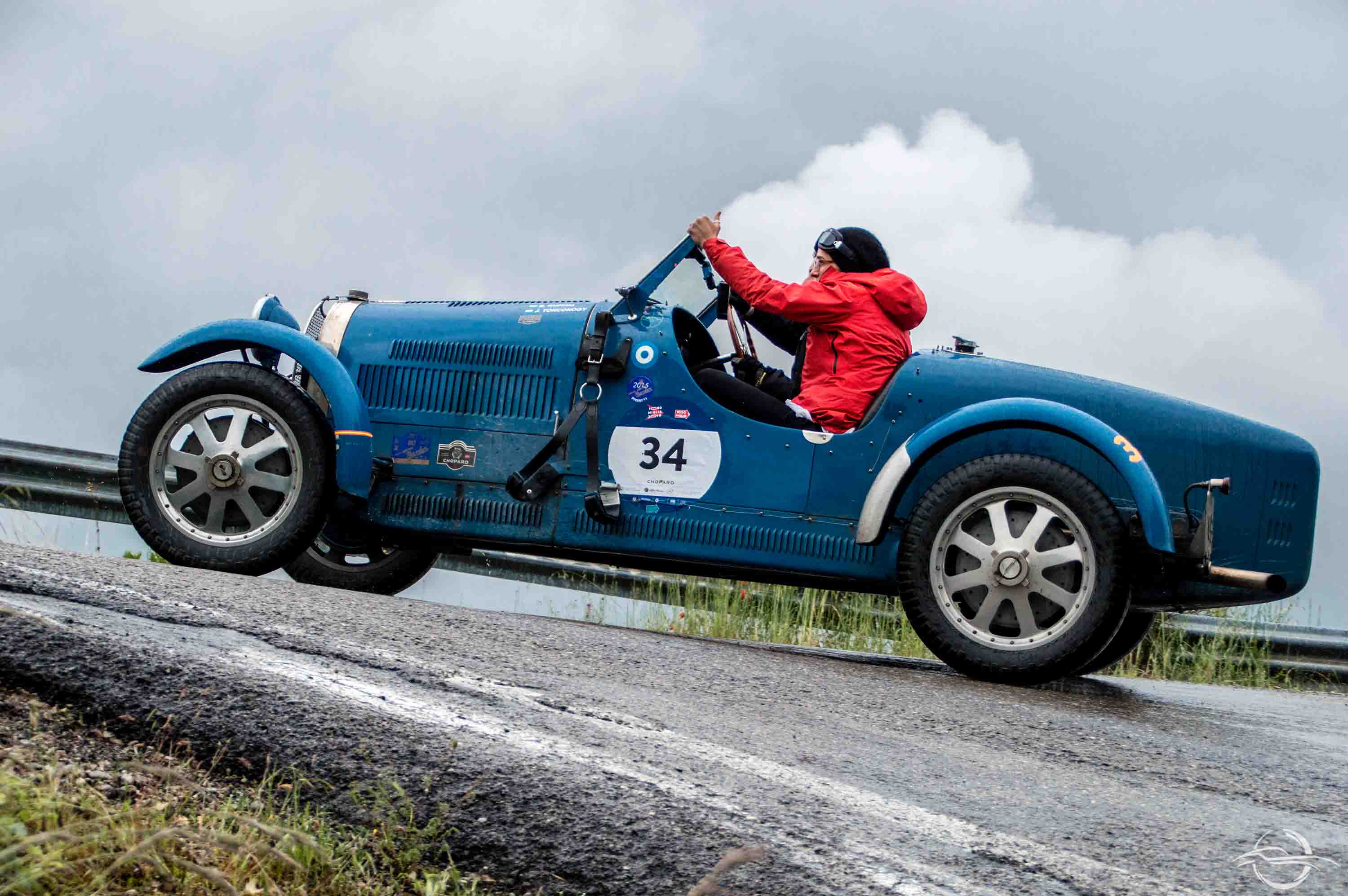
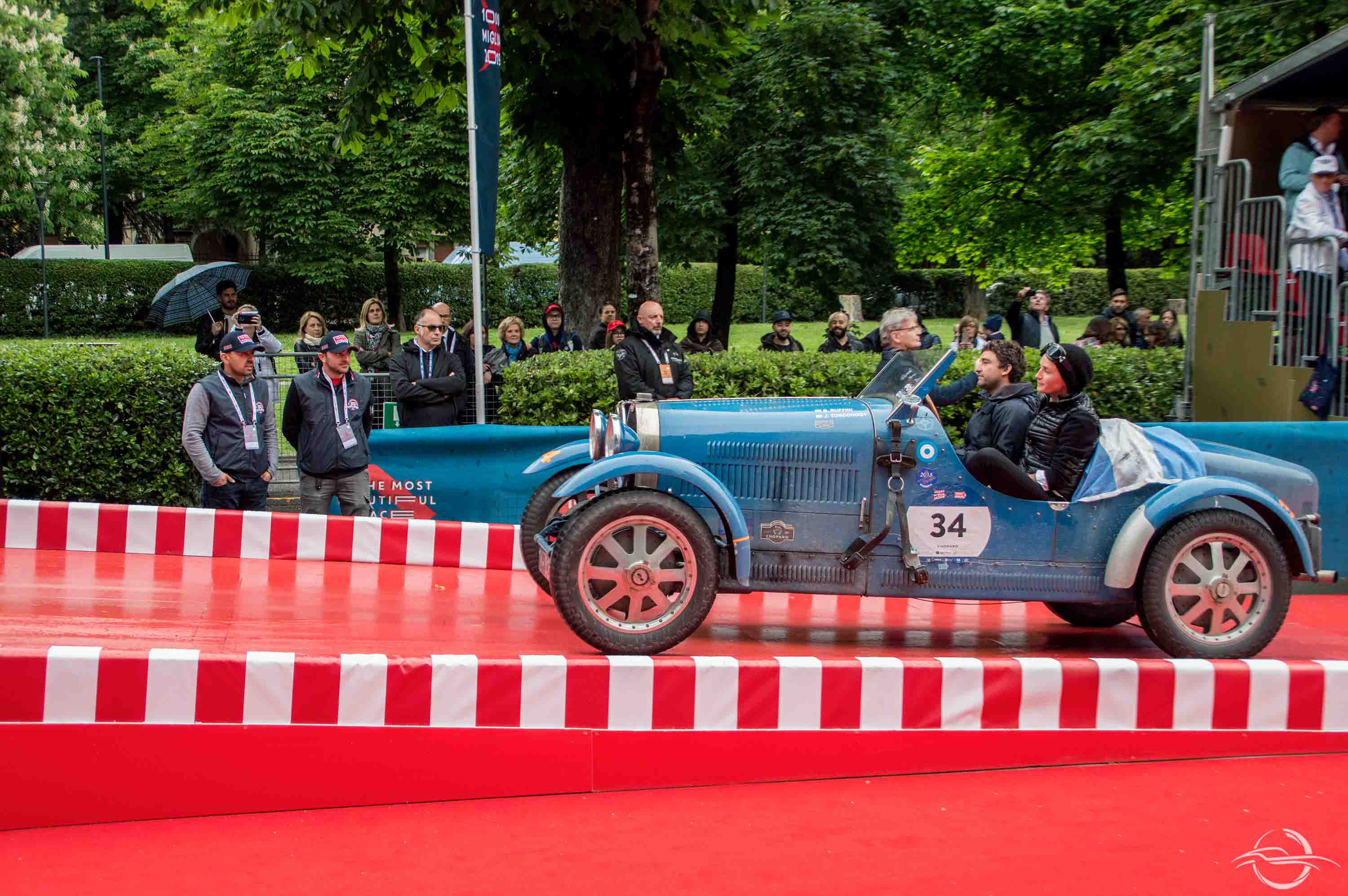





The complete classification for the Mille Miglia 2019 may be found at this link.
Next year we’ll ask our roads to tell us about the Mille Miglia and the restorers to “show” us these masterpieces.
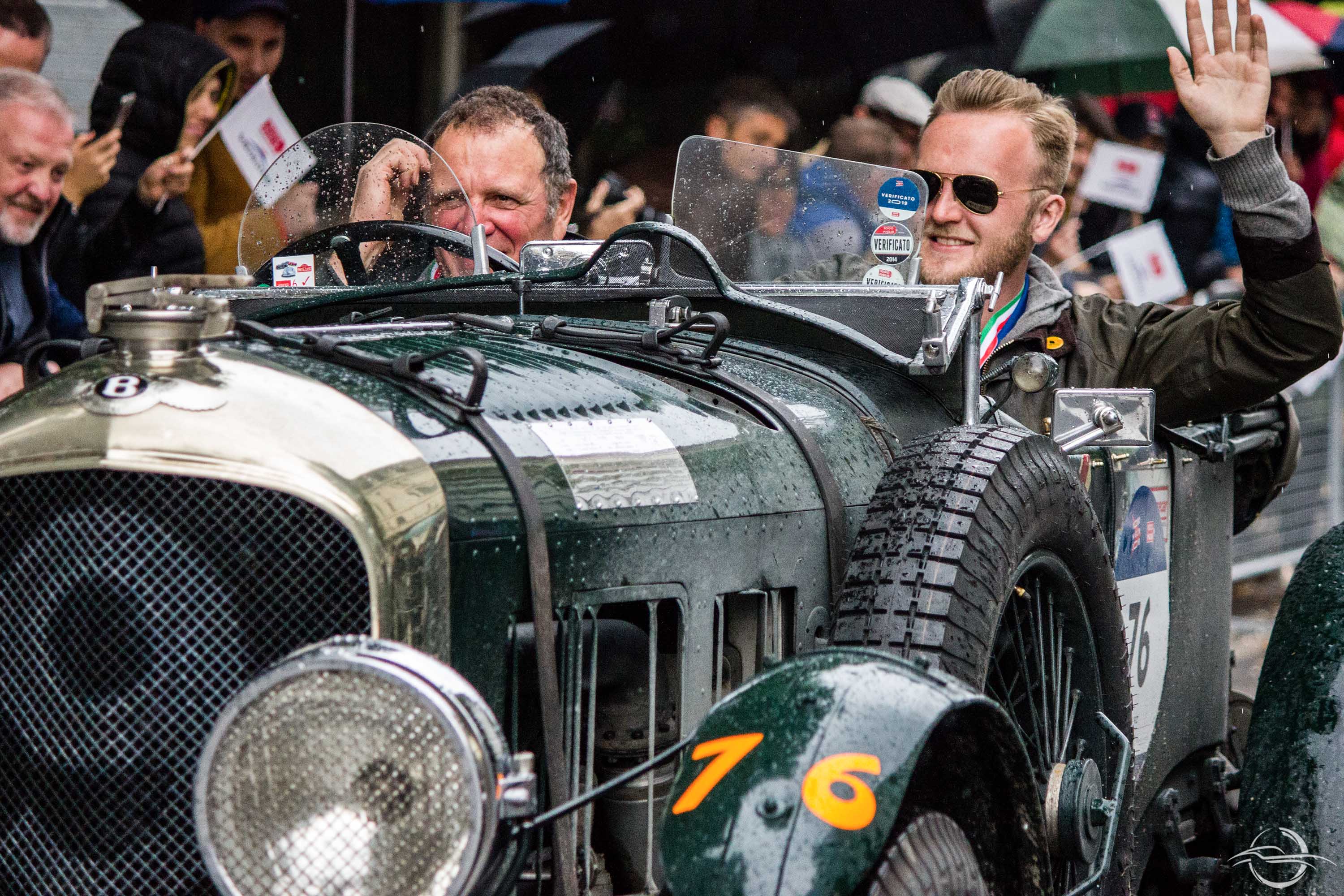
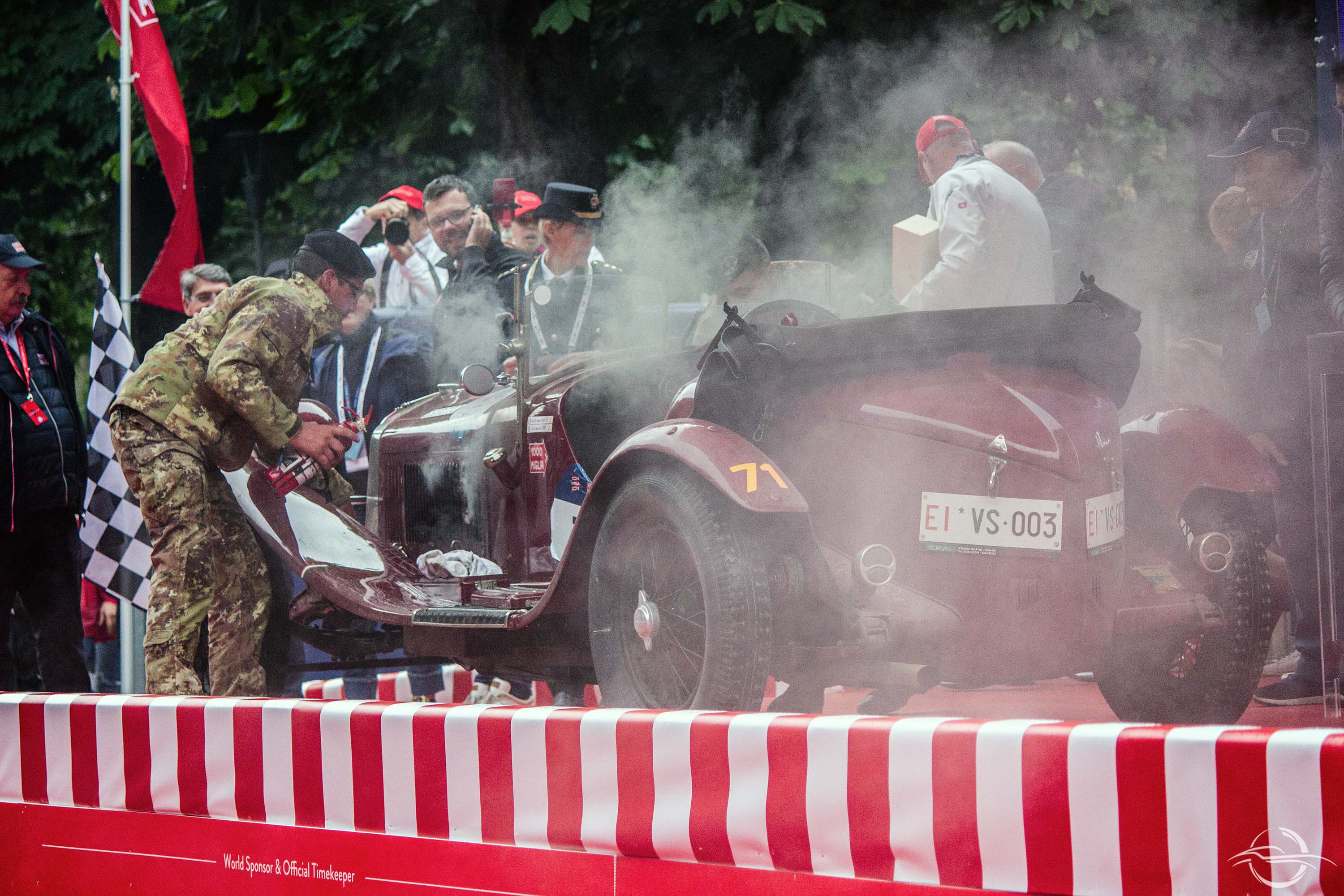
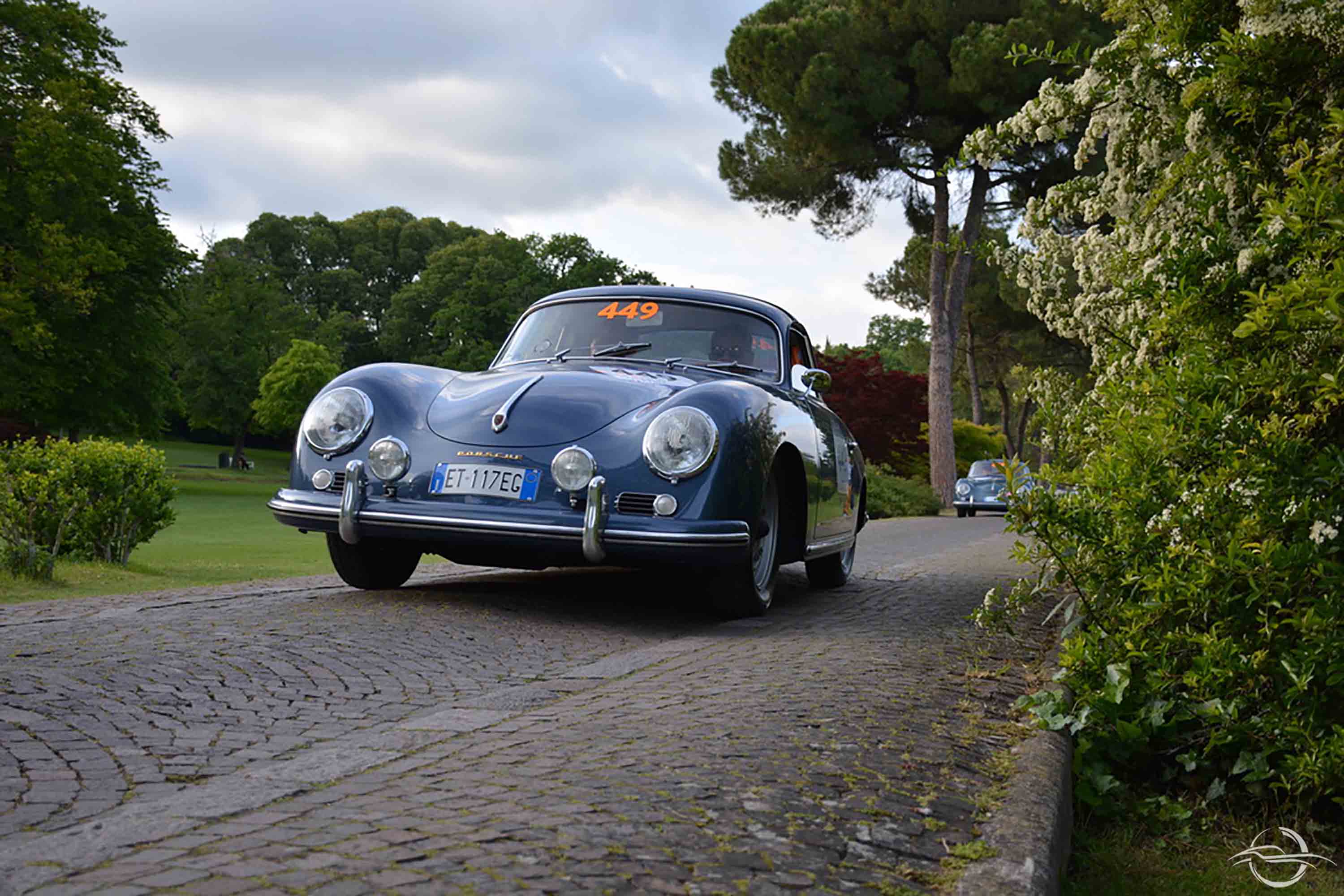
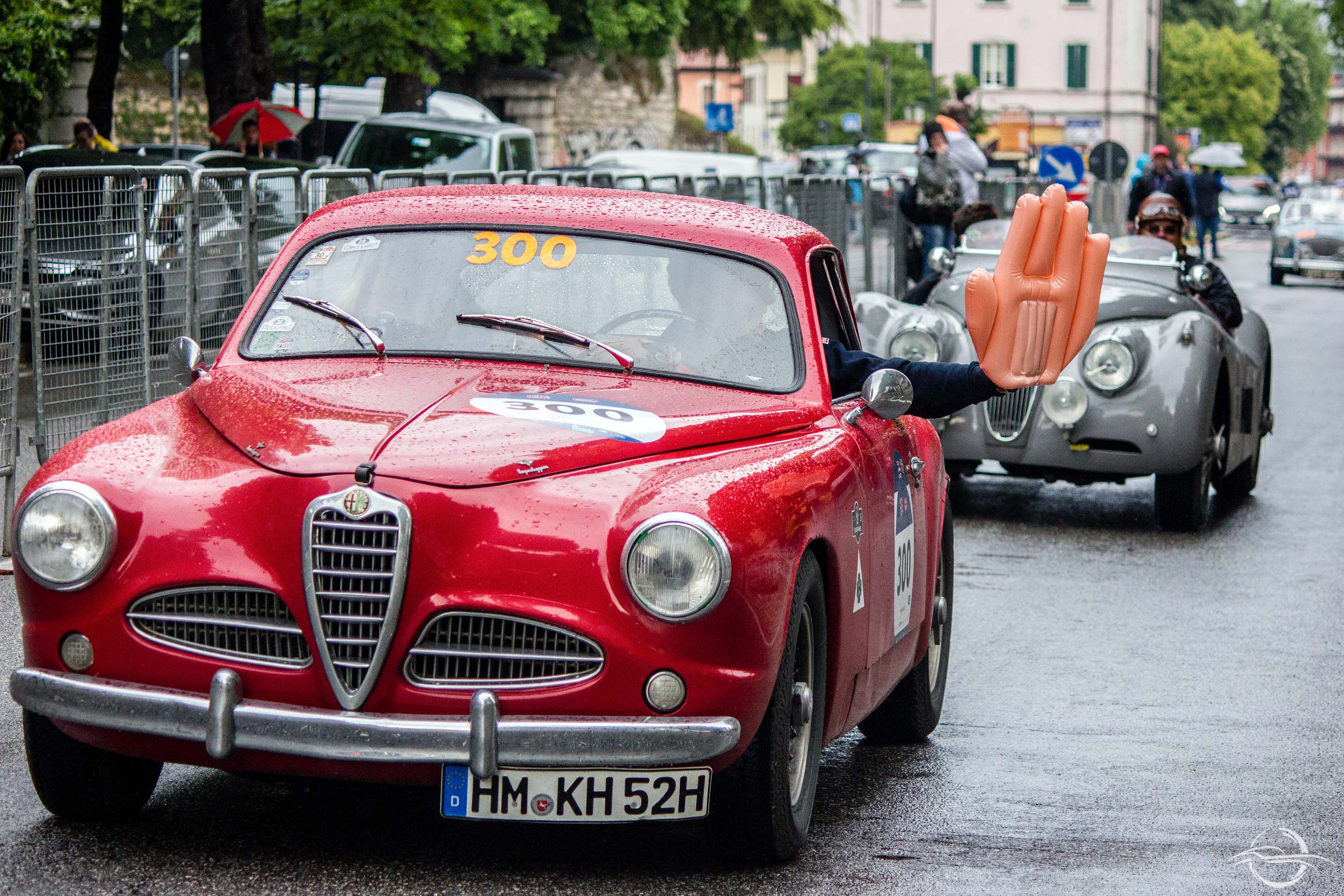
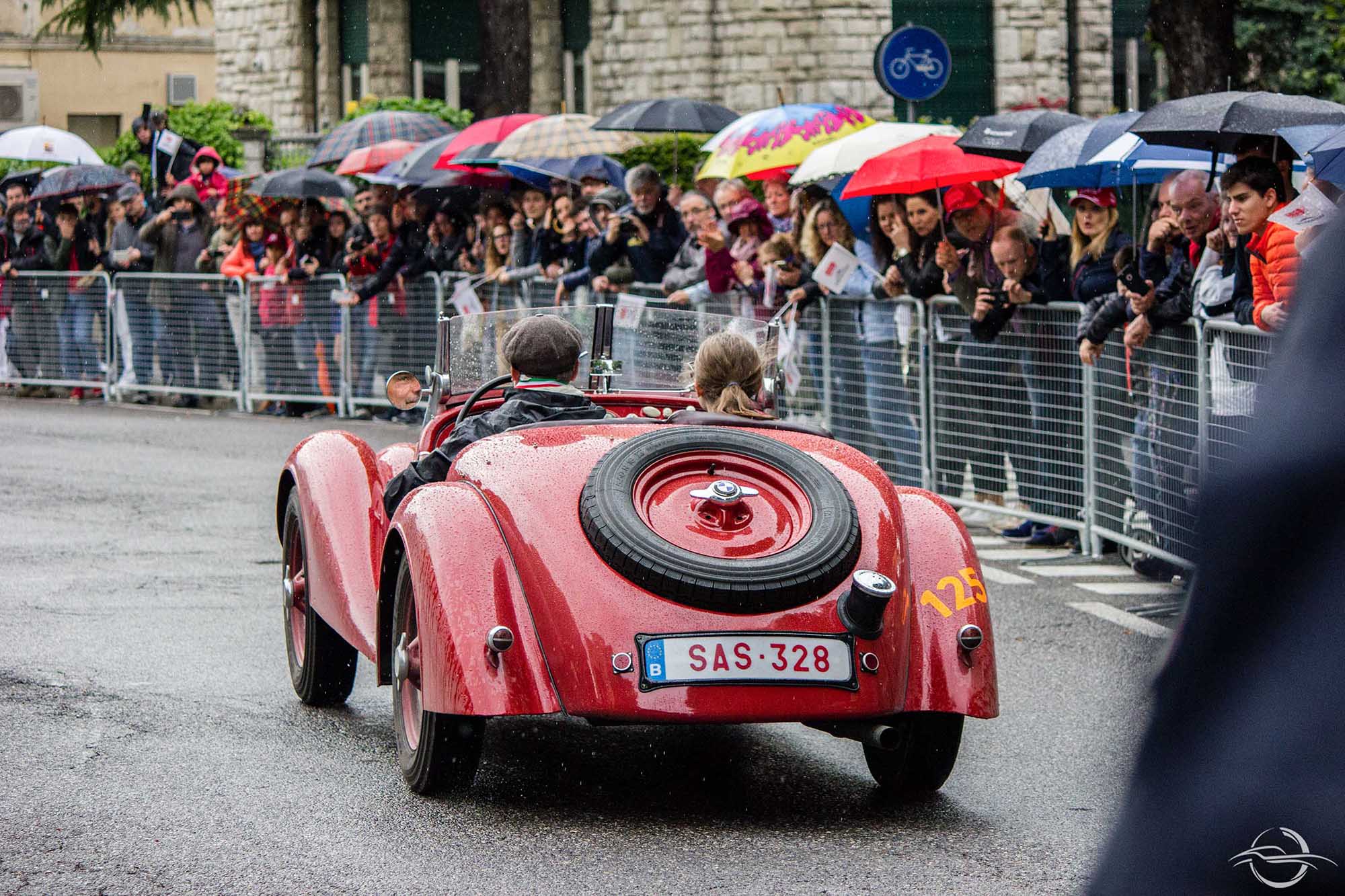
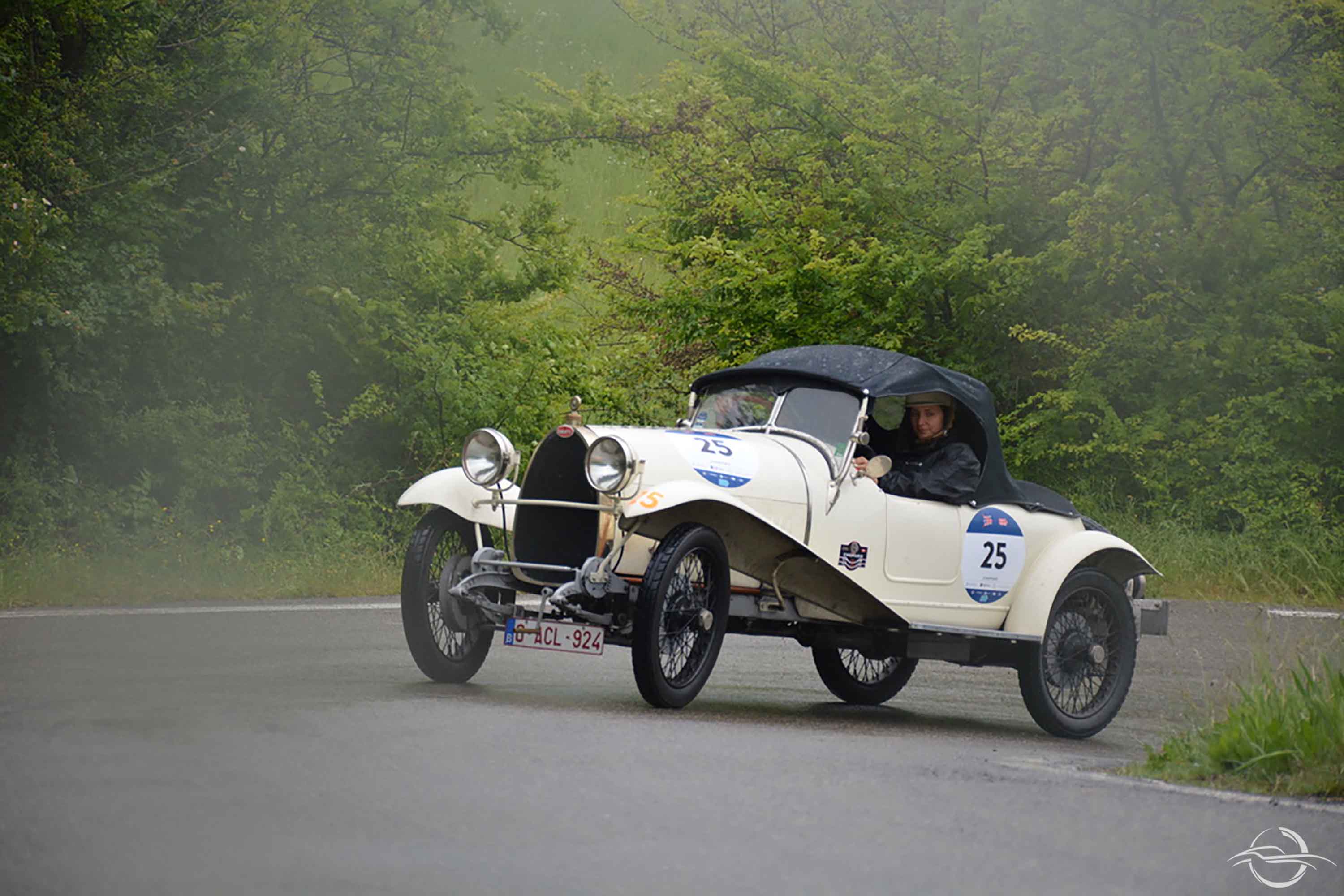









While waiting on next year, the grandfather, the grandson Filippo and myself will hold the memory of the most beautiful race in Italy, in the World!
